08 May Macro Photography in South Africa 2023

Every year (if possible) I escape the cold german winter and instead spend a month (or more) in Cape Town to enjoy the south african summer season.
My trusty macro setup is always by my side and every year I discover species I have not photographed before.
Here is a small report about my 2023 trip to the so called Mother City and my favorite finds.
Suburban Backyard macro
As Cape Town is surrounded by beautiful national parks & botanical gardens, it is no wonder that you will find plenty of tiny wildlife in the suburban areas, including backyards and gardens of the houses and also along the streets.
A spider with a very fitting name, is the so called “flattie”, named after its behavior to press its body flat against surfaces.
They are extremely fast runners and can reach a decent size, too.
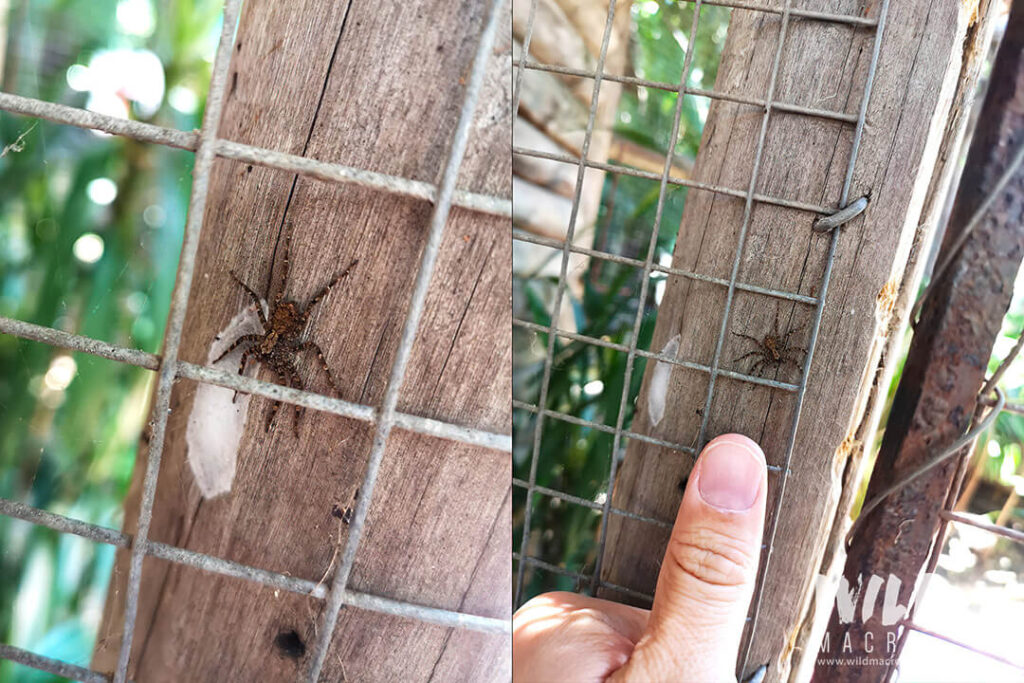
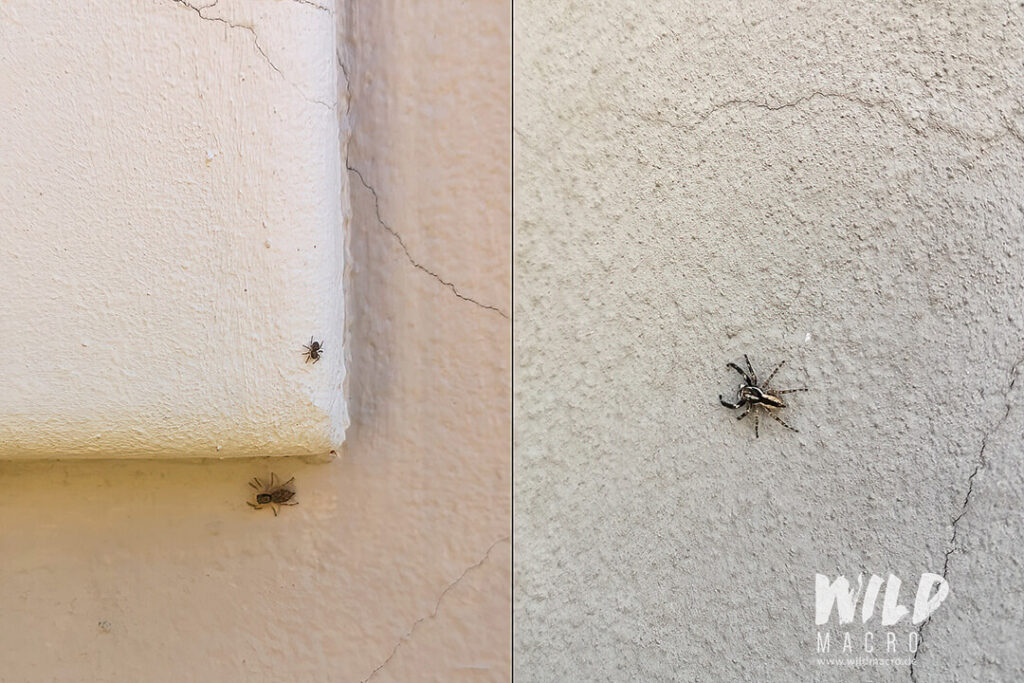
Literally always close are the jumping spiders – some species can be encountered on almost every wall, depending on time and weather conditions.
Two species absolutely predominate: Hasarius adansoni and Menemerus bivittatus.
Hasarius adansoni female

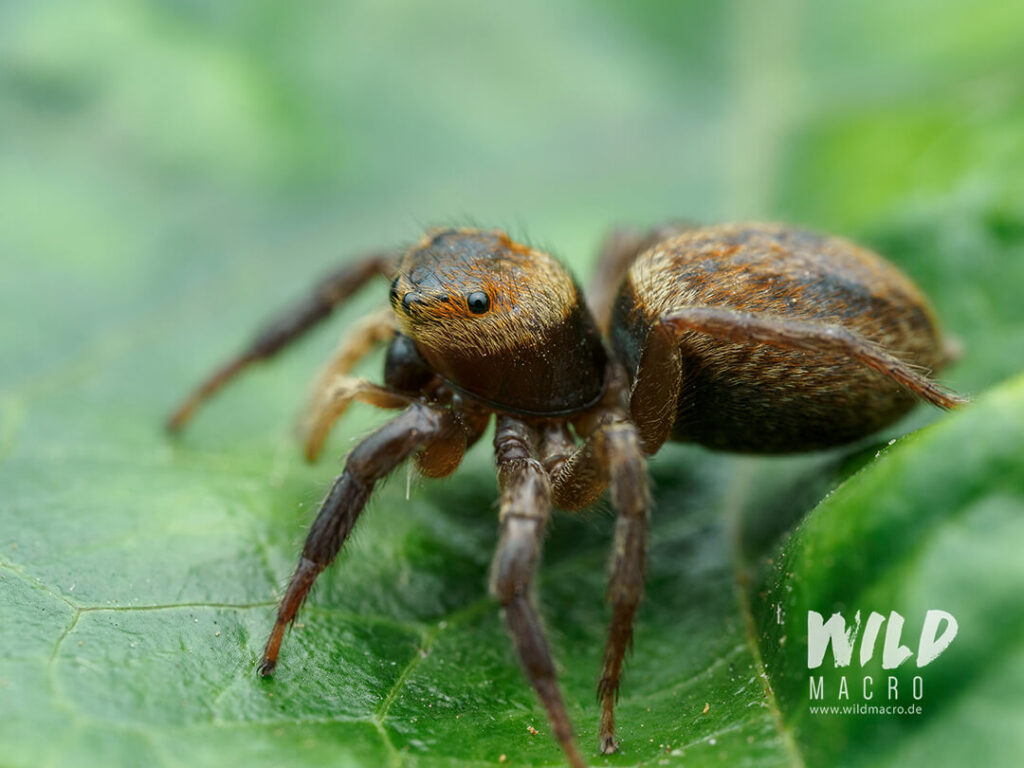
Hasarius adansoni male
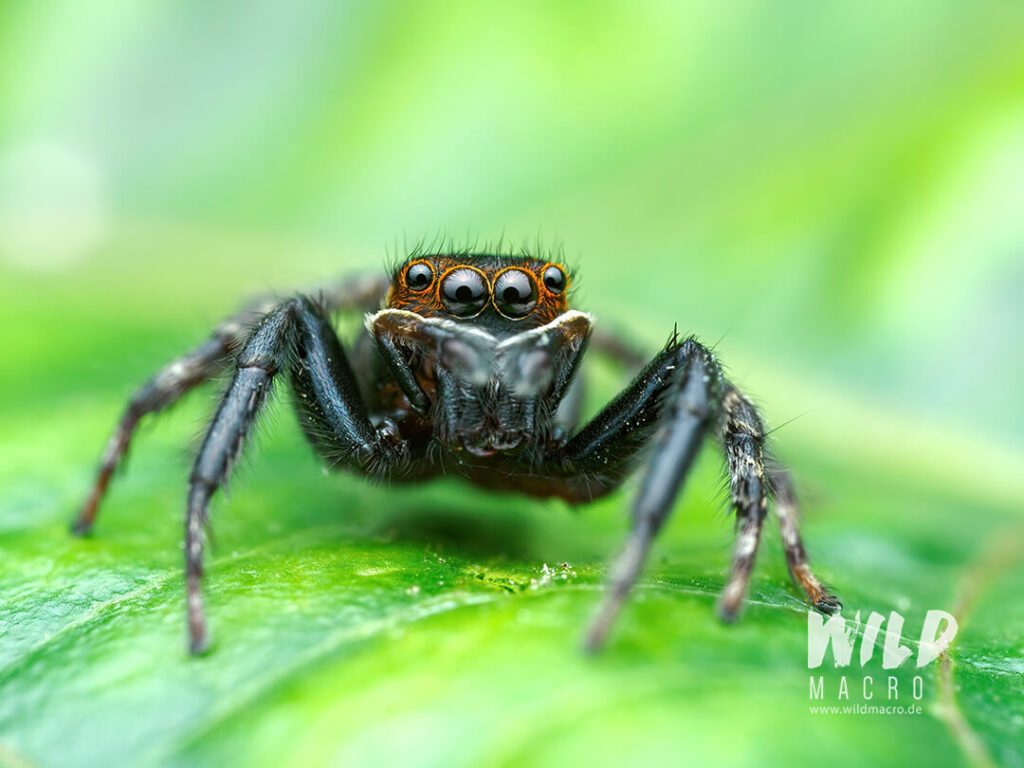
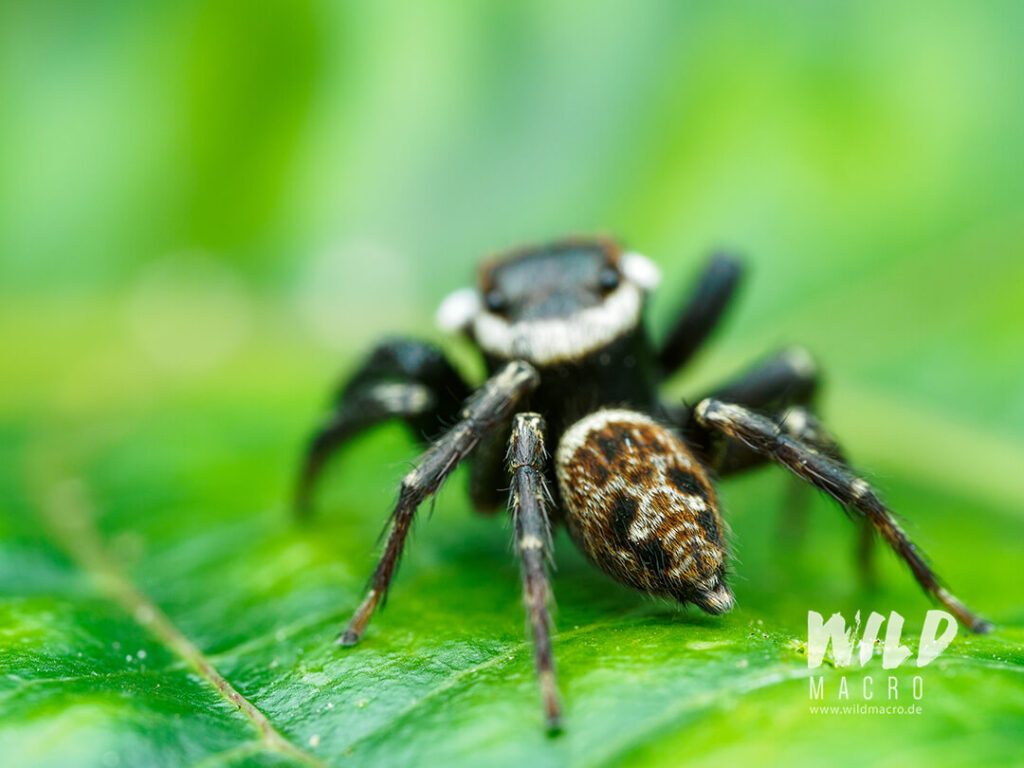
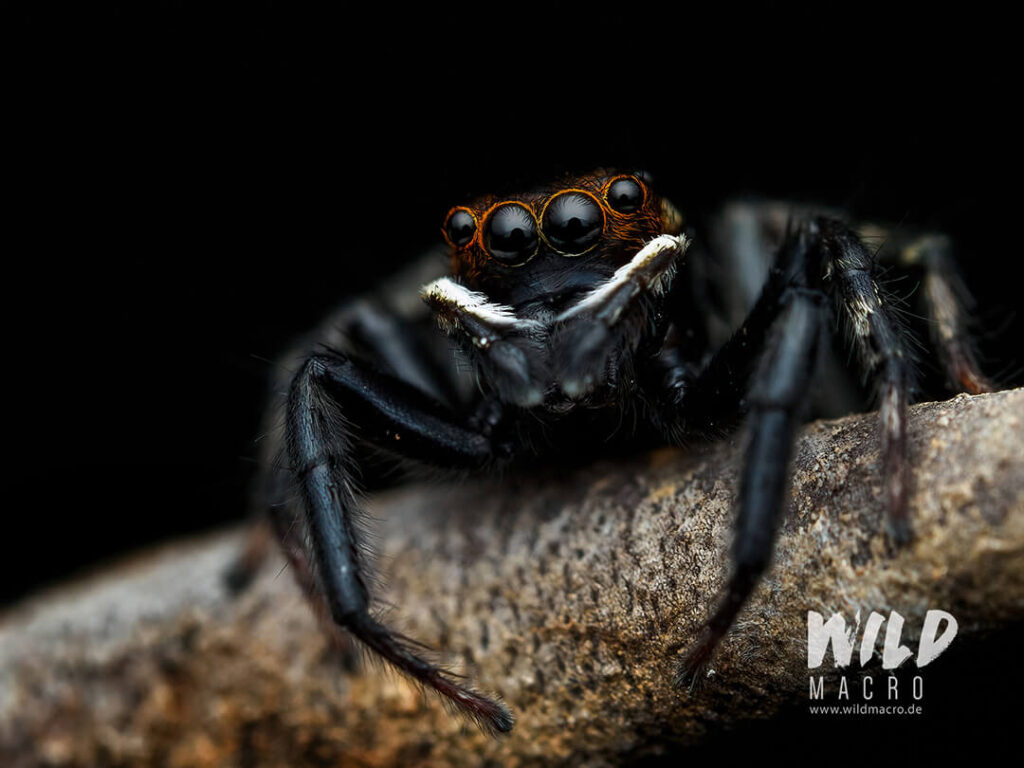
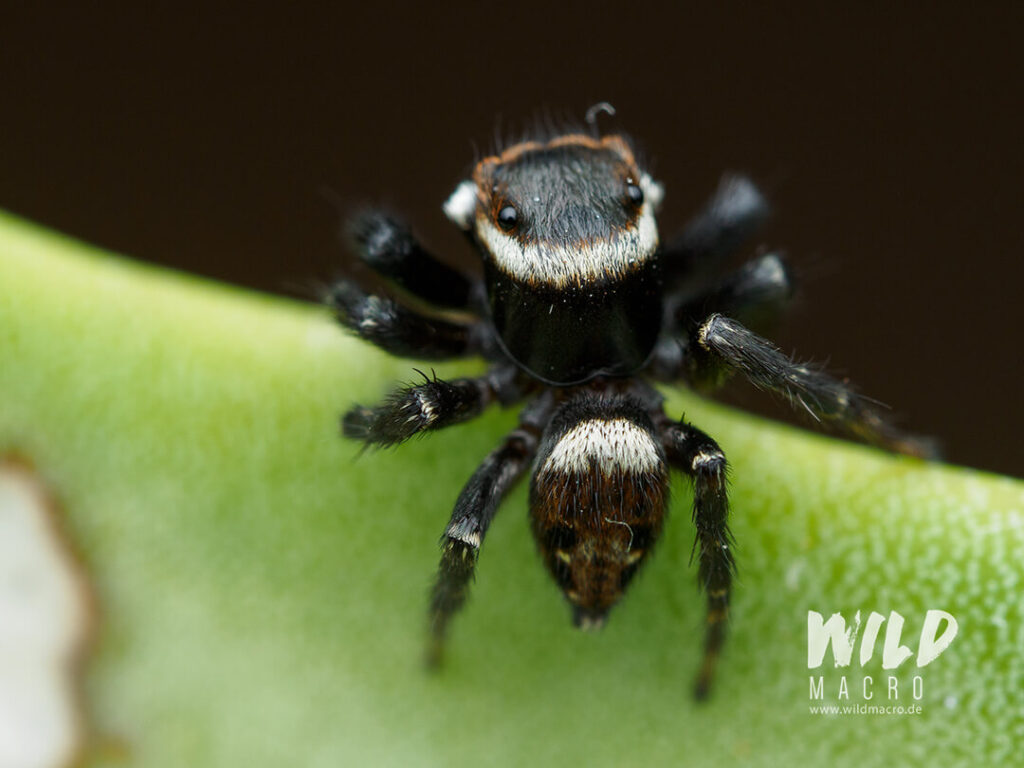
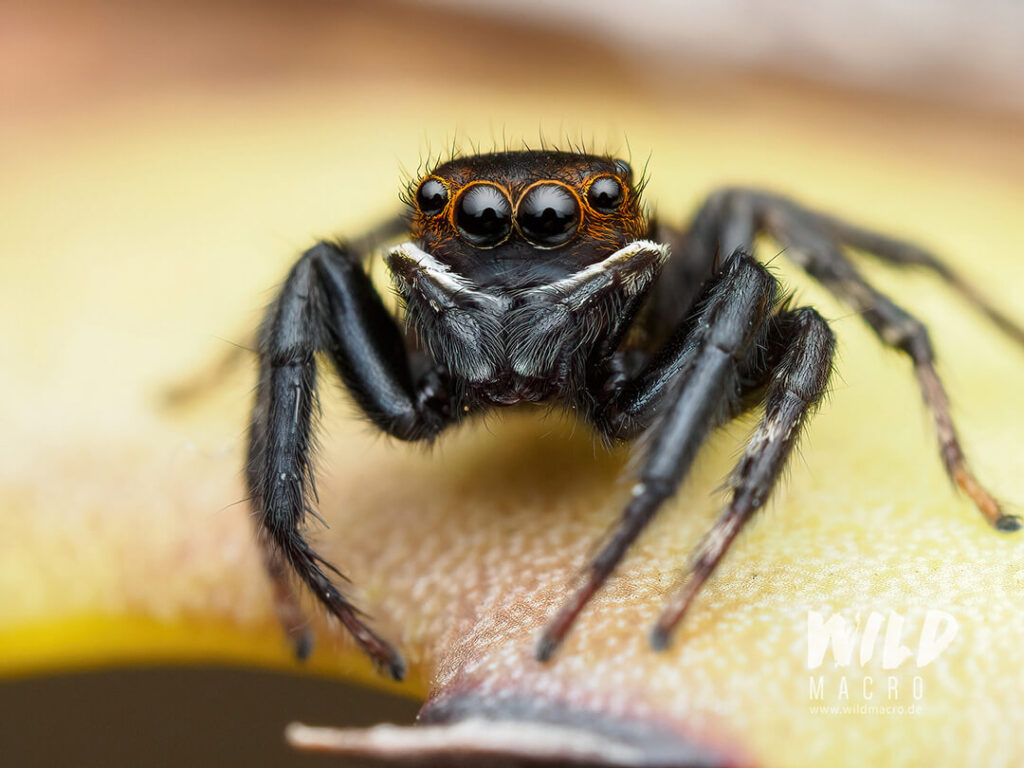
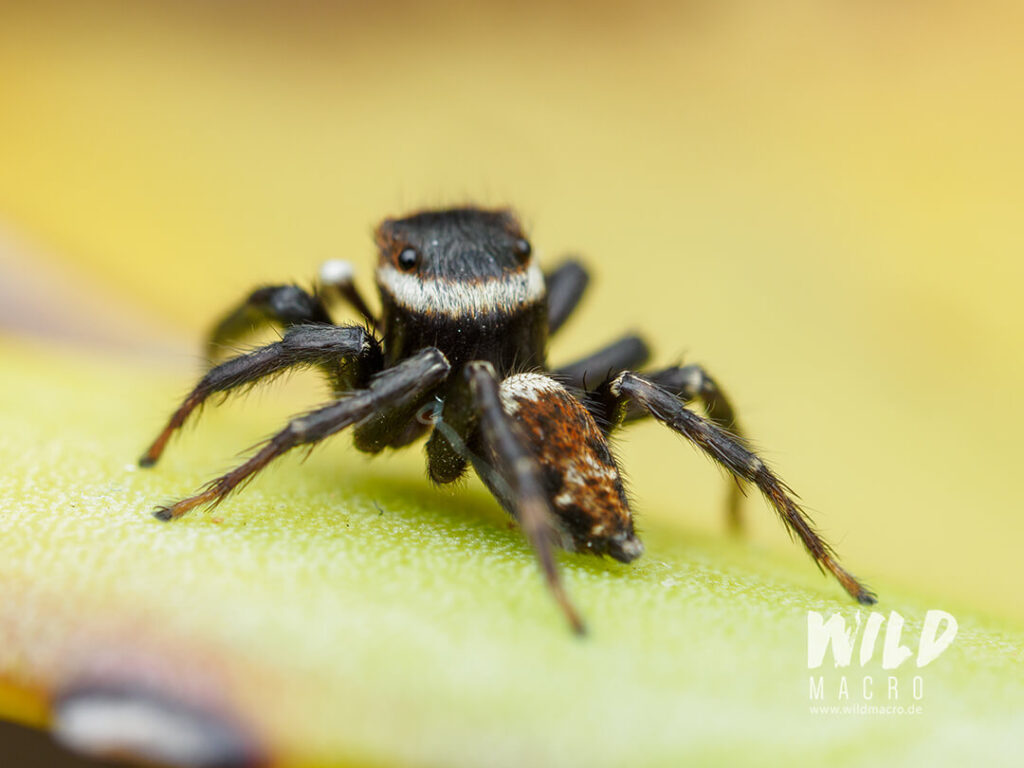
Menemerus bivittatus female
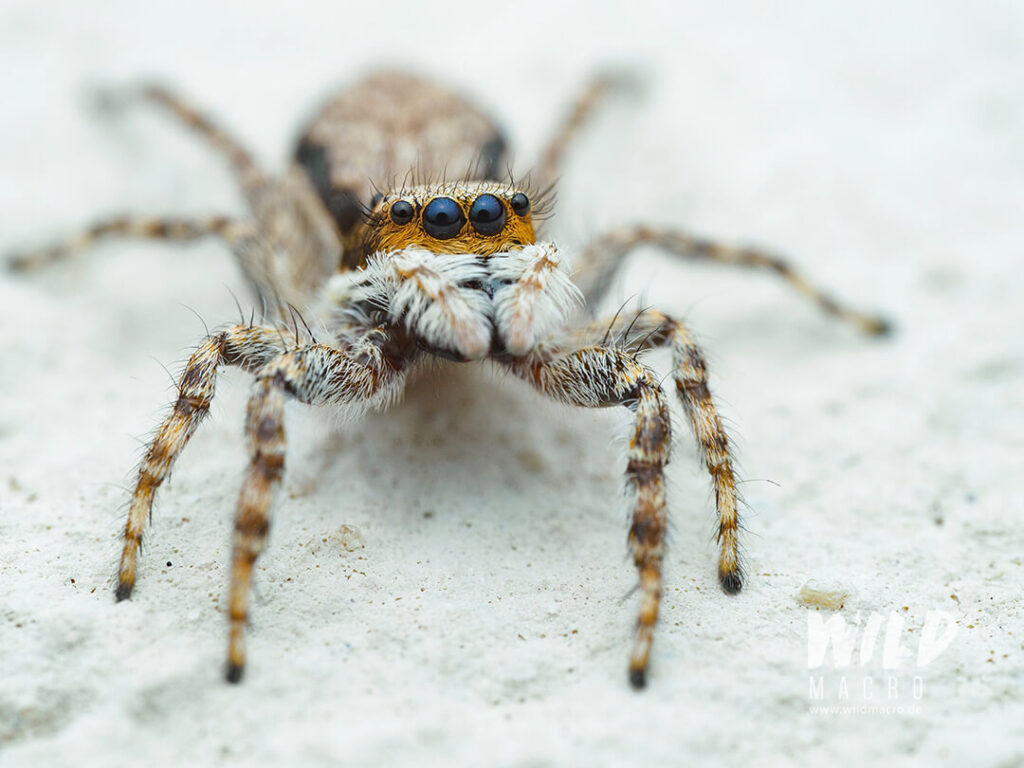
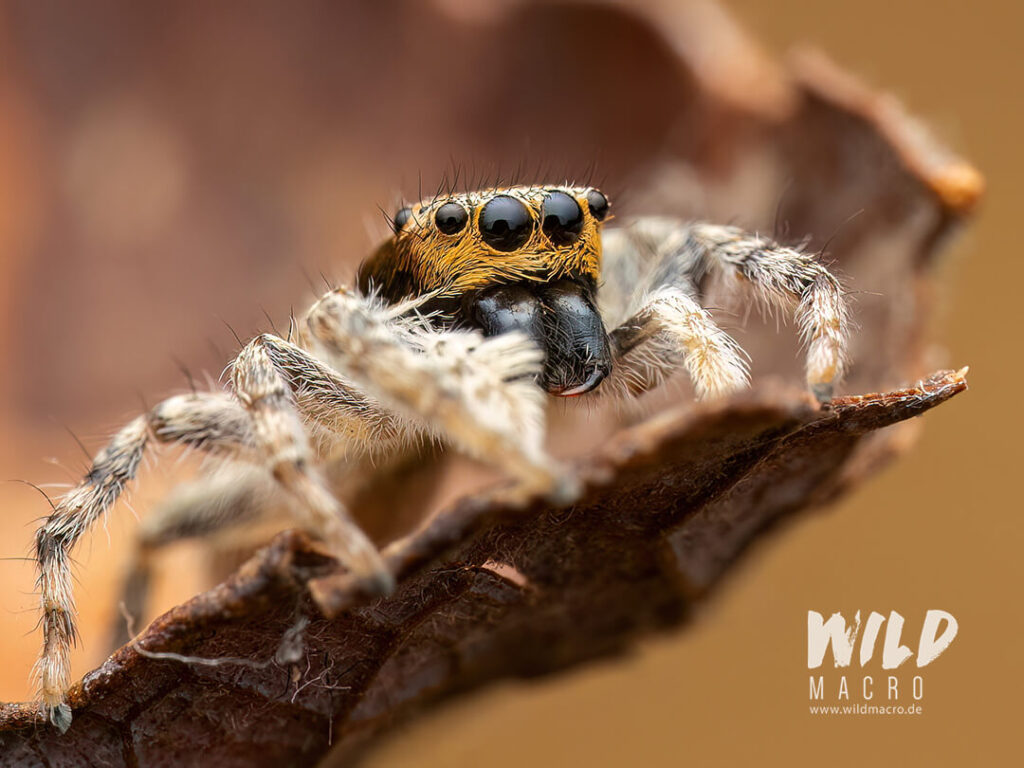
Menemerus bivittatus male

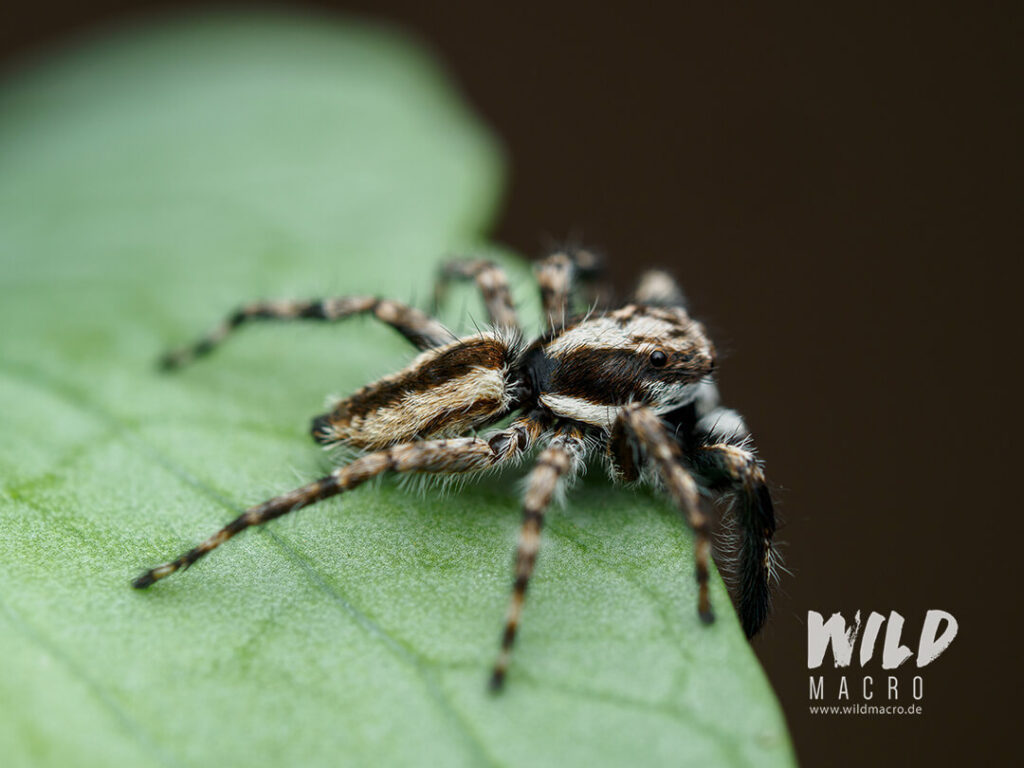
While the above mentioned species prefer to stay very close to human settlements, other species prefer plant-based habitats and can be found on plants, in grass and in leaf litter.

I found this specimen, which I suspect to be a Heliophanus species, on Table mountain.
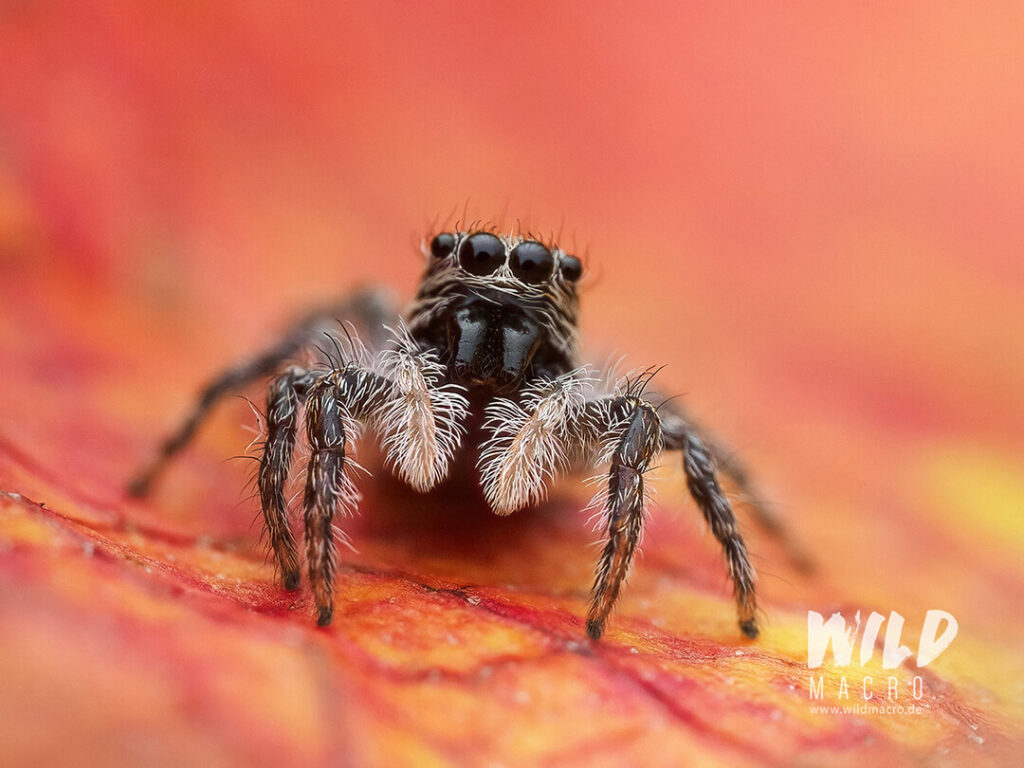

Another new species for me was this beautiful specimen, which i could not identify yet, but think it also is a Heliophanus sp.
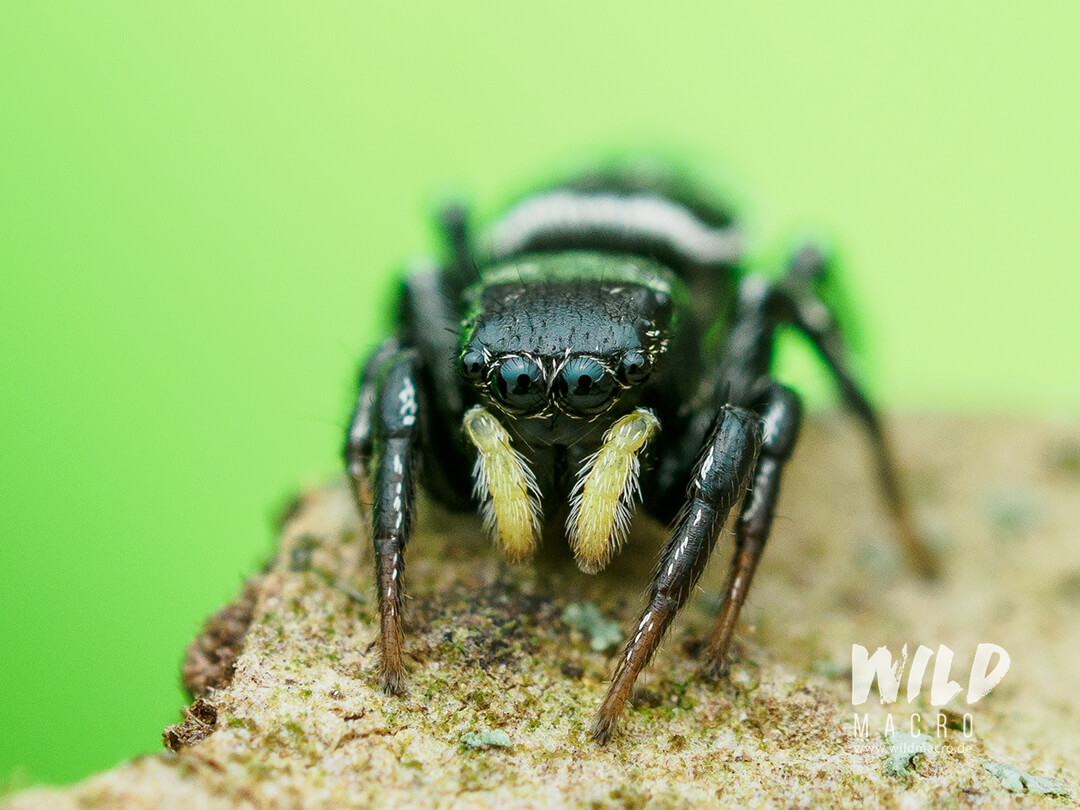
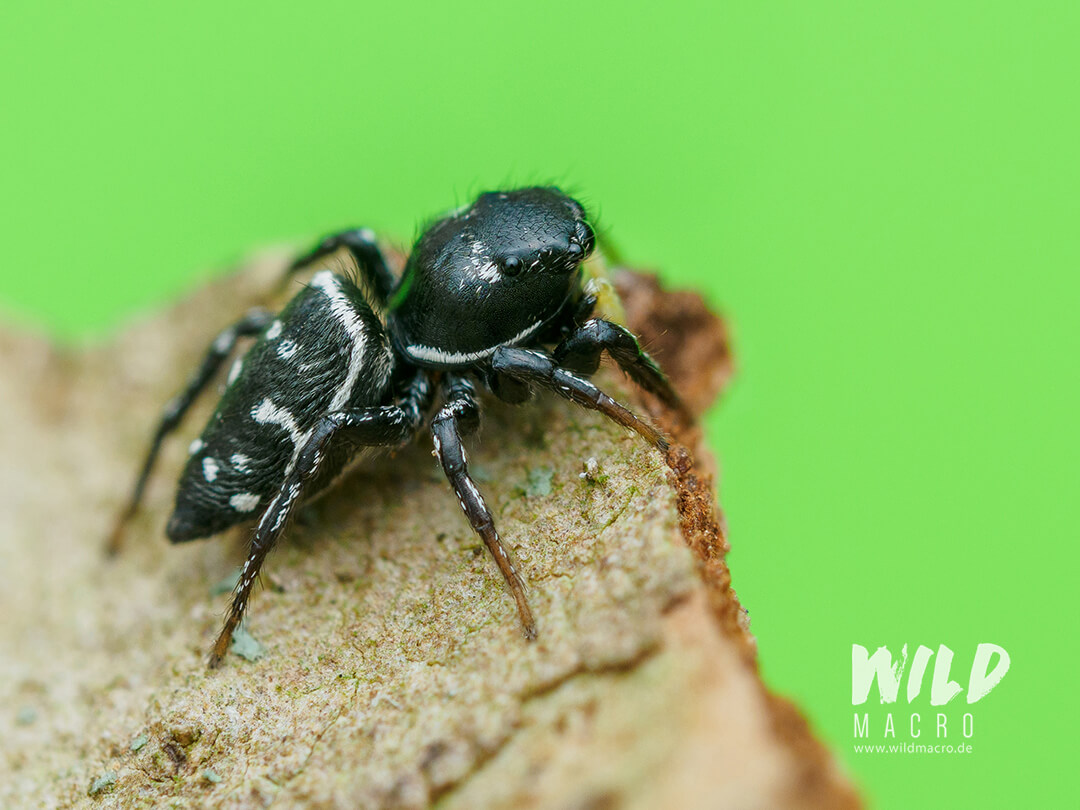
Ant mimicking jumping spiders, like this Myrmarachne laurentia, can also be both found out in nature, as well as right in the city, if ants are around.
Myrmarachne laurentia
Myrmarachne laurentia has very interestingly colored legs: if you watch closely, you will see that the legs appear thinner than they actually are, as they are almost transparent with a thin black line, resembling the thin ants´ legs.
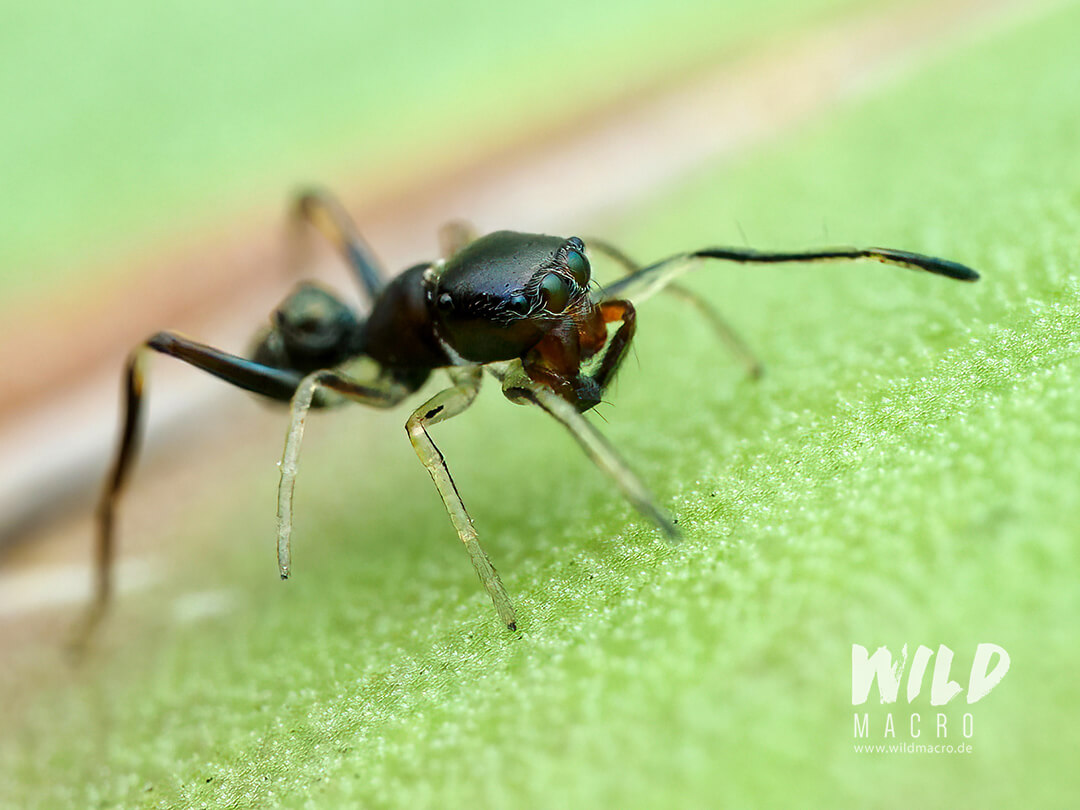
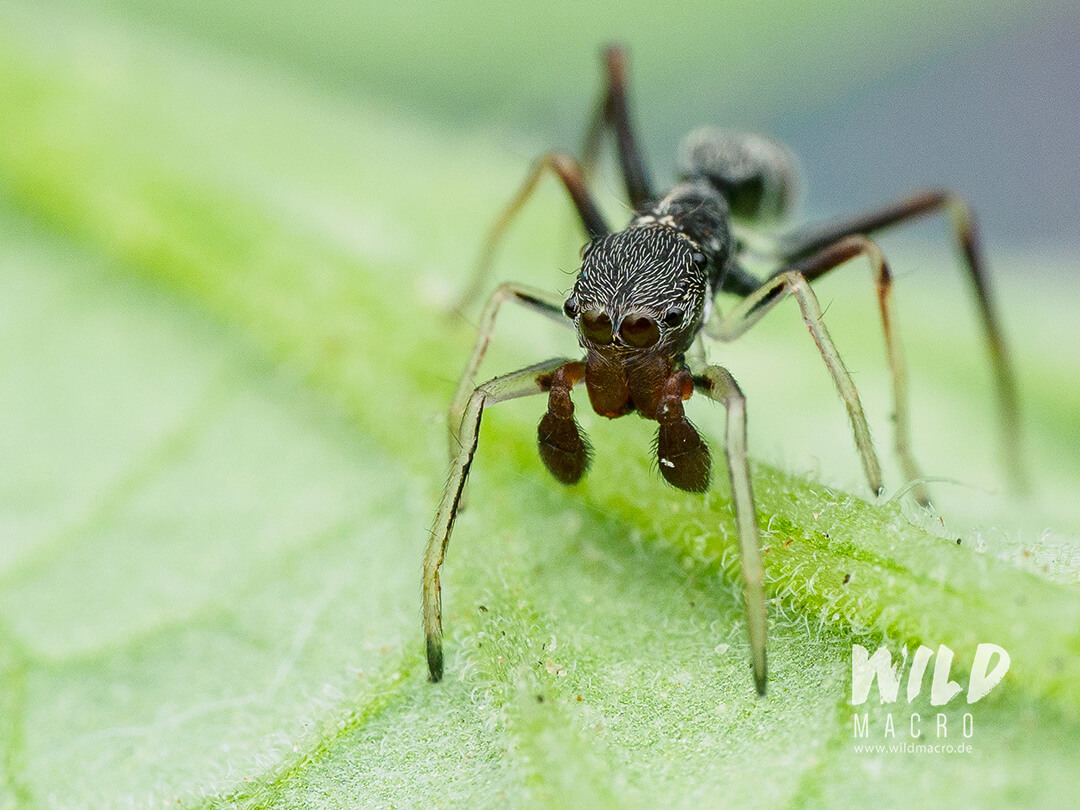
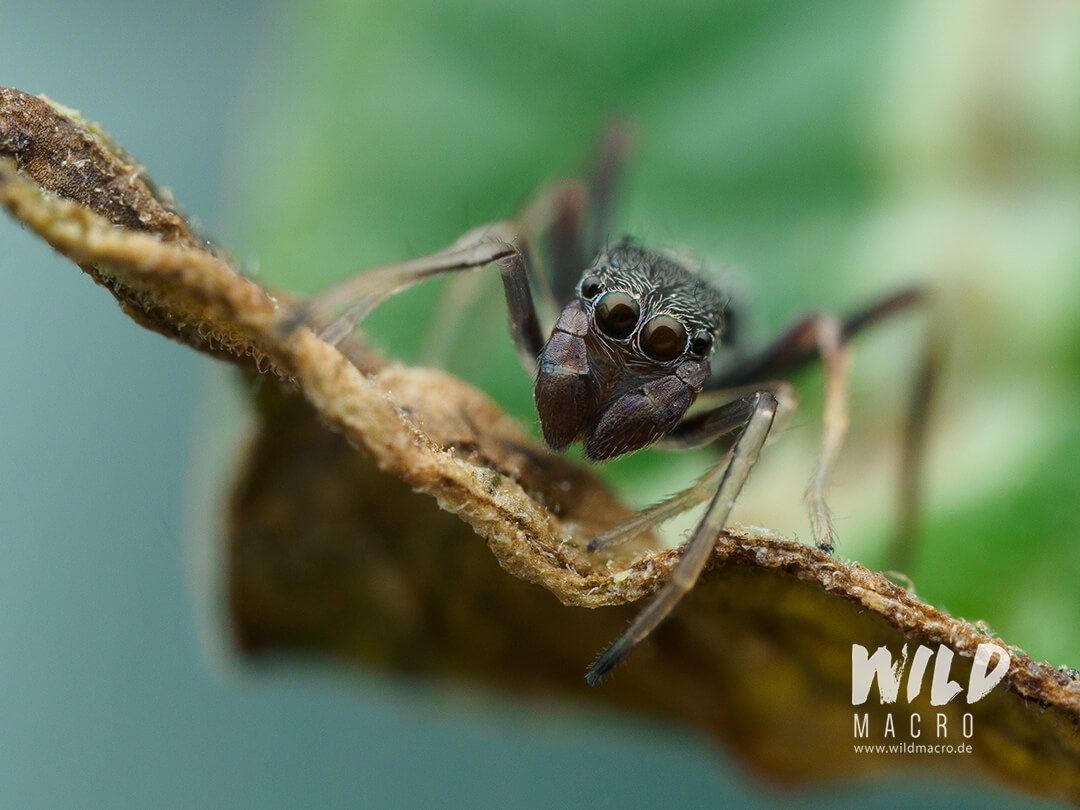
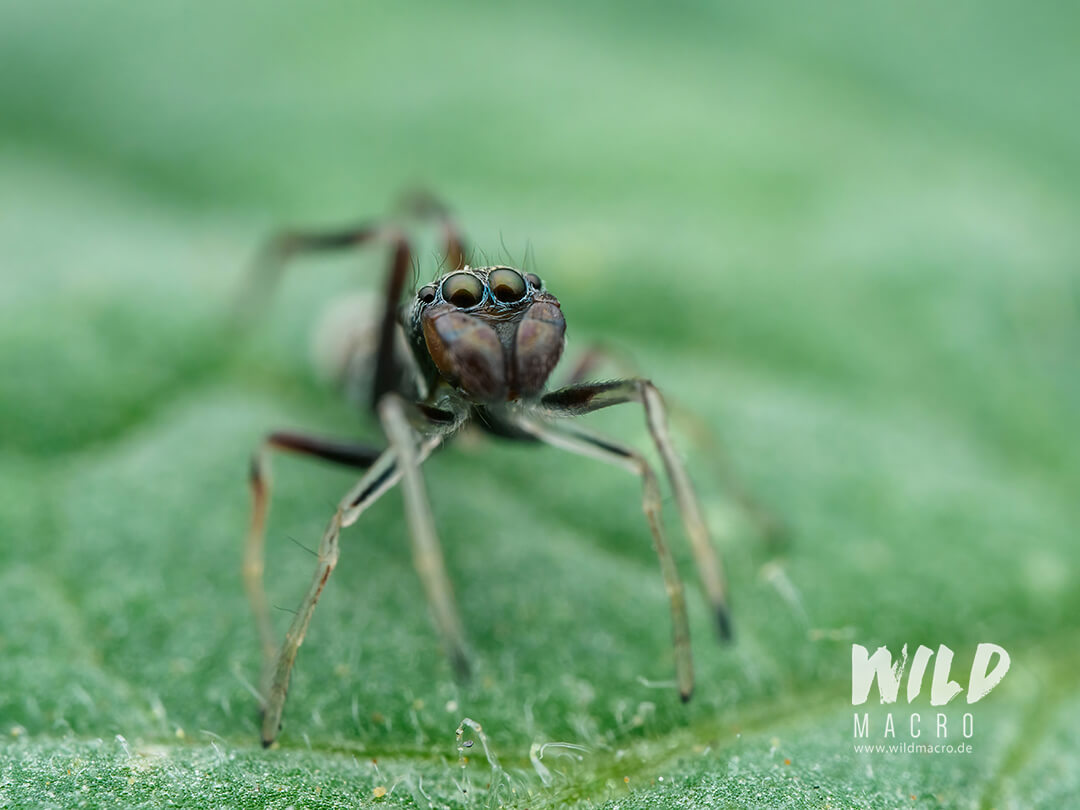
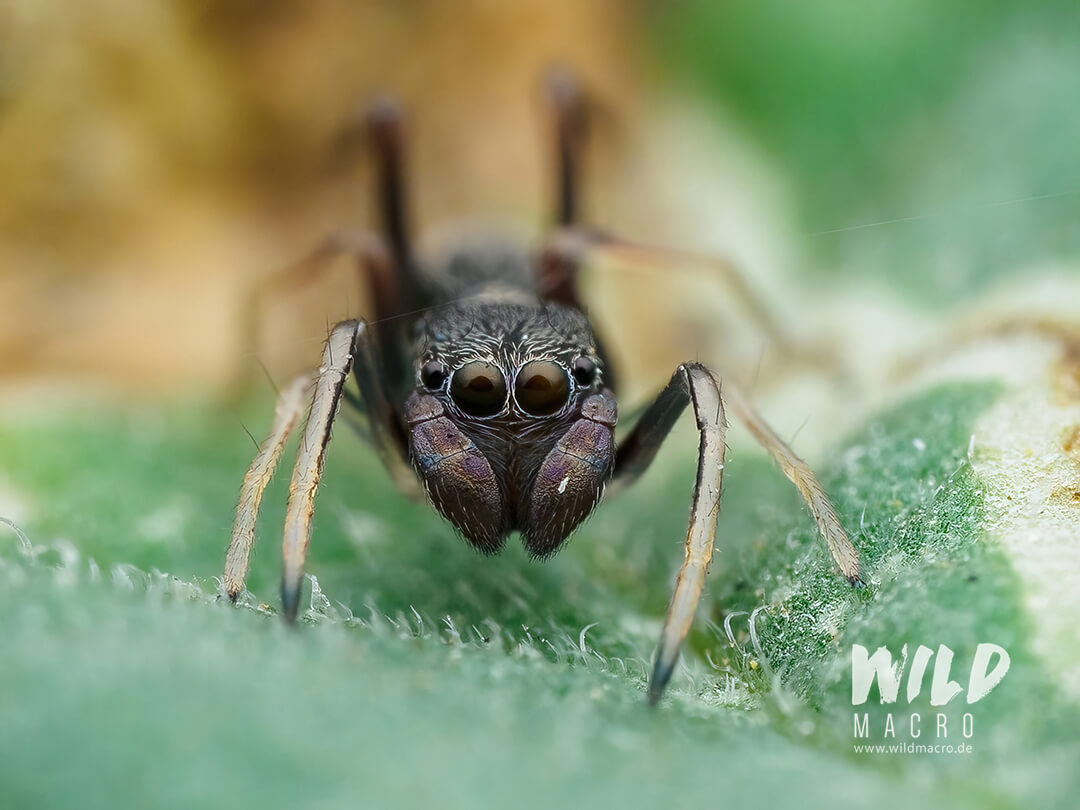
Pseudicius sp.
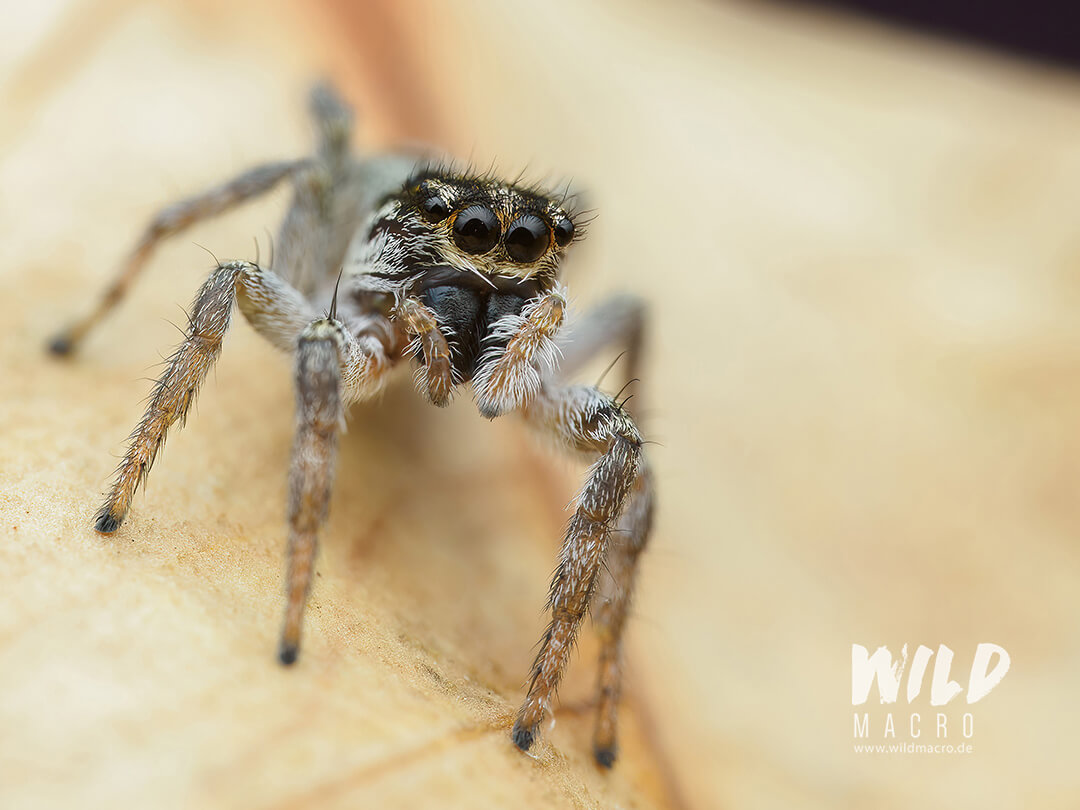
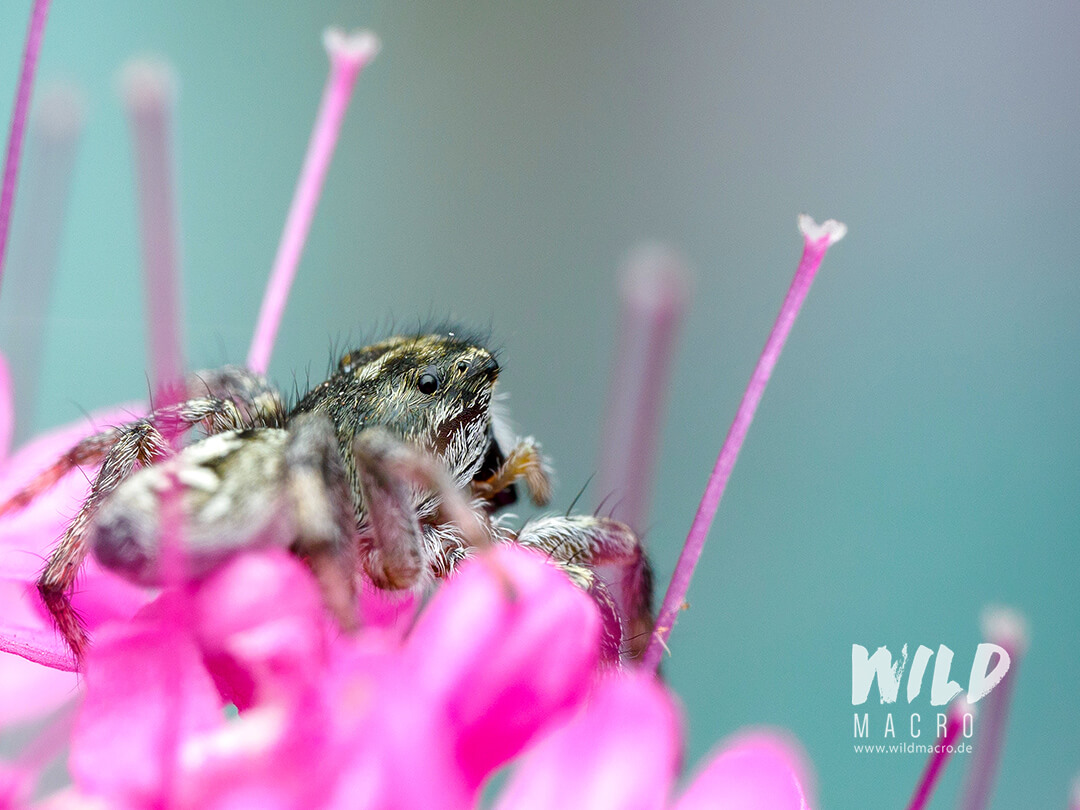
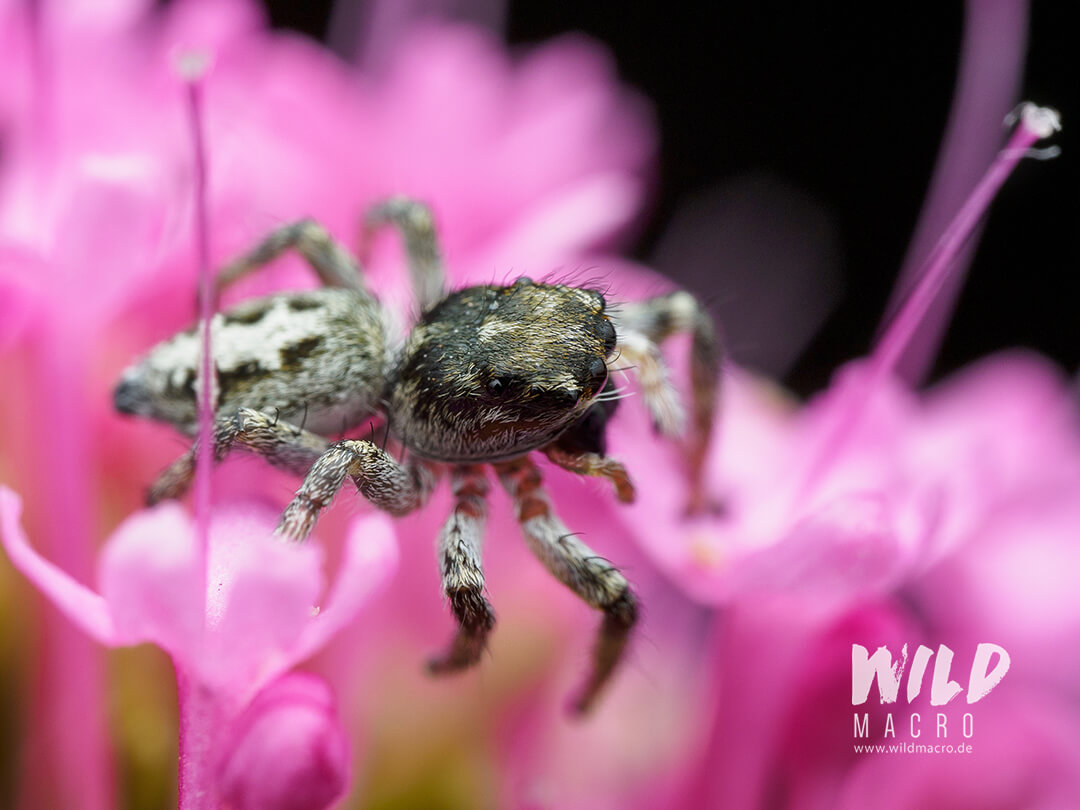
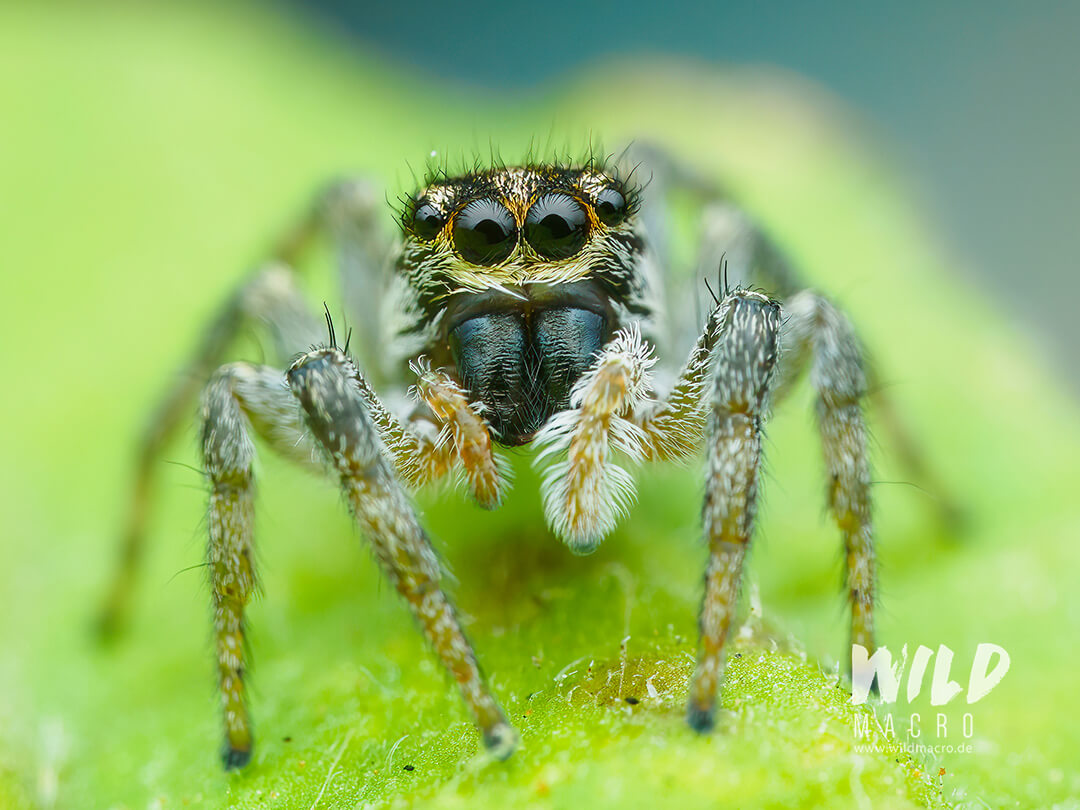
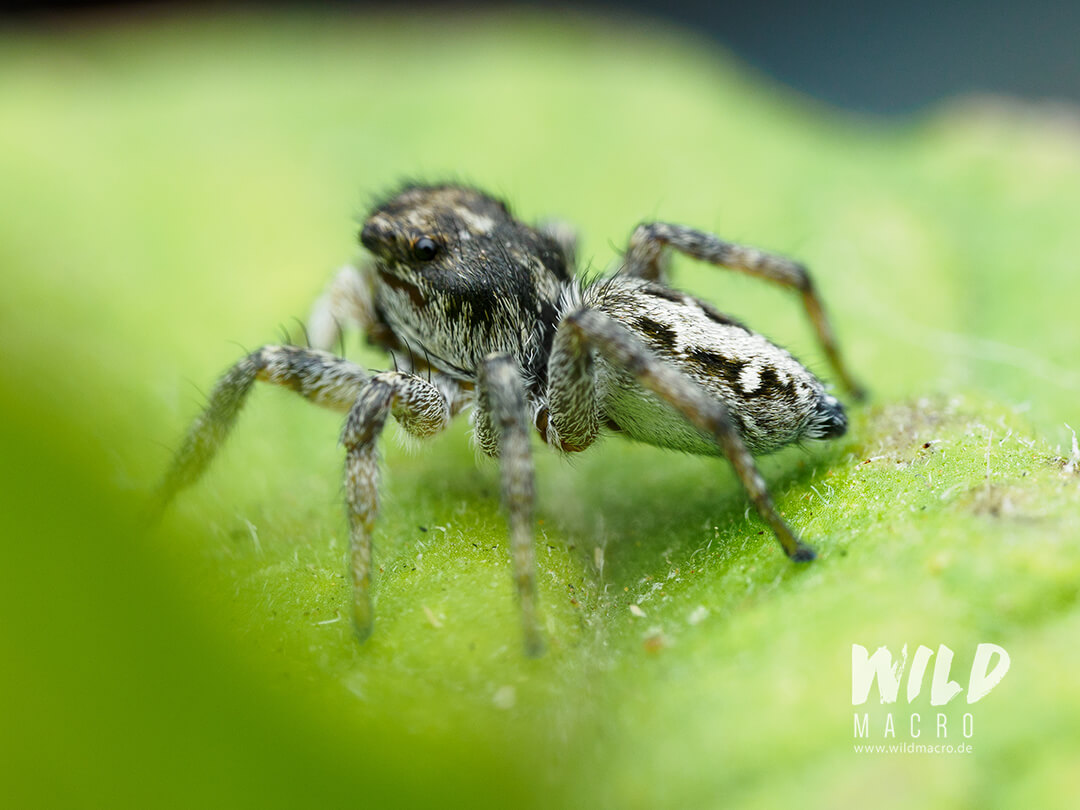
Oxytate ribes (Grass crab spider)
One of this year´s many hightlights, was this stunningly green grass crab spider.
Sitting on an Aloe, the very small spider was perfectly blending in, showcasing its effective camouflage.
Oxytate are tree dwellers with flattened carapaces and elongated anterior legs, present in South Africa with currently 4 species.
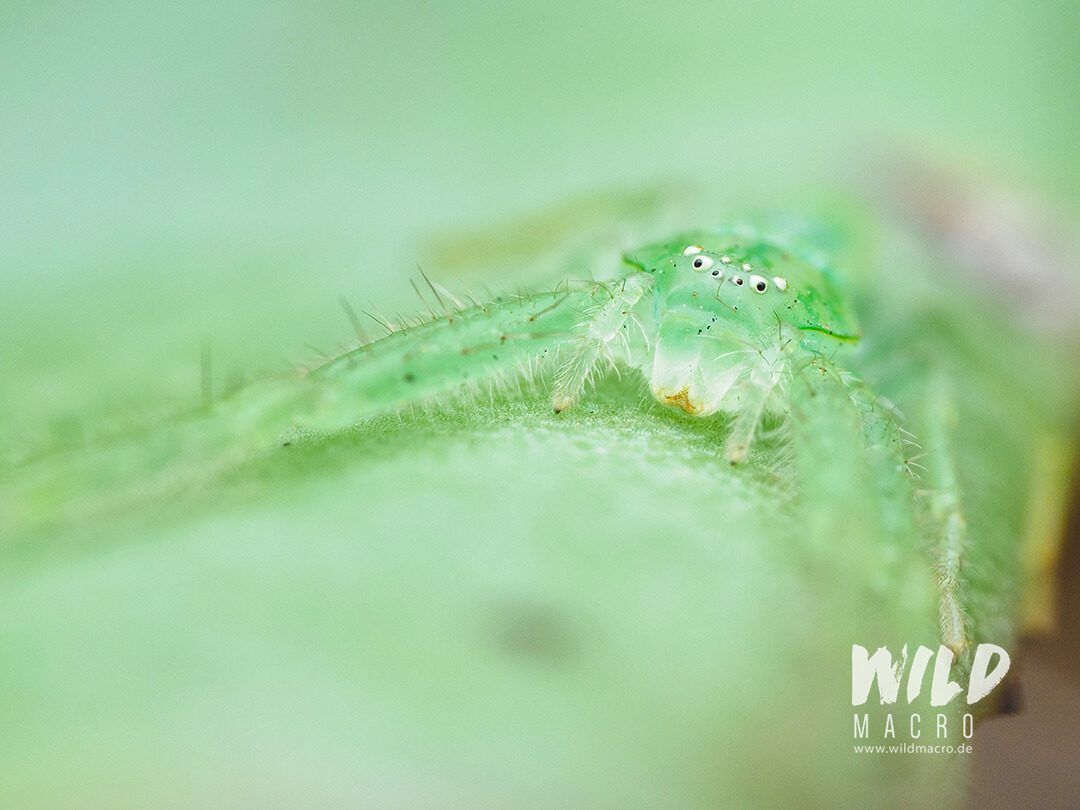
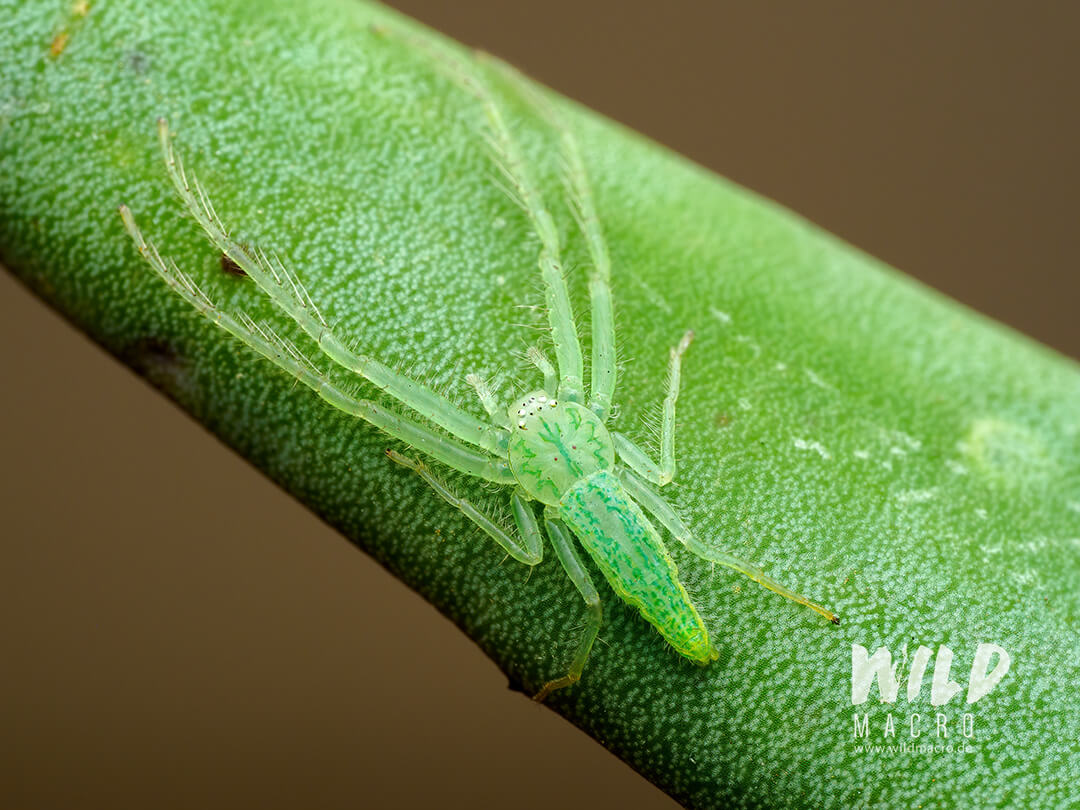
Finding Caerostris sexcuspidata (again) – A night field trip with Norman Larsen
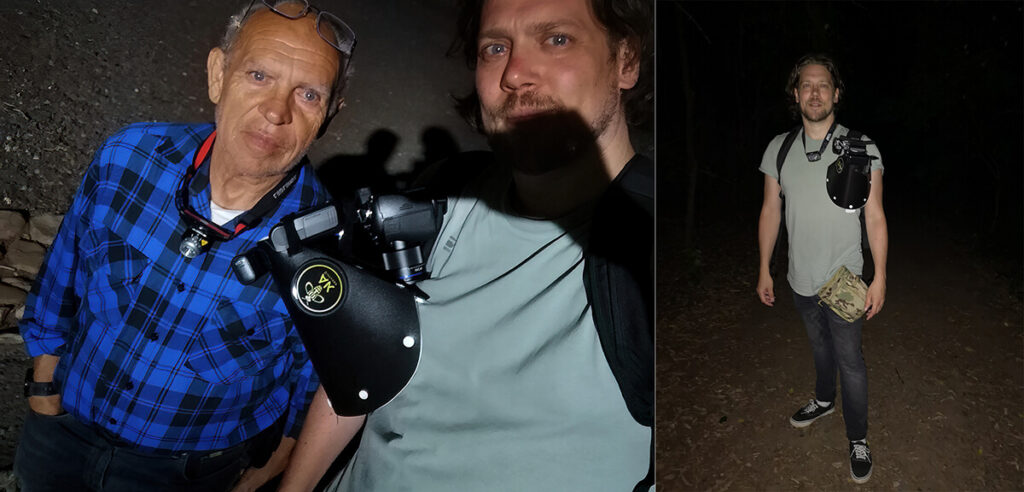
The bark spider (Caerostris sexcuspidata)
Back in 2020 I was happy to find and photograph this fascinating spider species thanks to Norman Larsen, who knows a great, hidden spot in Newlands forest.
No wonder, Caerostris sexcuspidata was the top spot on my wishlist for this year´s night field trip.
The species is highly diverse and especially the big females vary a lot in their appearance with their distinct tubercles on the abdomen.
In addition, these spiders are also sexually dimorphic with the males being considerably smaller than the females.
Weather and temperatures were good and it was a perfect full moon night.
Off the beaten path we crossed a small stream and climbed over rocks to get to our area of interest.
We stopped every couple meters to shine light into tree stumps and check for low-hanging webs.
Until we reached the mentioned spot, i had already found and photographed a good amount of spiders and insects to make the field trip a success.
But the trophy-shot was still missing.
Fortunately Norman´s spot did not disappoint and after a good 10 minutes i found a big web with an impressive female specimen, busy rolling in a fresh catch.
I took some mediocre shots while it was moving a lot, until suddenly it seemingly started destroying the web and then moved back to its hide.
During the process it showed its colorful orange underside of the abdomen, which is usually hidden.


To my surprise it was guarding an egg sac with freshly hatched spiderlings there. What a nice bonus.
Photographing it was almost impossible, though. It was hidden just too well.
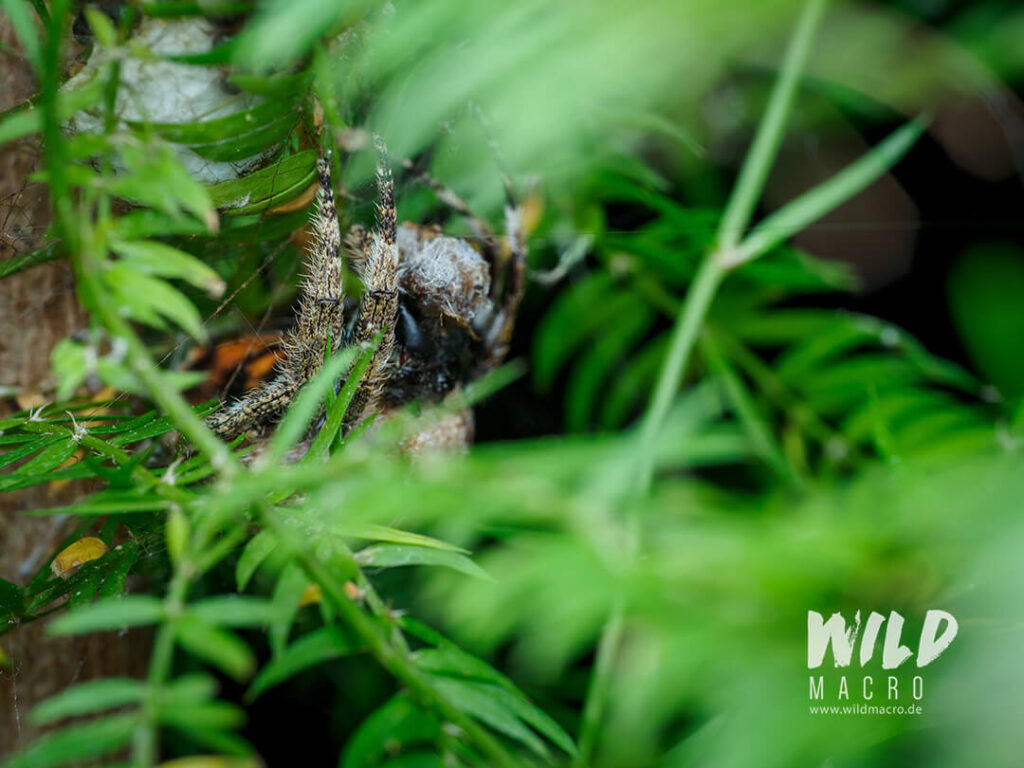
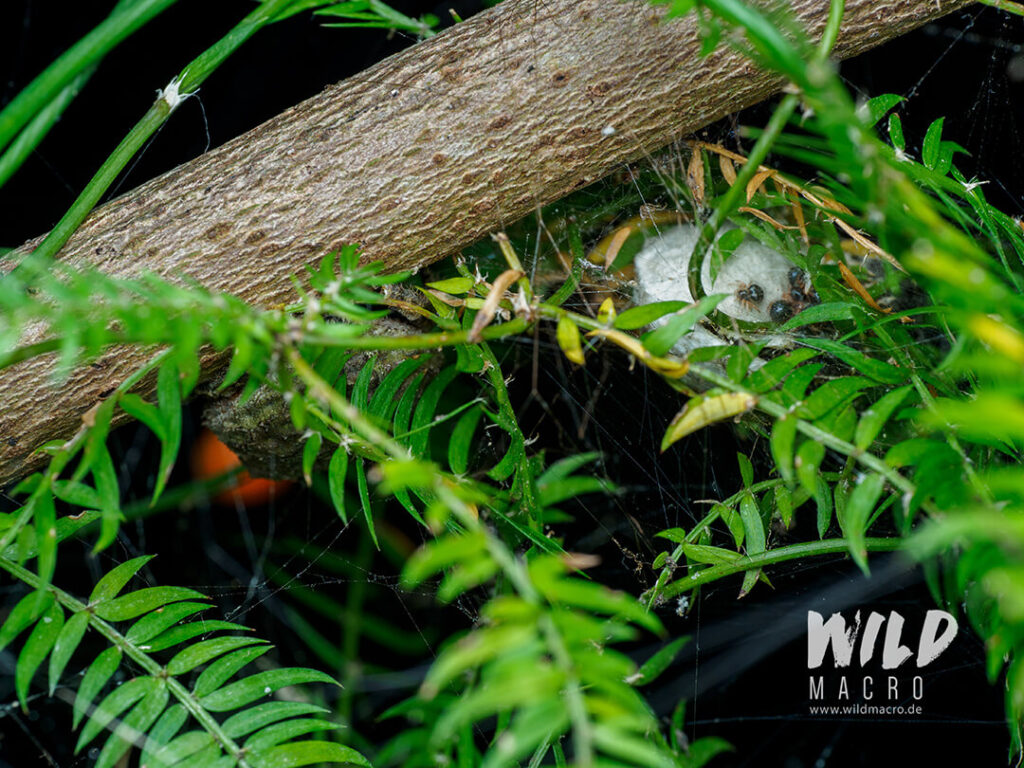
After some minutes it moved out of the hide, on to a twig of a neighboring tree, where it did what bark spiders are best at: pretending to be a piece of bark.
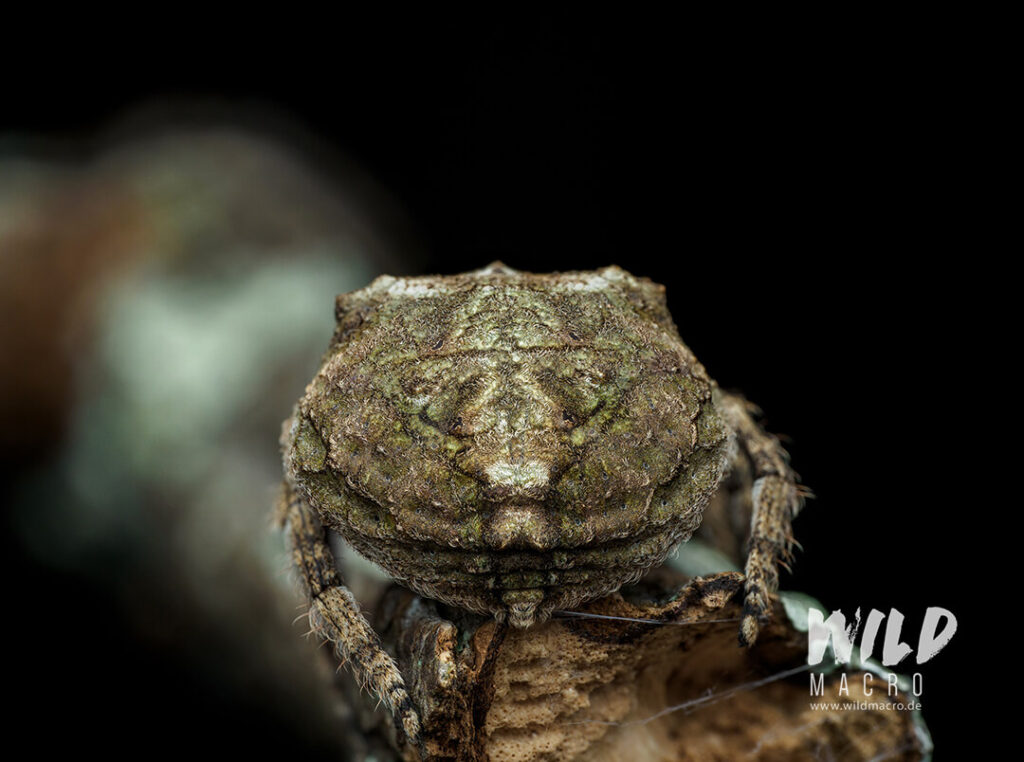
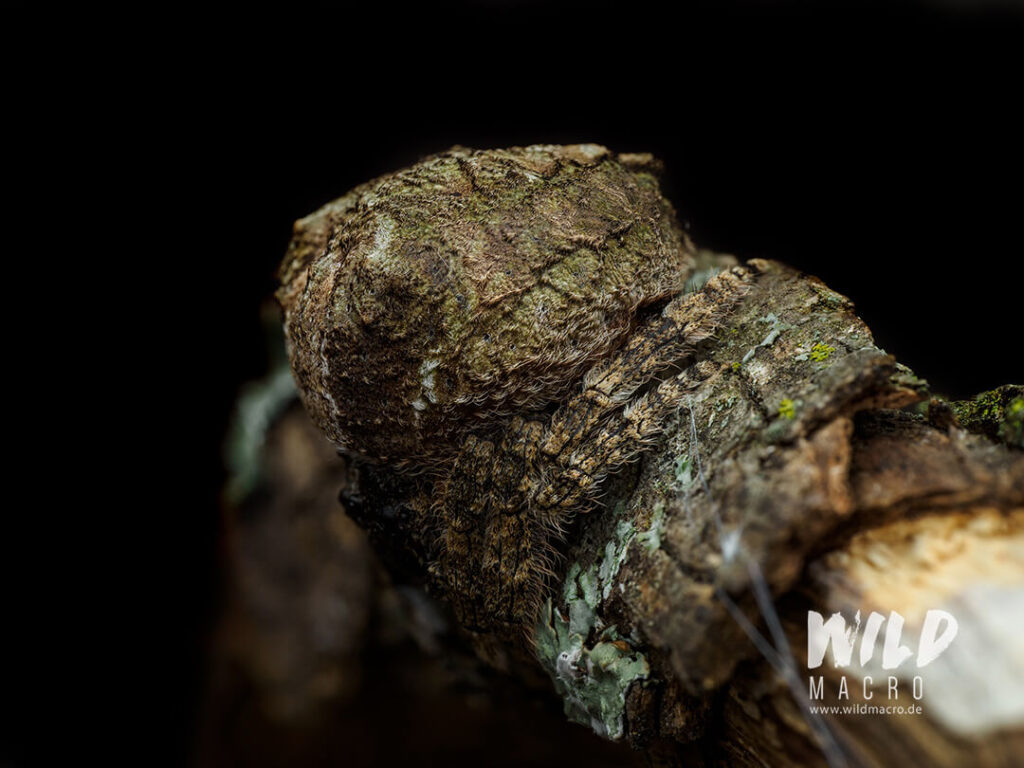

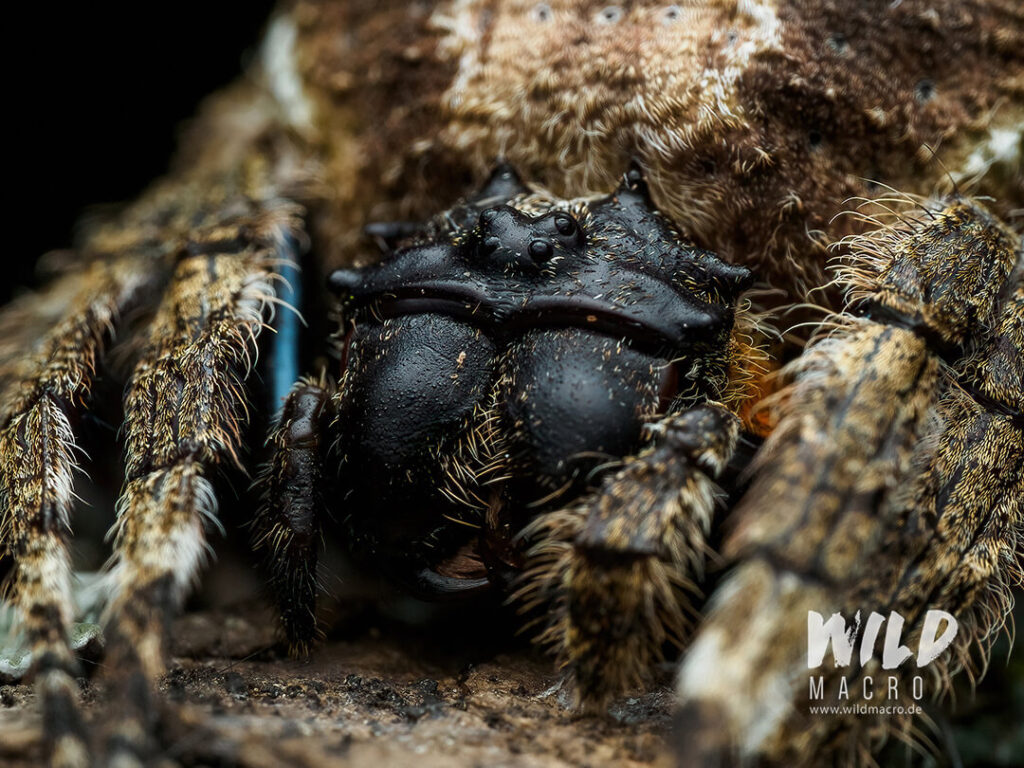
The level of camouflage, when they press themselves flat to the surface, is really extreme.
There is almost no chance of spotting these spiders, when there is no web or thread nearby to hint at their presence.
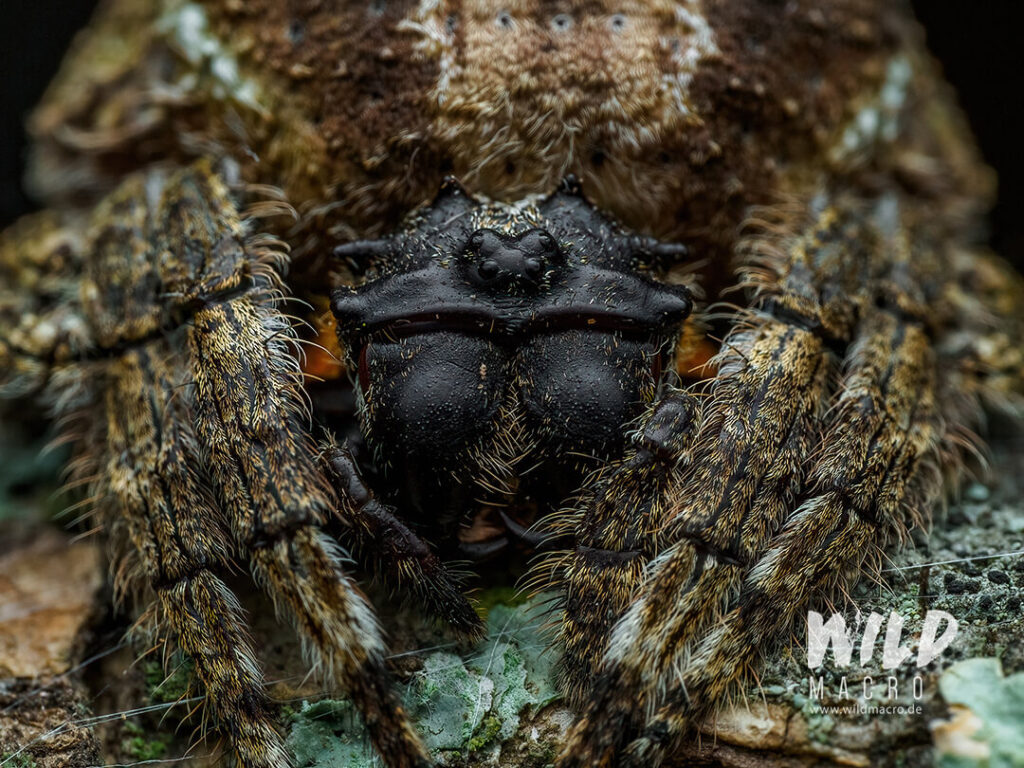
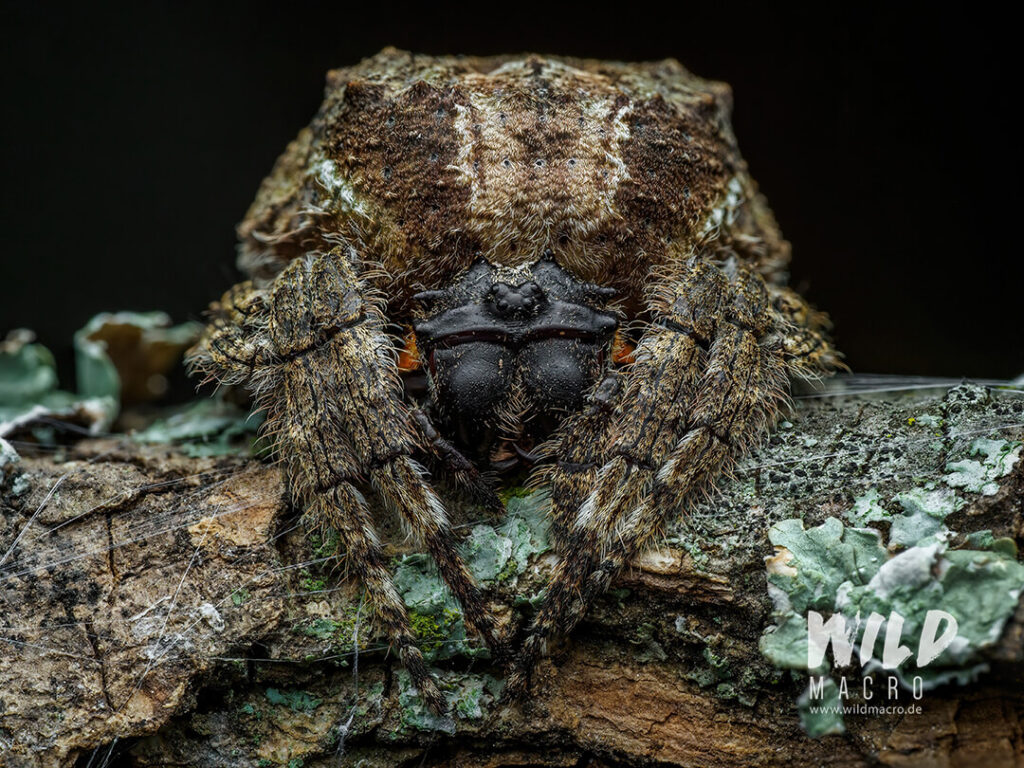
Info:
Bark spiders build some of the biggest webs in the world. Their silk is very strong, not extremely sticky, but strong.
Being nocturnal spiders they build their webs during the night and disassemble and actually even eat them up at sunrise.
Fun fact:
Norman told me, that the full moon that night possibly made the spider believe it was sunrise, resulting in it quickly disassembling its web, when we observed it, although it must have just taken it up.
Huntsman spider (Palystes castaneus, Sparassidae) attack
While we were looking for interesting webs and their creators, something caught my eye, while barely shining my light over it: a relatively large spider with obviously striped legs – and wow – it was sitting there in an impressive threat pose.
As a fun fact, in the many years that i have come to South Africa i have only found a huntsman spider (or ranspider, how they are called in SA as well) ONCE – and it was a tiny one, not even a centimeter in length.
Was this my lucky day (or night), to find a bigger specimen in an impressive attack or threat pose to make up for all the long wait?
Well, ALMOST: it was indeed a rainspider, or what was left of it, to be more precise.
What i found, was actually the exuviae, the molt of said spider.
Never had i seen an exuvia in such a position and even though it was not what i expected at first, i was very happy about the find and got a flawless focus stack of it.
The white clypeal moustache and ventrally banded legs make think this might be Palystes castaneus.
At least it could not move.
I took it home as a nice souvenir to always remind me, that obviously rainspiders are effectively hiding from me for years!
The real big species only left more than obvious hints at their presence, but refused to show…
Info:
To be able to grow, Spiders have to molt several times throughout their life cycle.
As their hard exoskeleton can not grow, they have to shed their old one and grow into a new, soft one until it hardens in its slightly bigger form.
Scorpions and Gecko eggs under UV light
During wandering through the woods we alternated between using our head lamps and a powerful UV torchlight, which i brought with me.
While it is almost impossible to spot a scorpion during the night, while it sits camouflaged and perfectly still between dead leaves, it shines like a signal fire when hit by UV light.
The same applies for the eggs of geckos, too, as can be seen on the following photos.
It still blows my mind how little you actually see/find of this nightly diversity without a UV light.
The african camel-back Ogre spider (Avellopsis capensis, Deinopidae)
Since I became addicted to macro photography I jealously looked at all the australian macro photographers that shared photos of the so called Ogre spiders (Deinopidae).
These nocturnal net-casting spiders usually have extremely large eyes and a very unique hunting technique.
They are hanging upside down, holding a net between their front legs, ready to pull it over potential prey.
Three genera of net-casting spiders are occurring in South Africa: Deinopis, Menneus and Avellopsis.
During our night trip I spotted something hanging right over my head, while crossing a small stream and – surprise, surprise – it was a specimen of Avellopsis capensis (the only species in this endemic genus) most probably – finally to be added to my gallery.
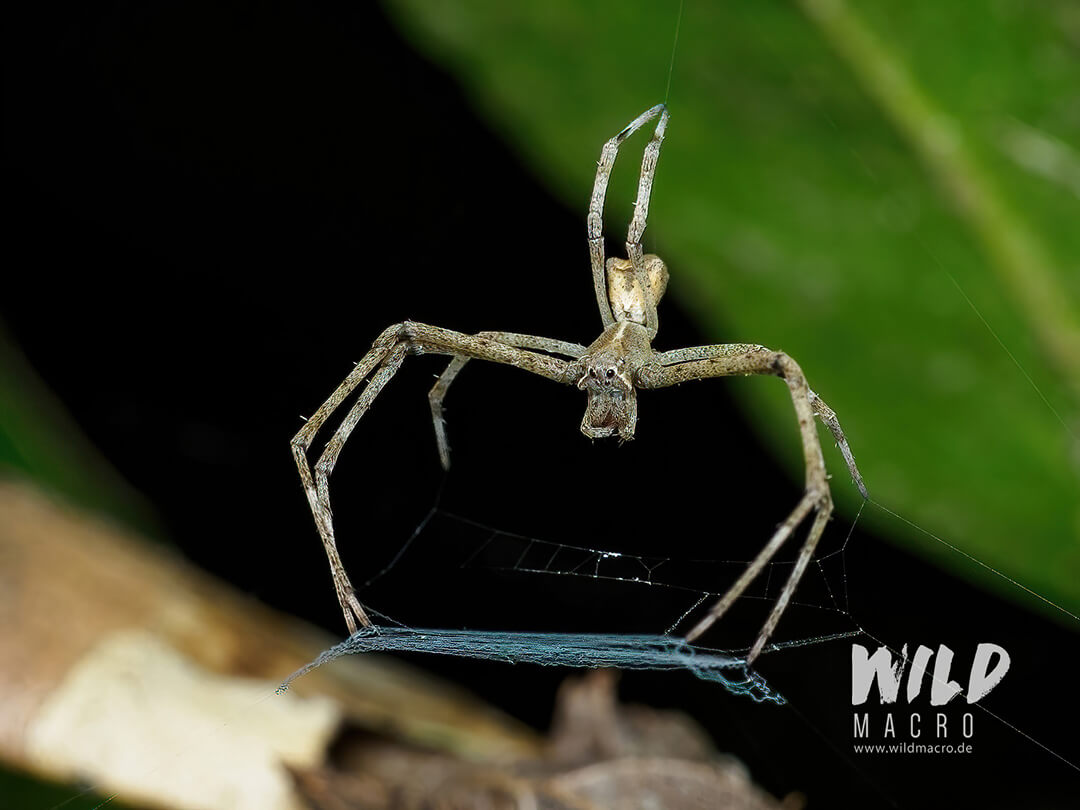
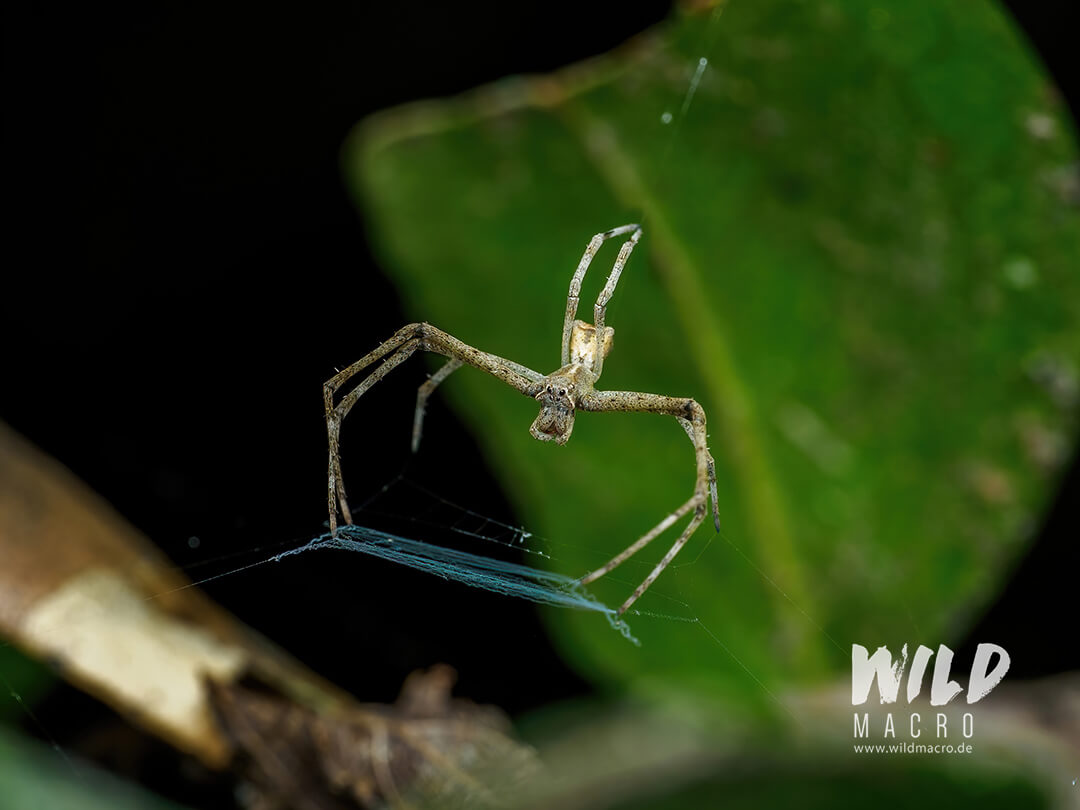
This smaller Deinopid species has smaller eyes than the more-promiment species from Australia, but still resembles their features.
Other insects and spiders
While I mostly focus on spiders, there are a lot of beautiful and fascinating insects to be found in South Africa as well.
The diversity of the insect kingdom is immense.
The more you travel inlands, the more species you will encounter.
Here are some of this year´s favorites.
Praying Mantids from South Africa Western Cape
This very young specimen of Tarachodes sanctus (Holy bark mantis) probably, or maybe Tarachodes beieri was found in Hout Bay in the area of the birds sanctuary.
A perfectly camouflaged species with cryptic colorings and patterns.
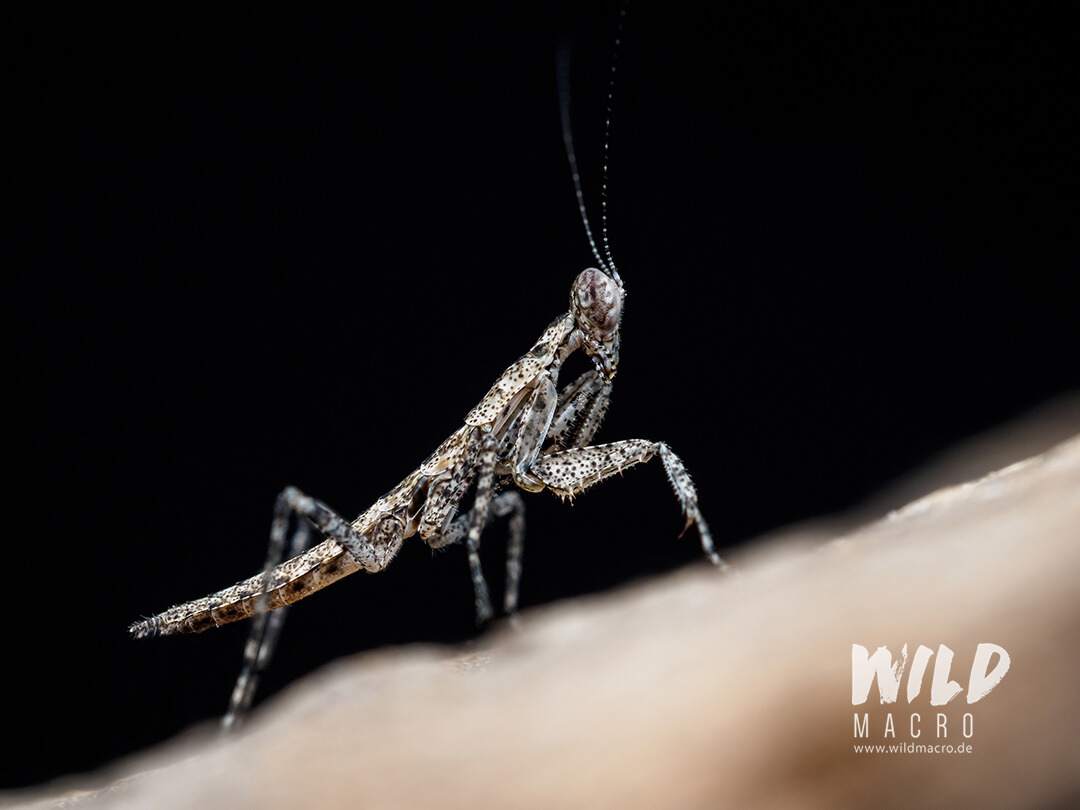

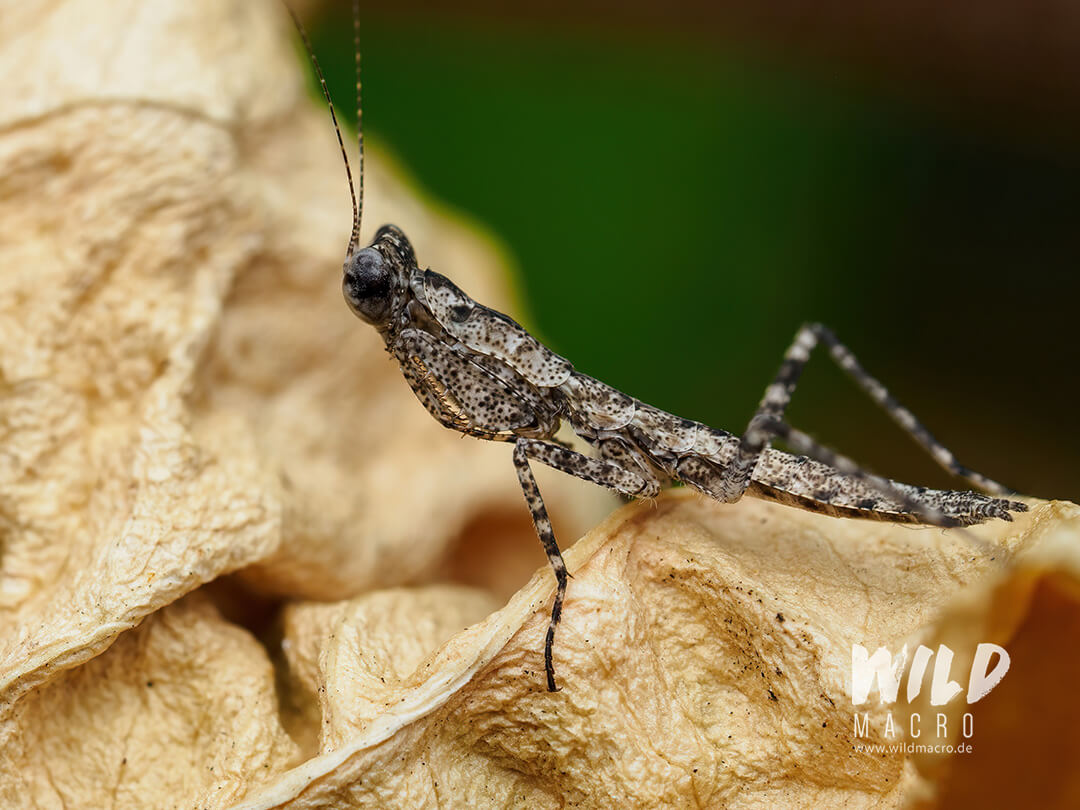
Native to the southern countries of Africa, is Miomantis, a small to medium sized praying mantis.
In South Africa, Miomantis caffra is commonly known as the springbok mantis.
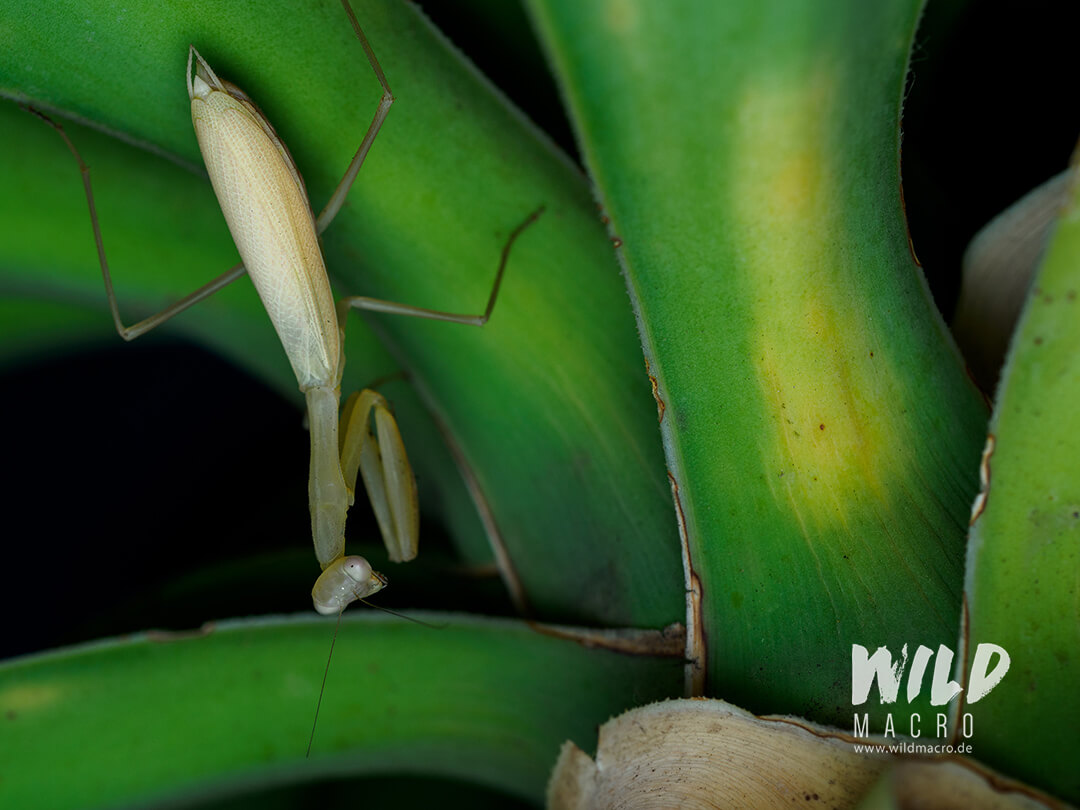
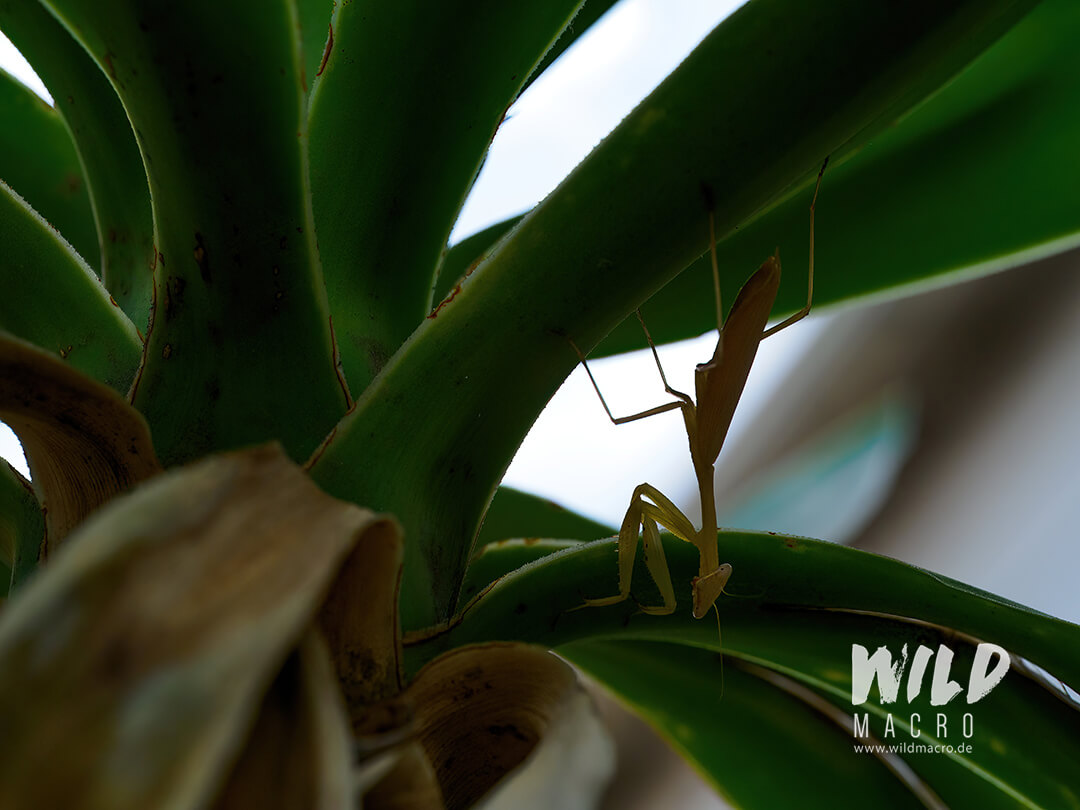

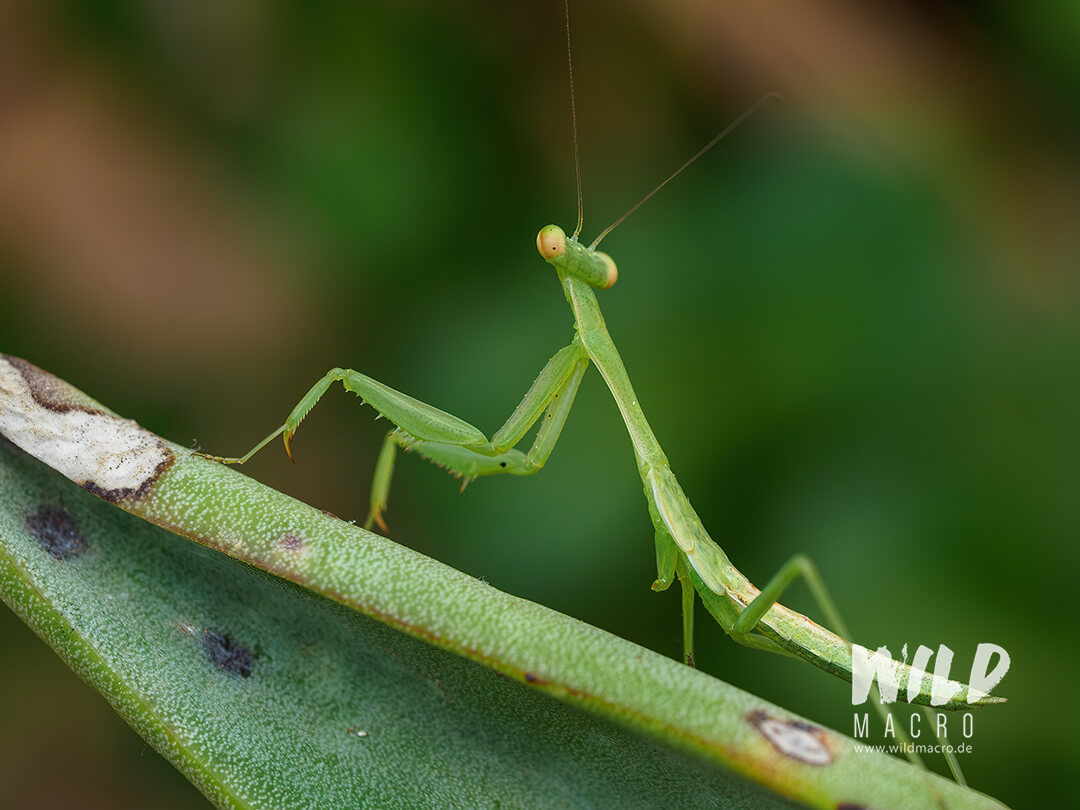
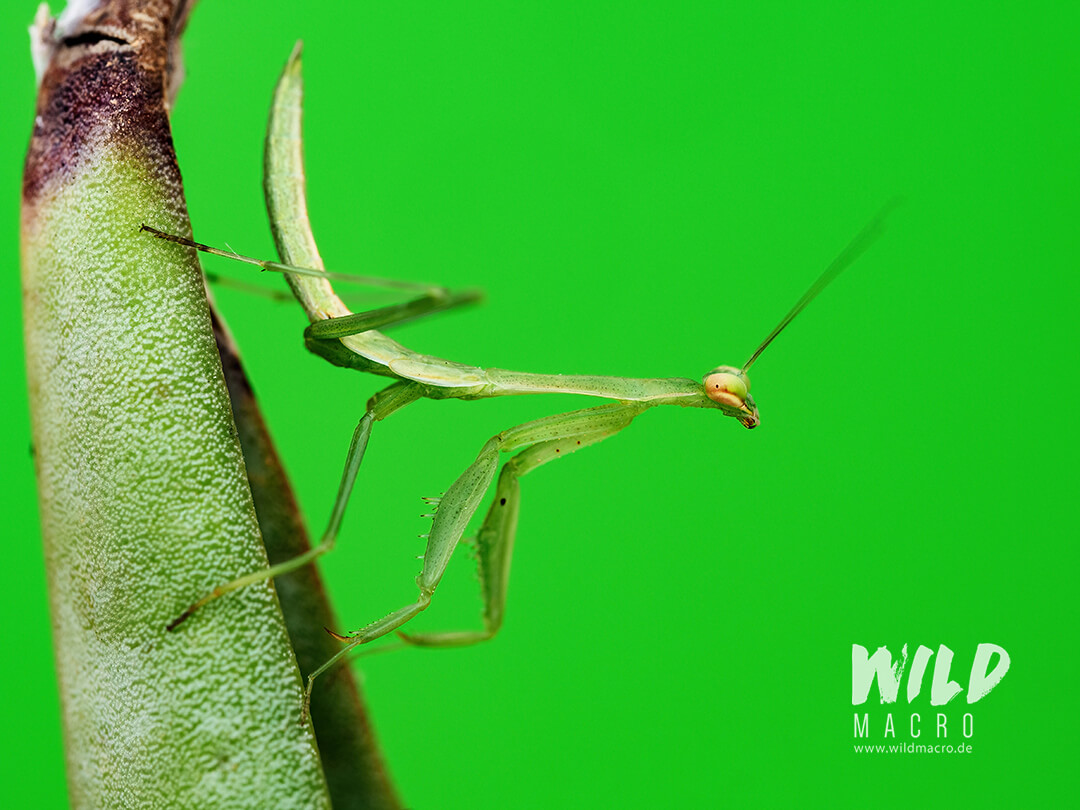
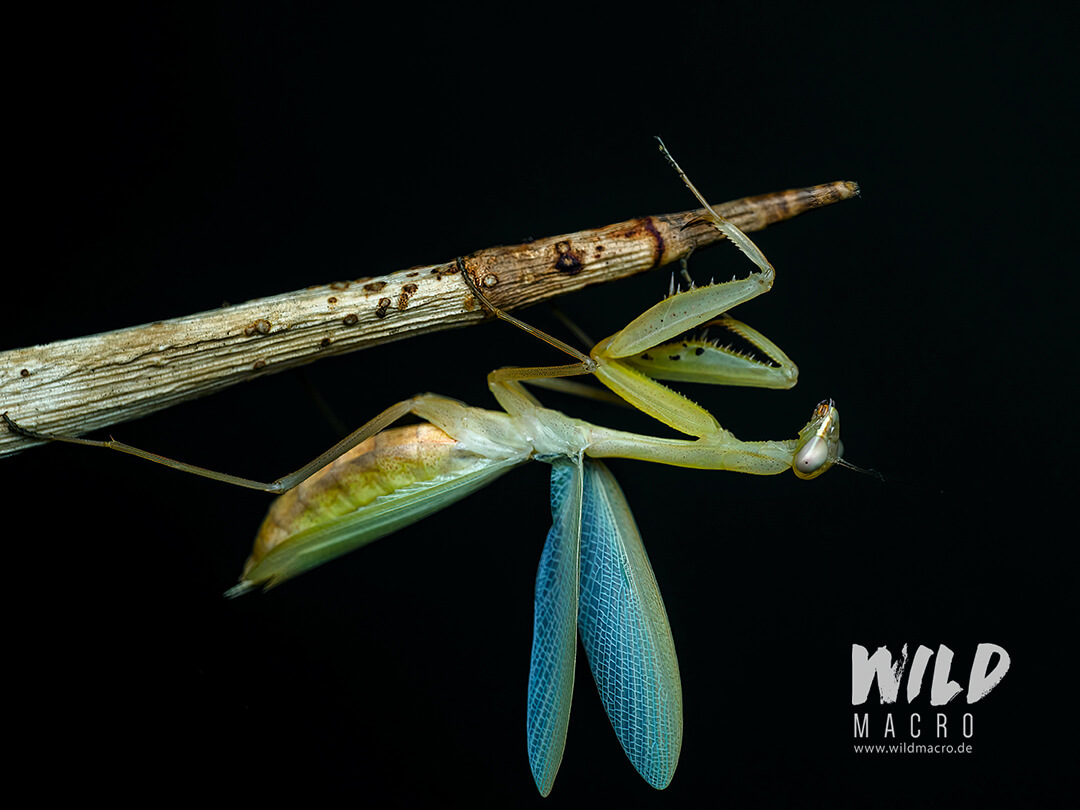
Diaea rohani Crab spider
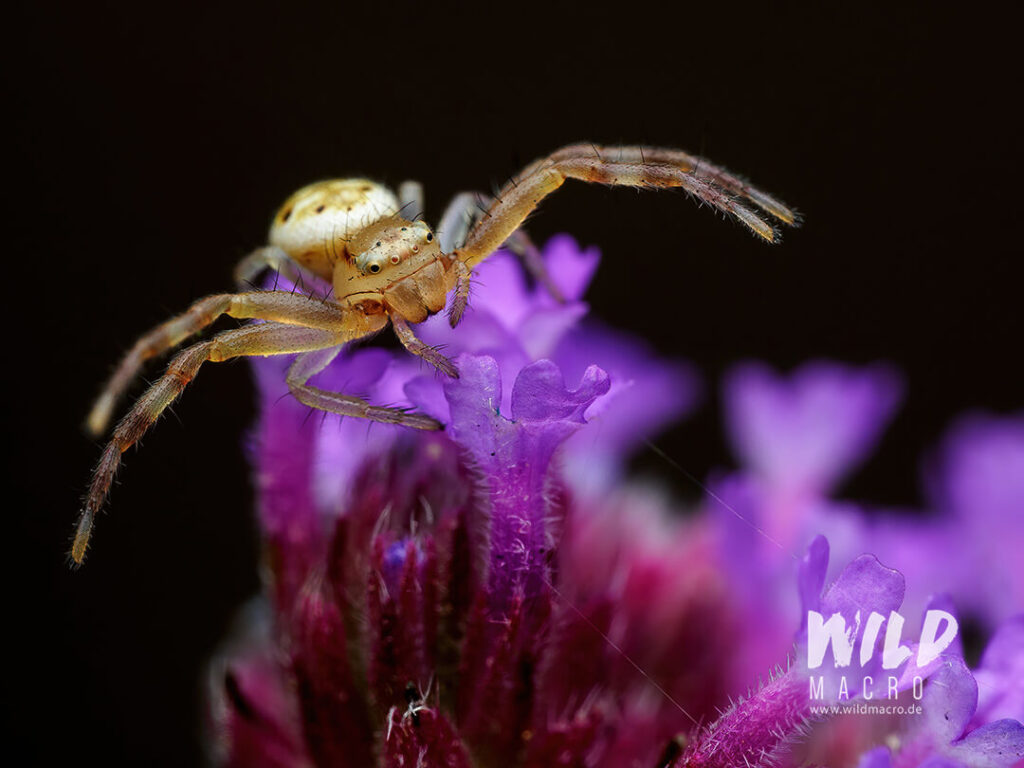
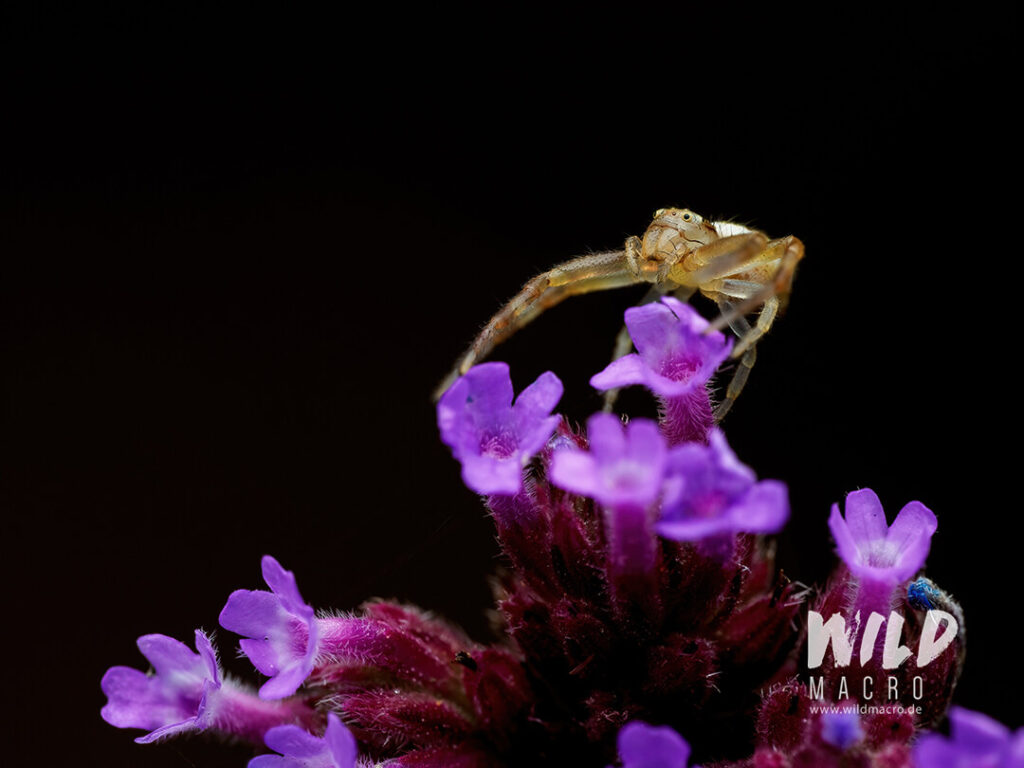
Cyrtothyrea marginalis (common dotted fruit chafer)
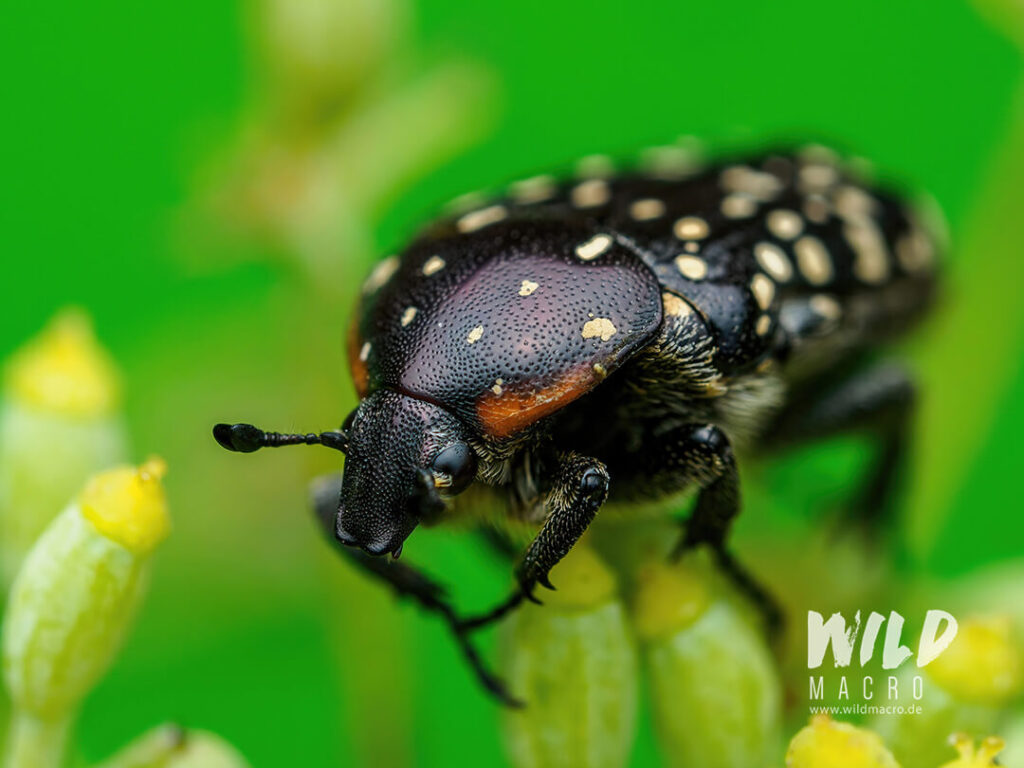
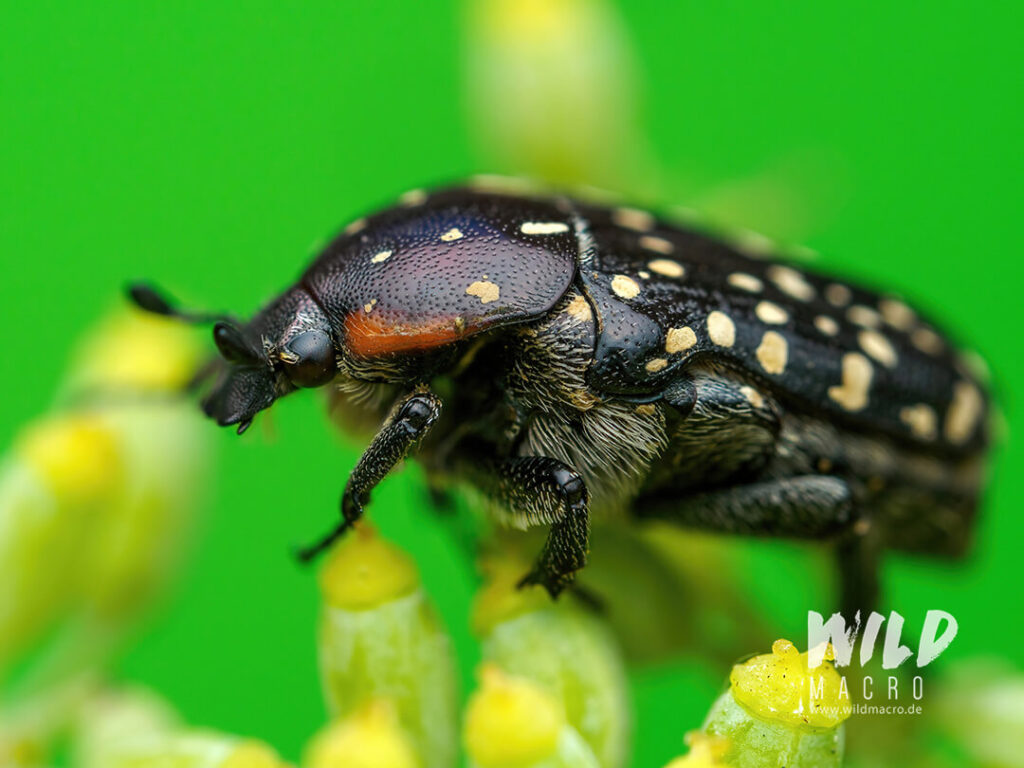
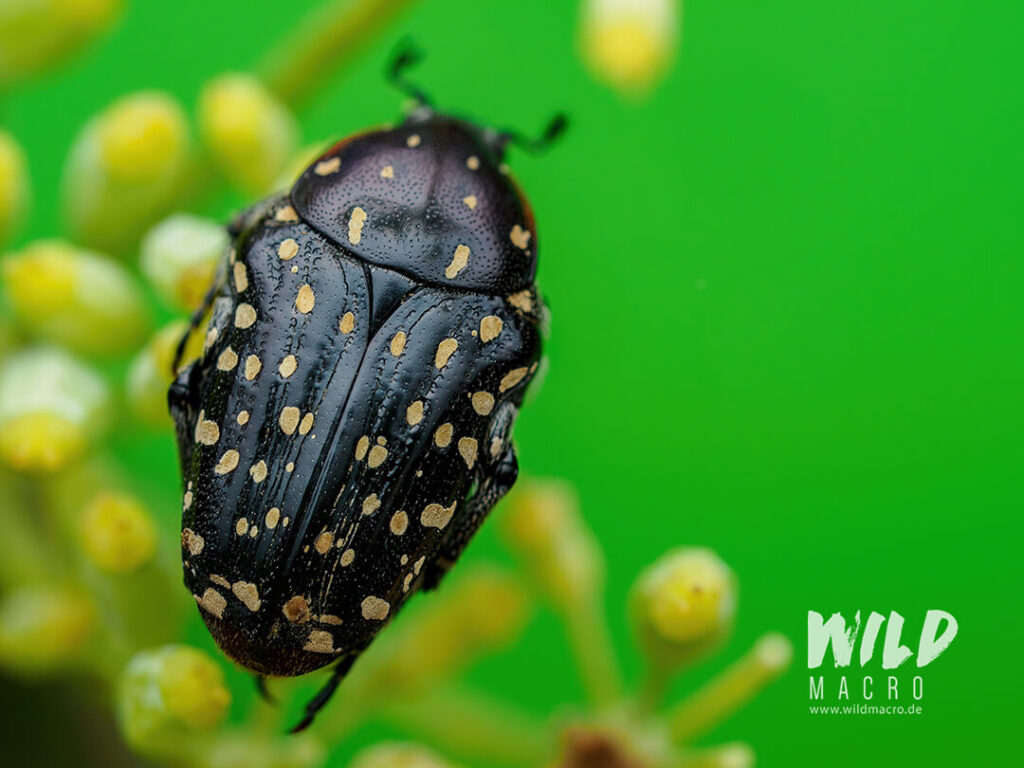
Thanatophilus micans (Carrion beetle)
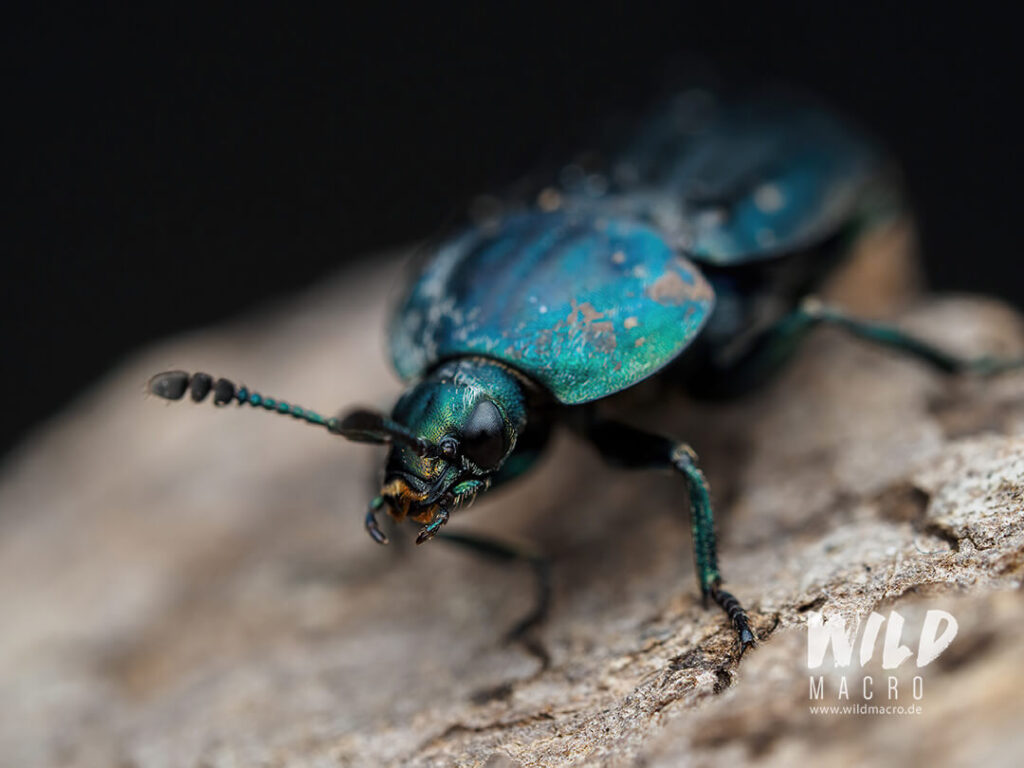
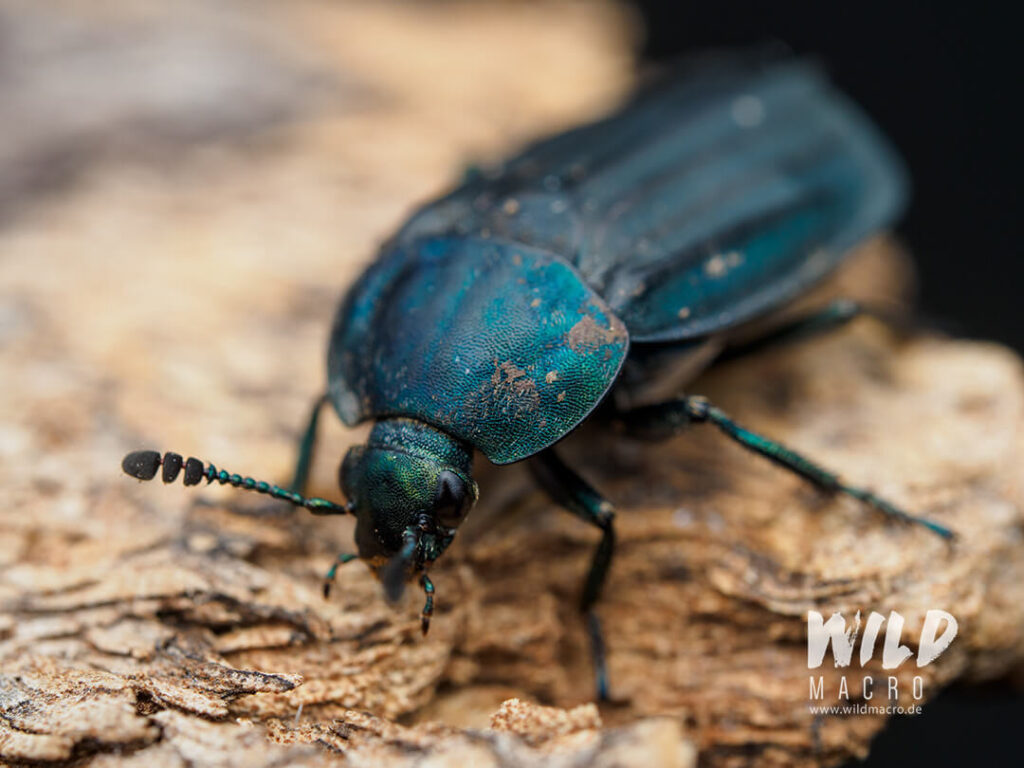
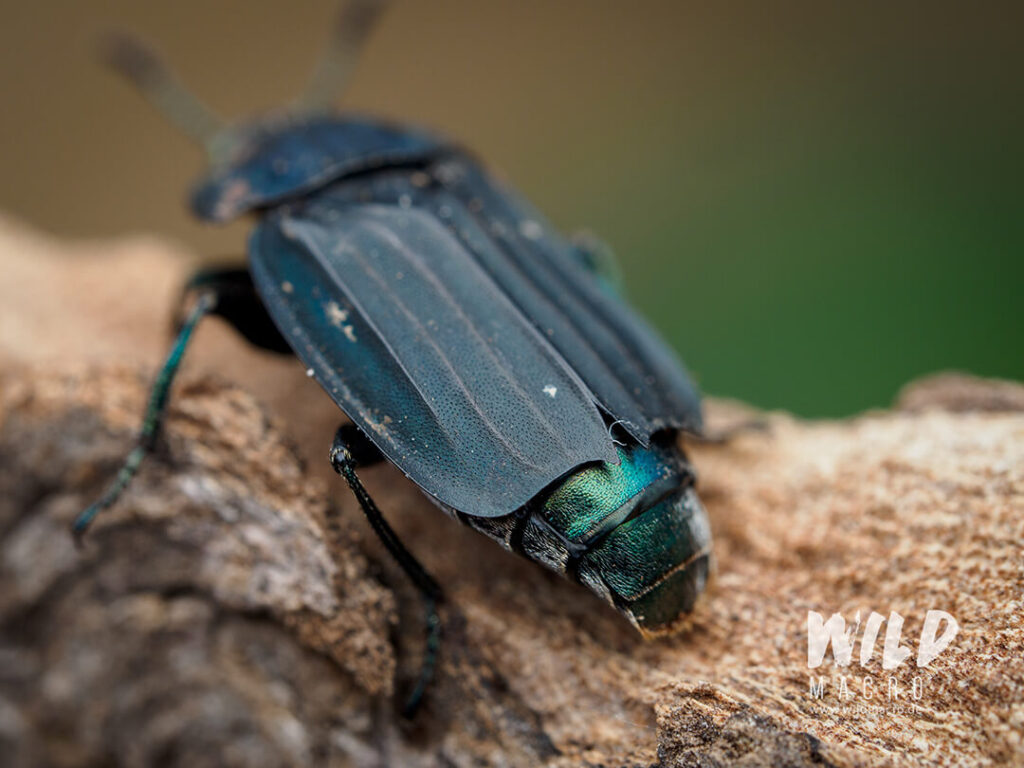
Buphonella nigroviolacea
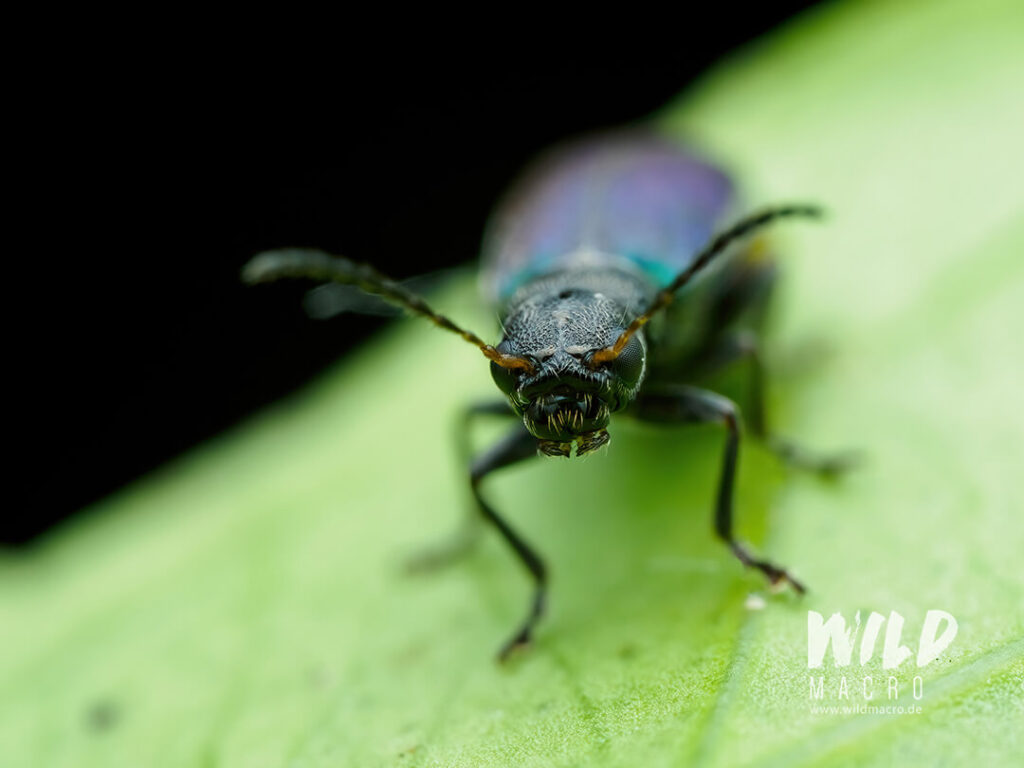
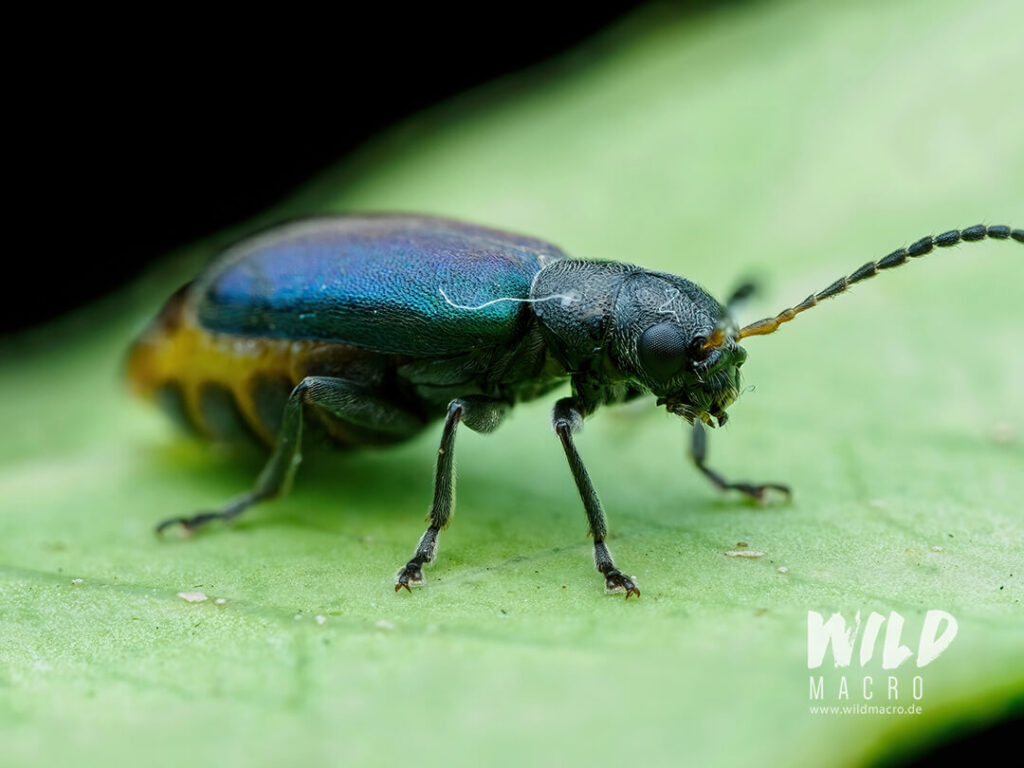
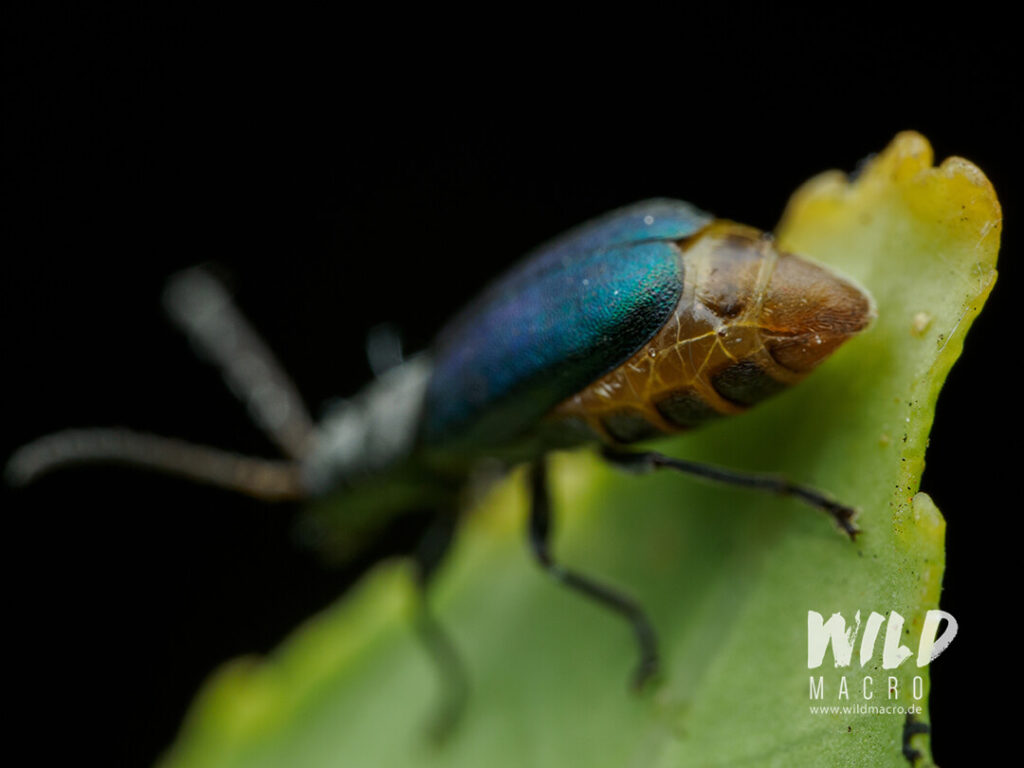
Weevil beetles
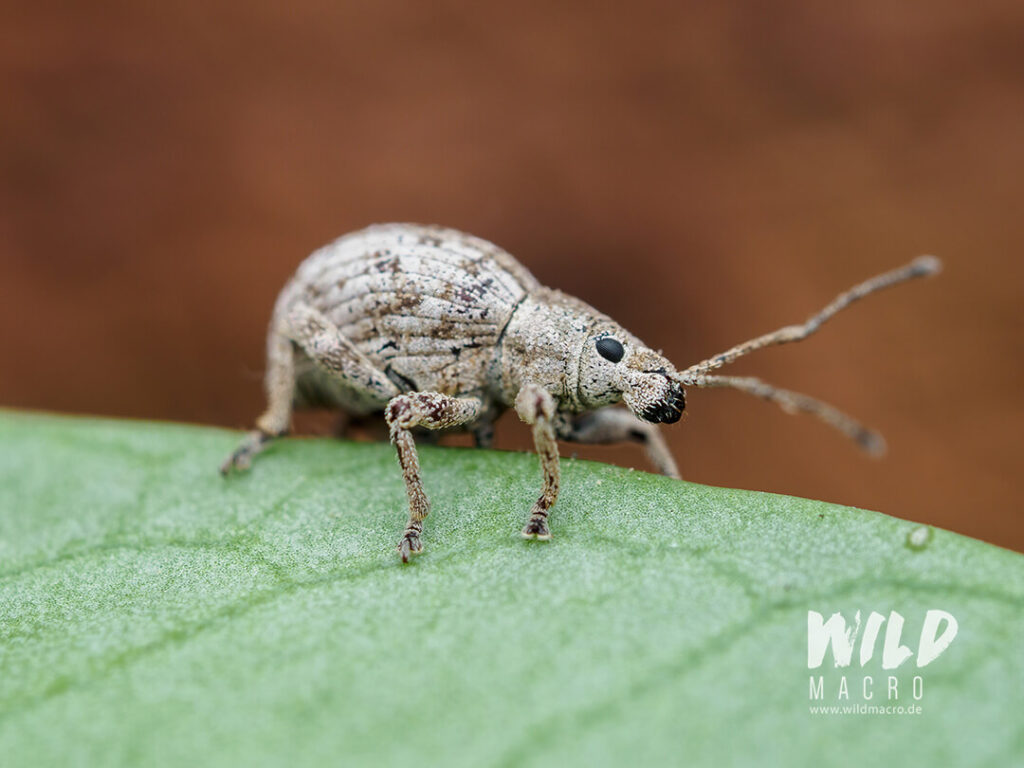
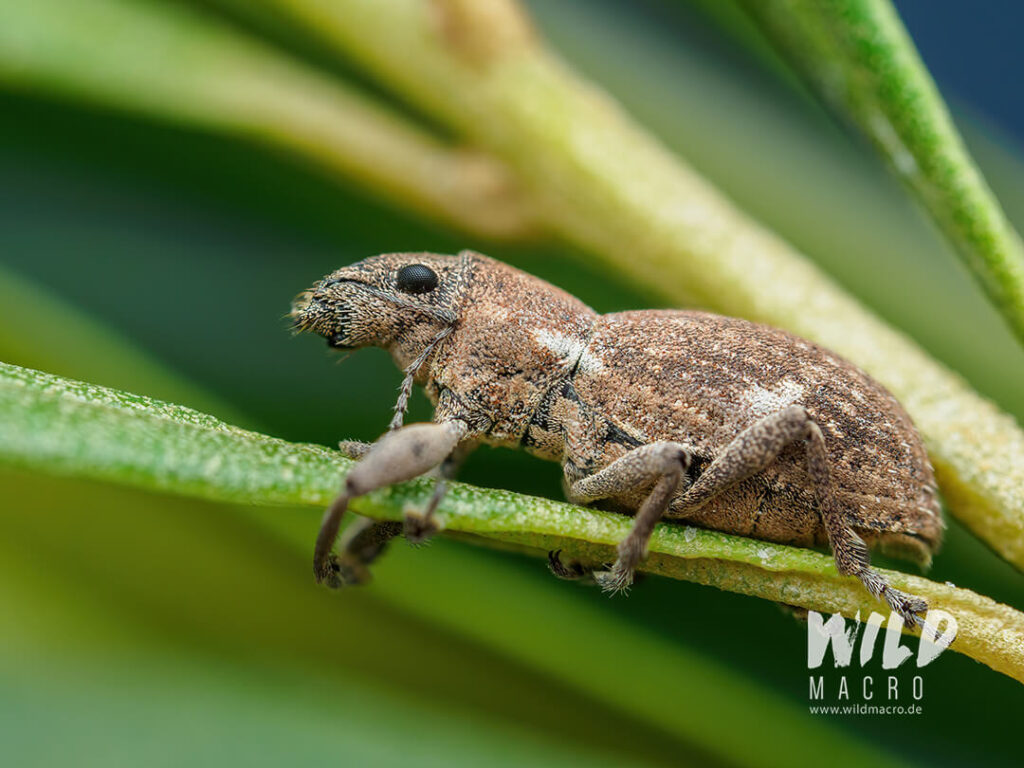
Oecanthus capensis (Tree cricket)
Unidentified wasp
Longhorn beetle (Cerambycidae)
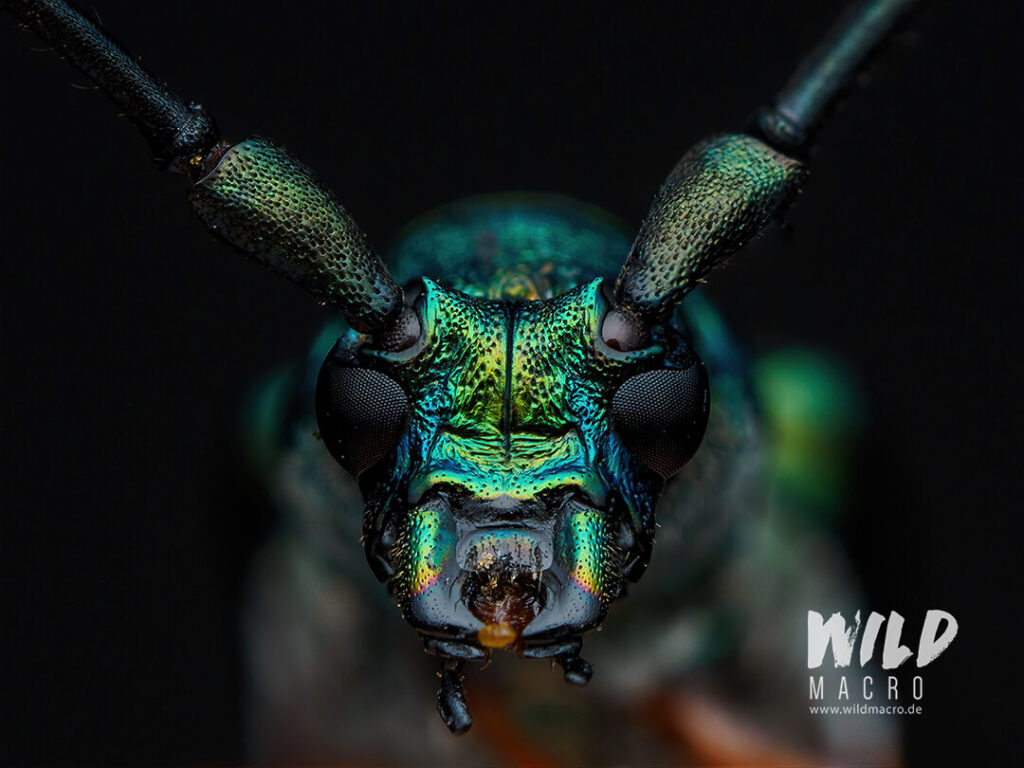
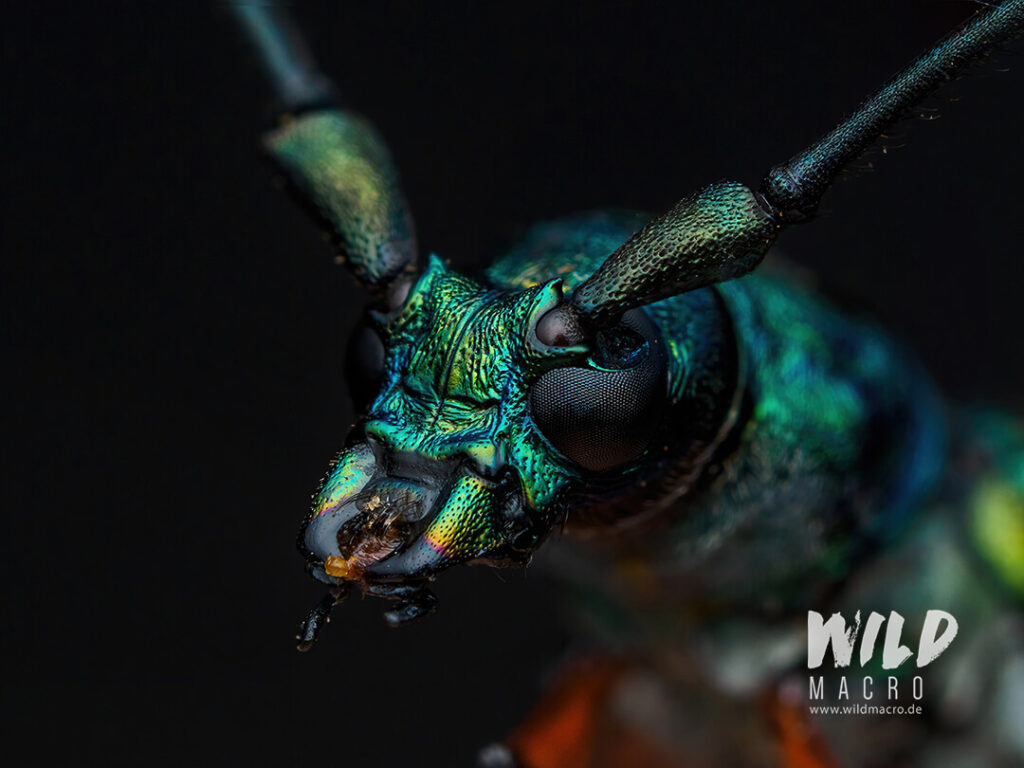
Kirstenbosch and Table Mountain National Park
The most obvious spiders inhabiting the vegetation around Table mountain (and the whole Cape Peninsula) are the many, many Golden Orb Weavers (Nephila sp.) that build huge webs and often live one next to the other.
If you happen to touch their webs, or even get entangled in it, you can feel how strong their silk is.
Both these spiders and their webs can reach an impressive size.
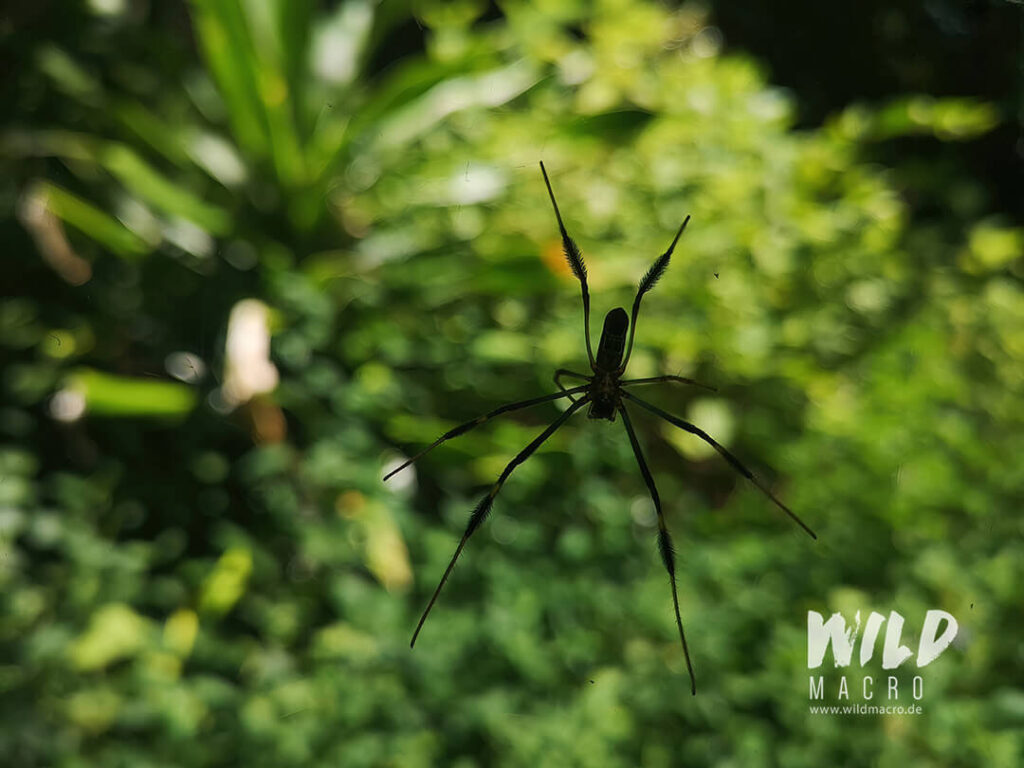

The endemic Cape Mountain cockroach (Aptera fusca) is easily the most beautiful roach I have ever seen and can be found in the fynbos biome of the Western Cape peninsula region.
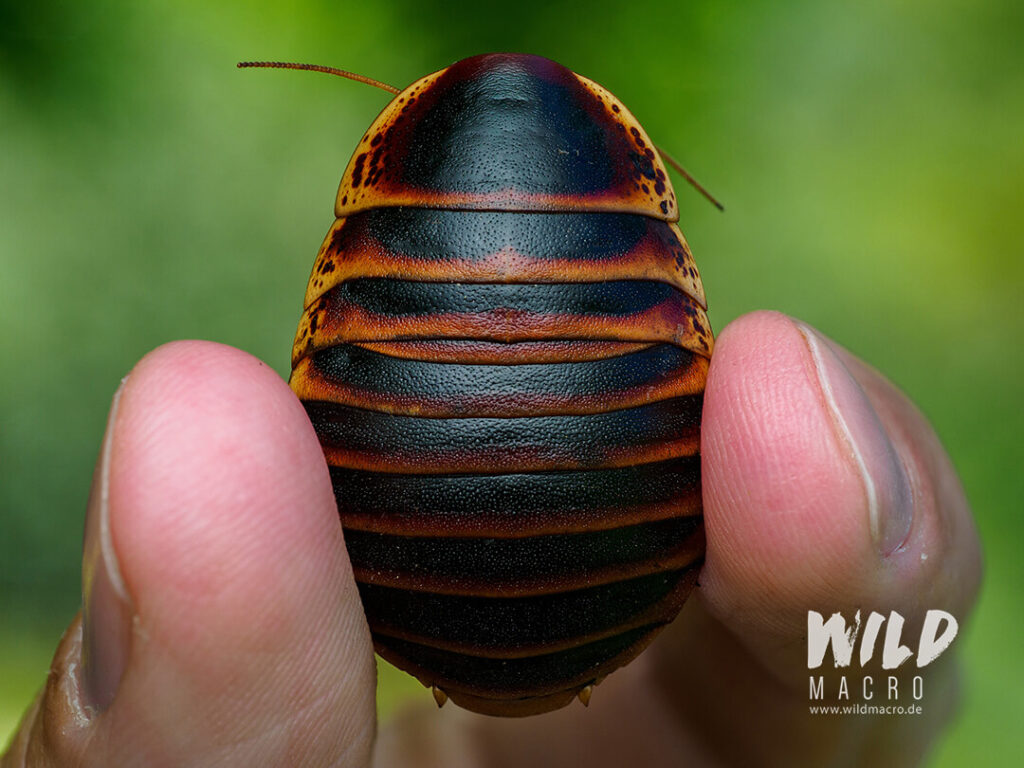
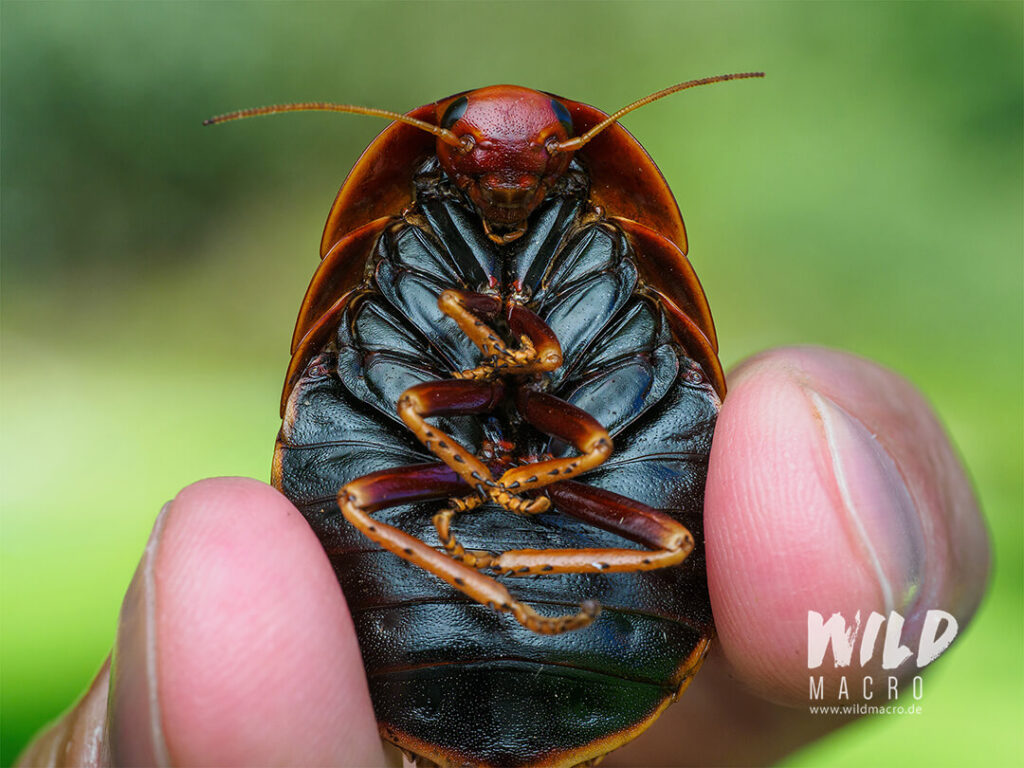
Night Macro

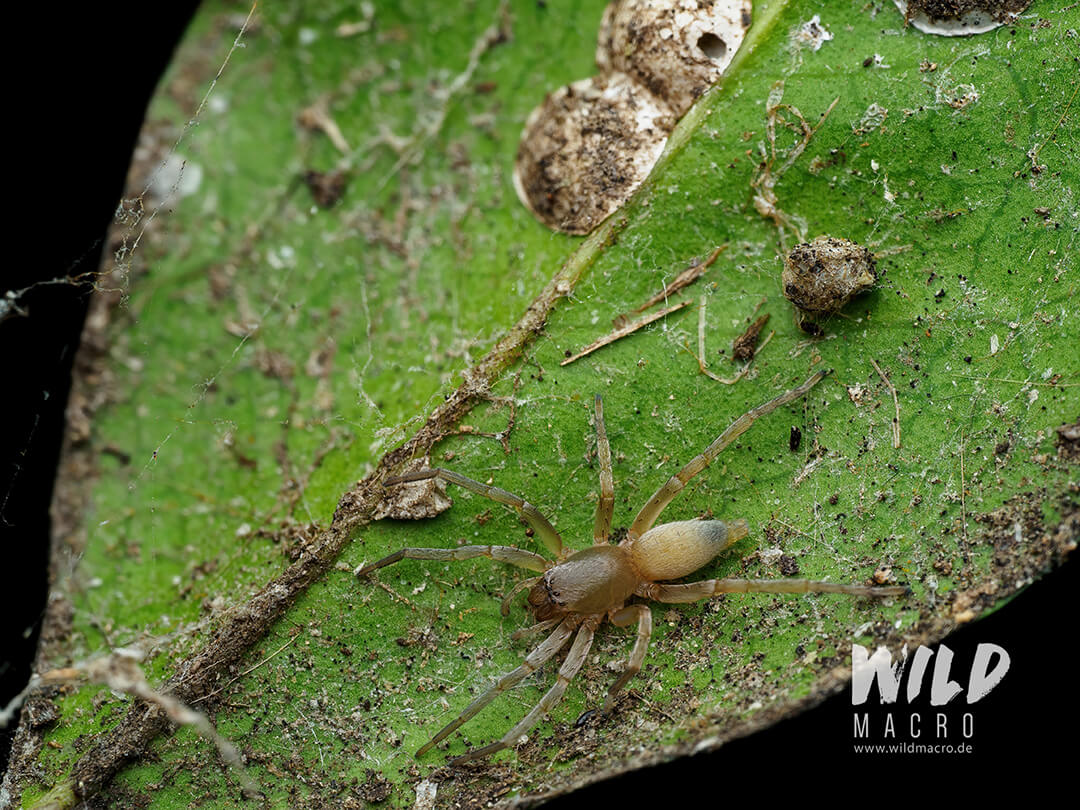
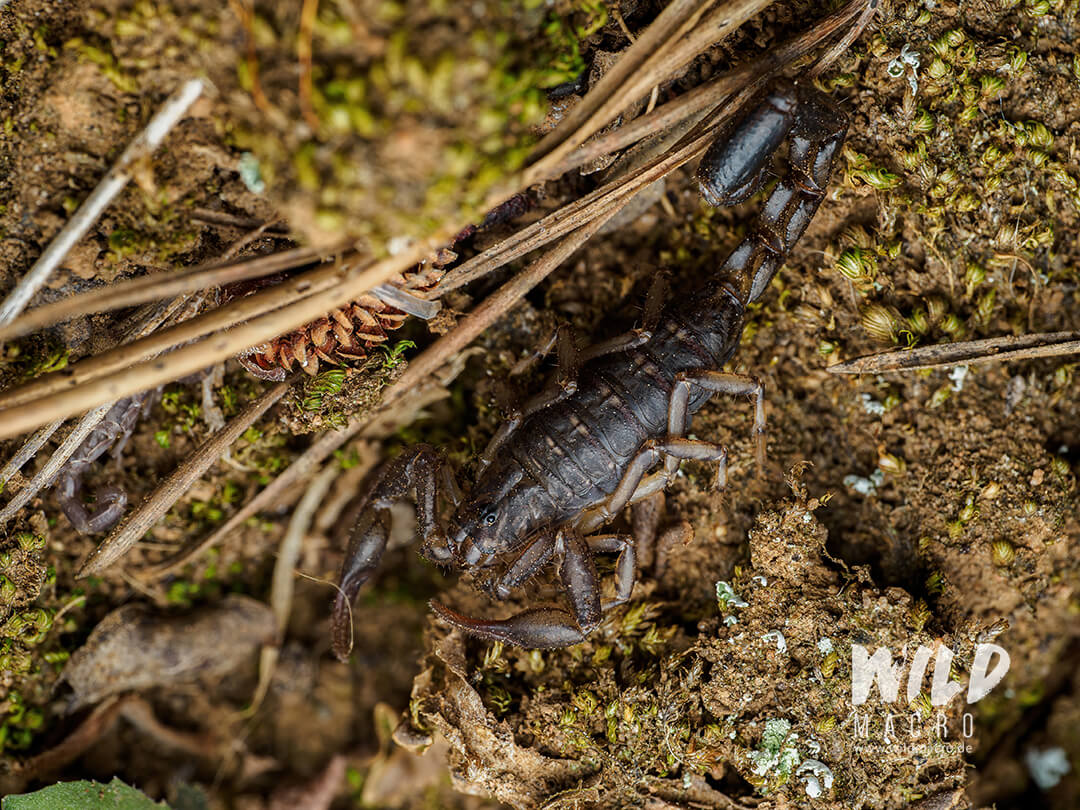
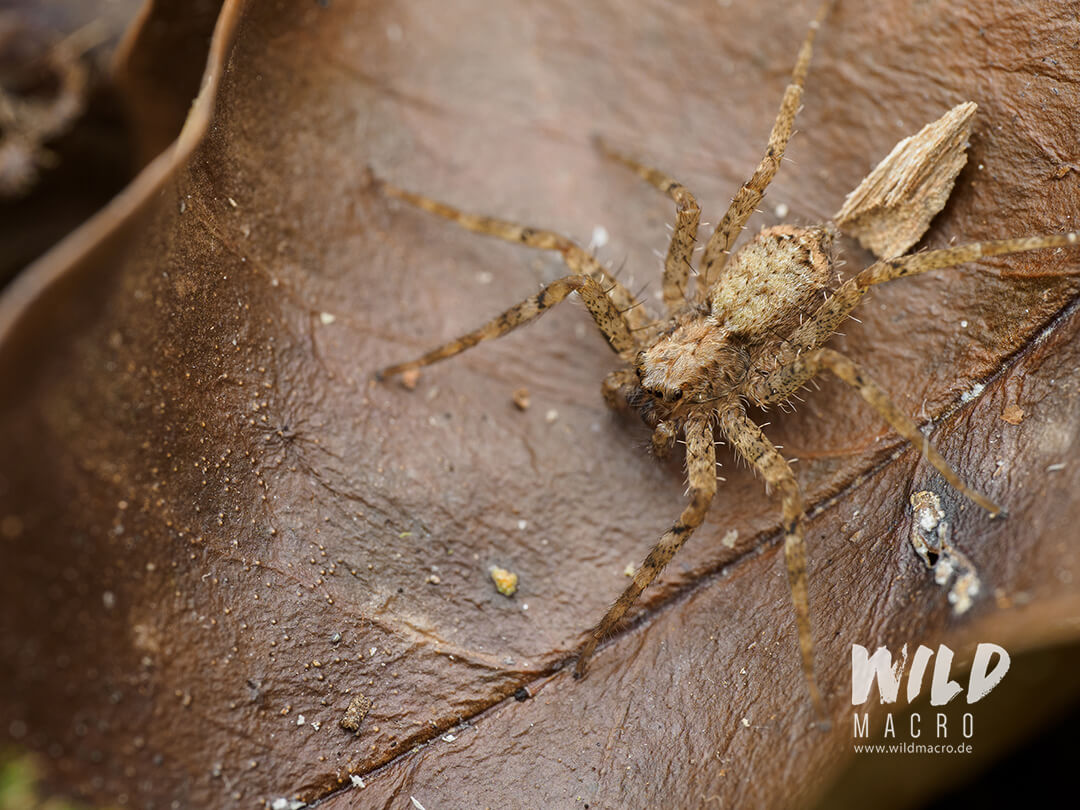
Even though I wasn´t able to identify this interesting looking spider yet, I suspect it to be an Ideocaira species, due to its triangular shaped abdomen.
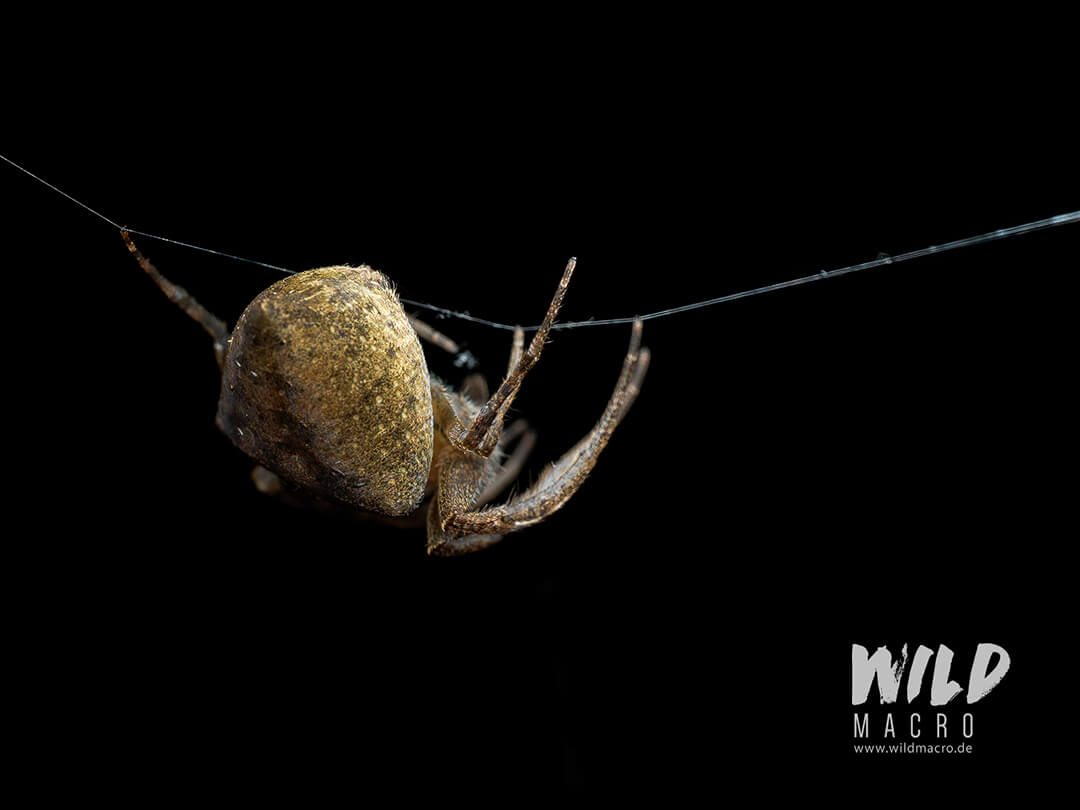
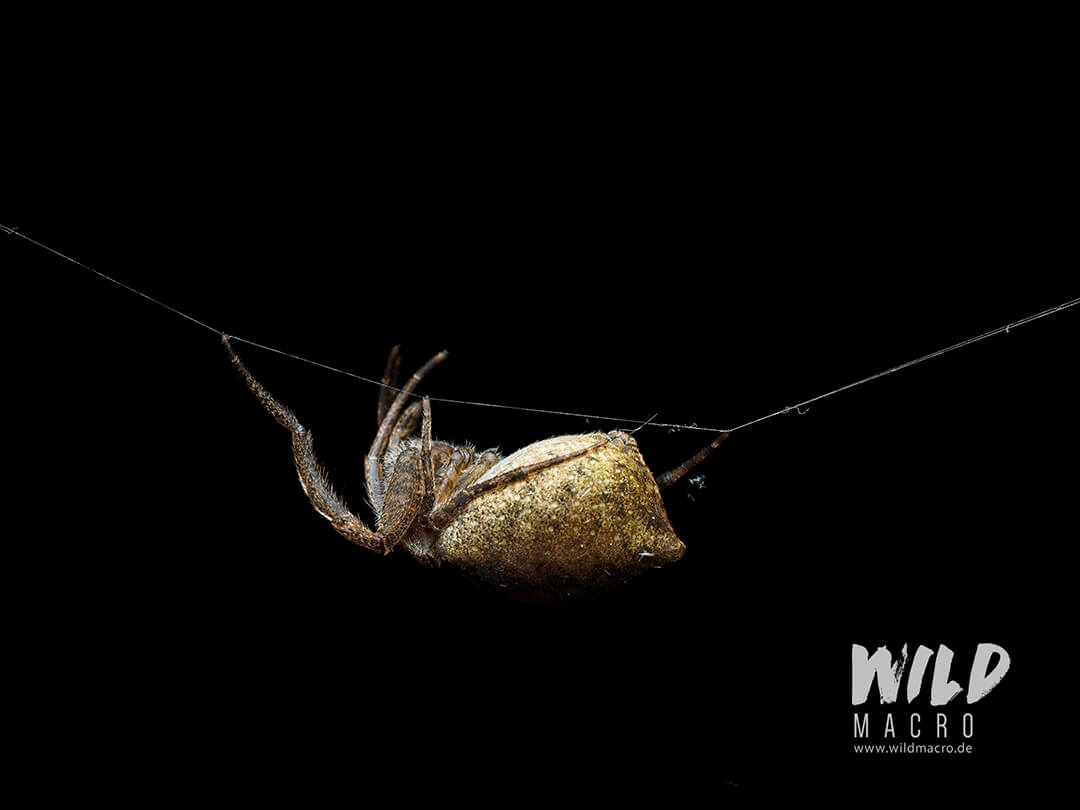
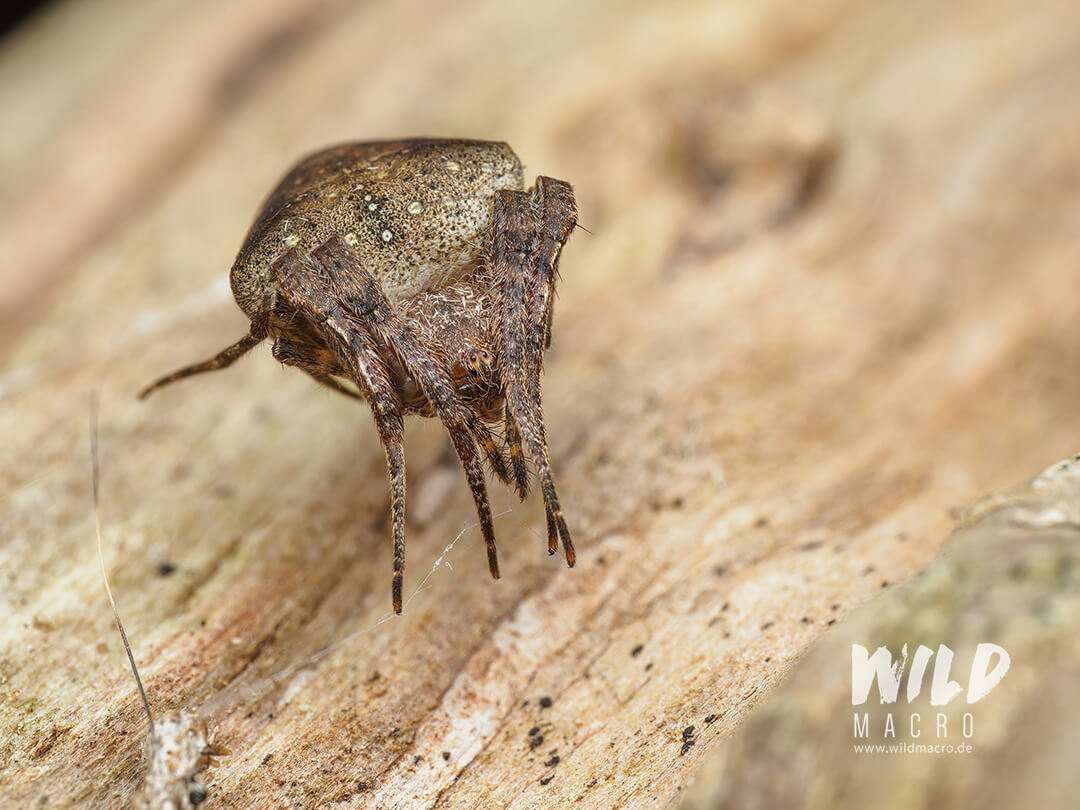
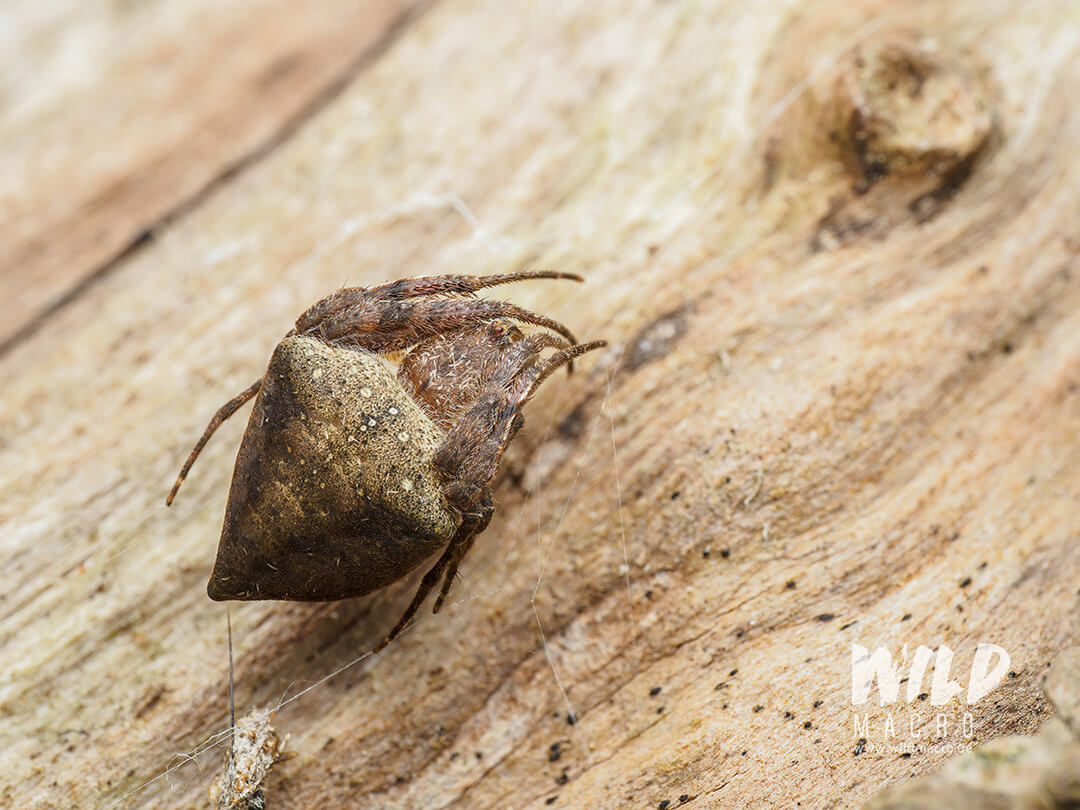
The same applies for this hairy spider, but my guess is a Neoscona species.
They build relatively big webs and make for stunning underside-shots.
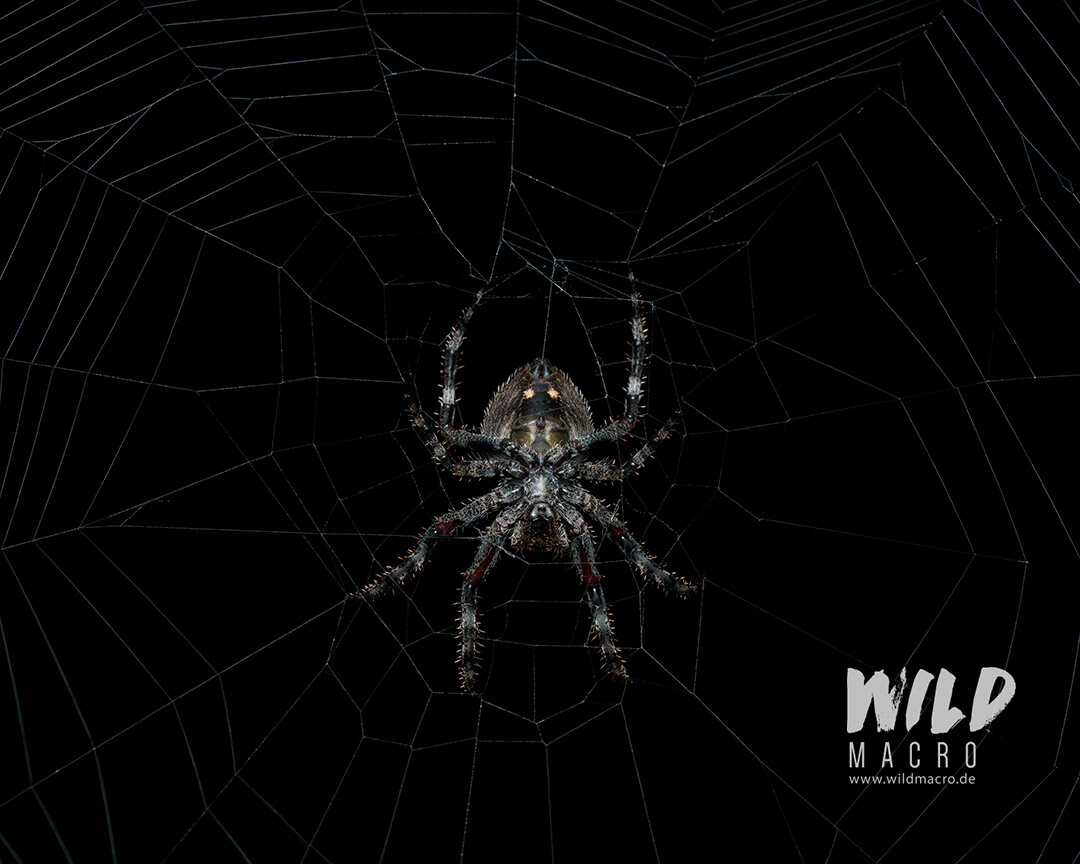
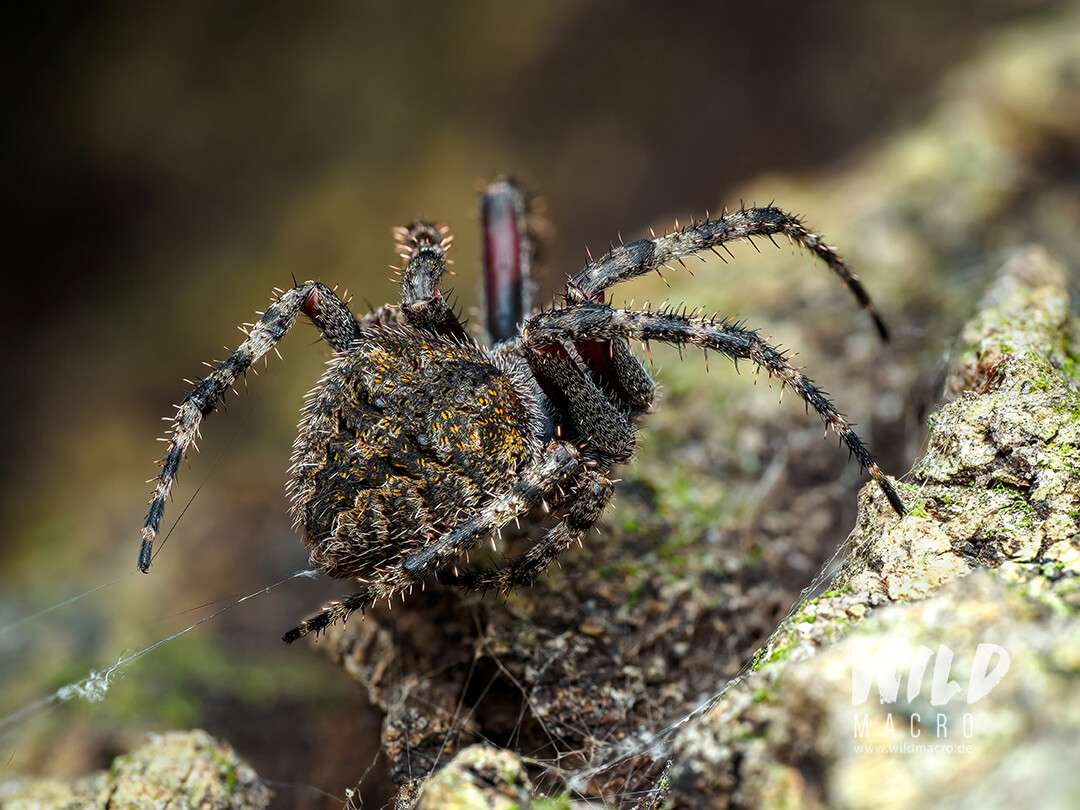
Uloboridae were present in high numbers, with varying sizes and appearances..

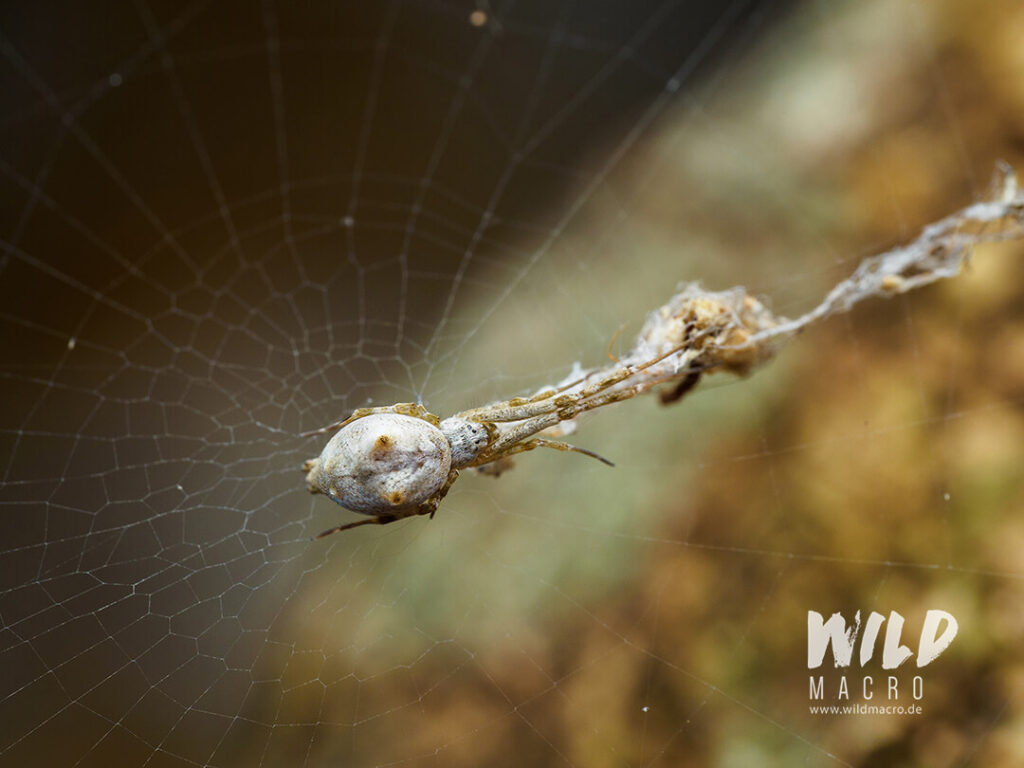
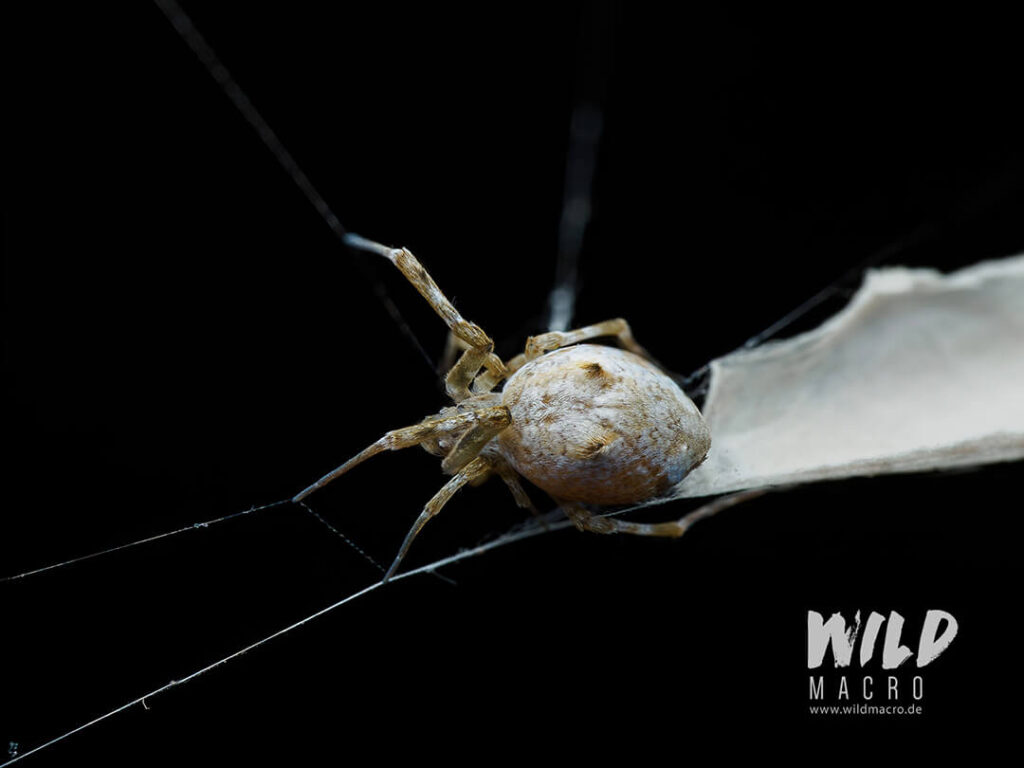
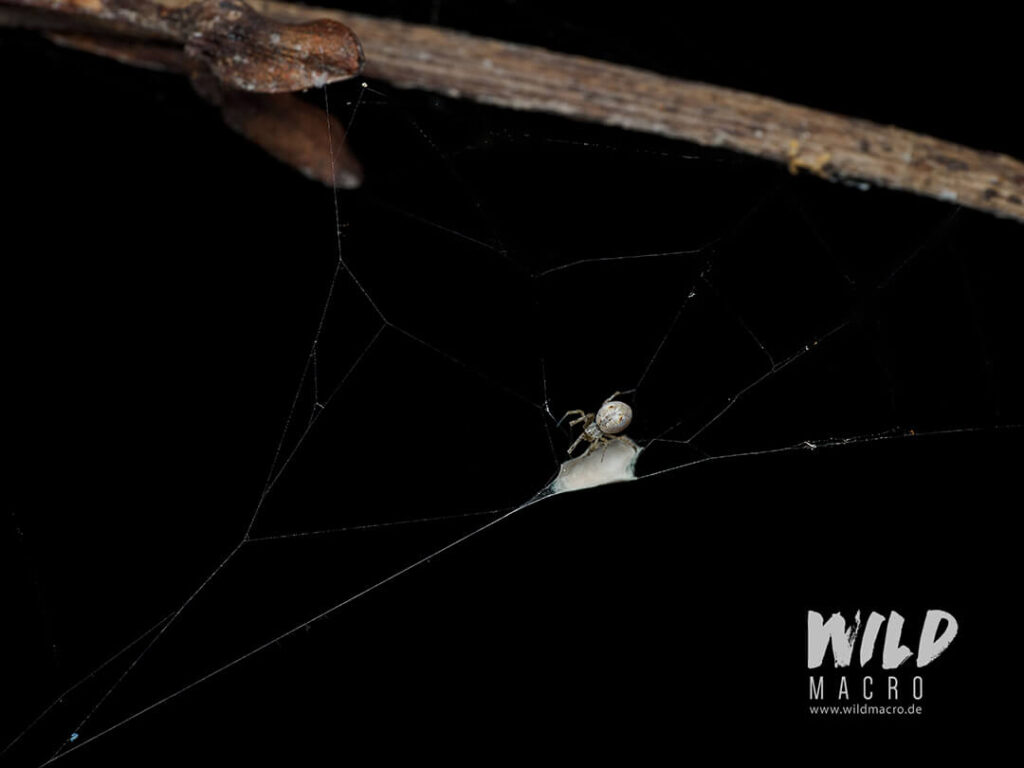
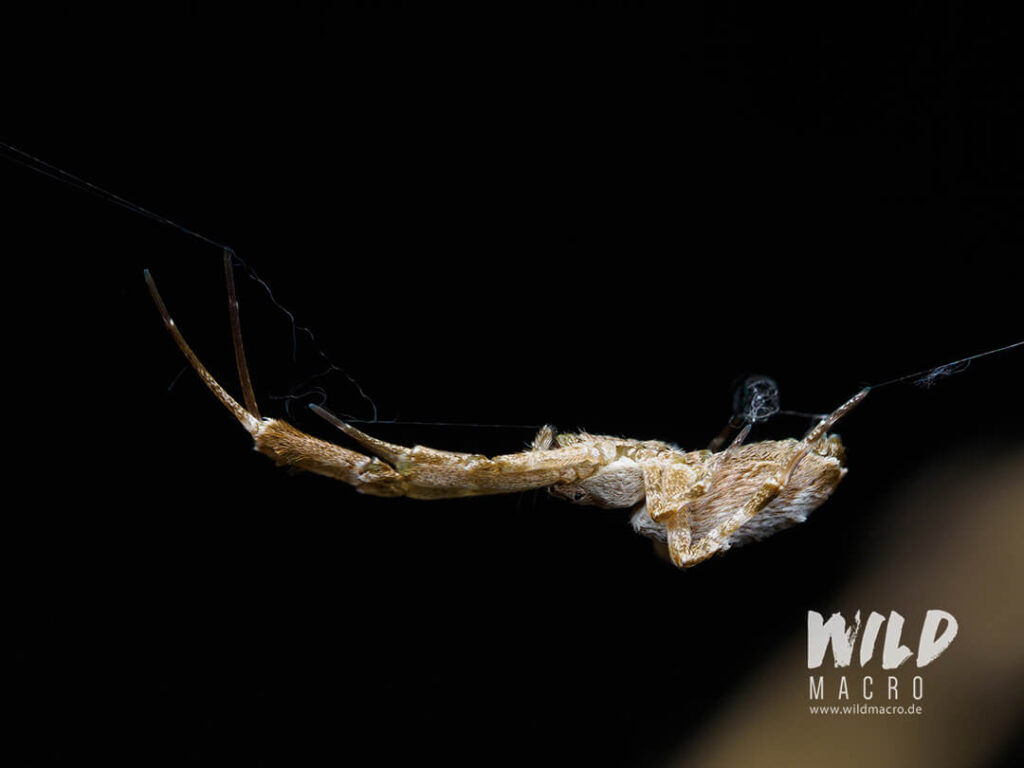

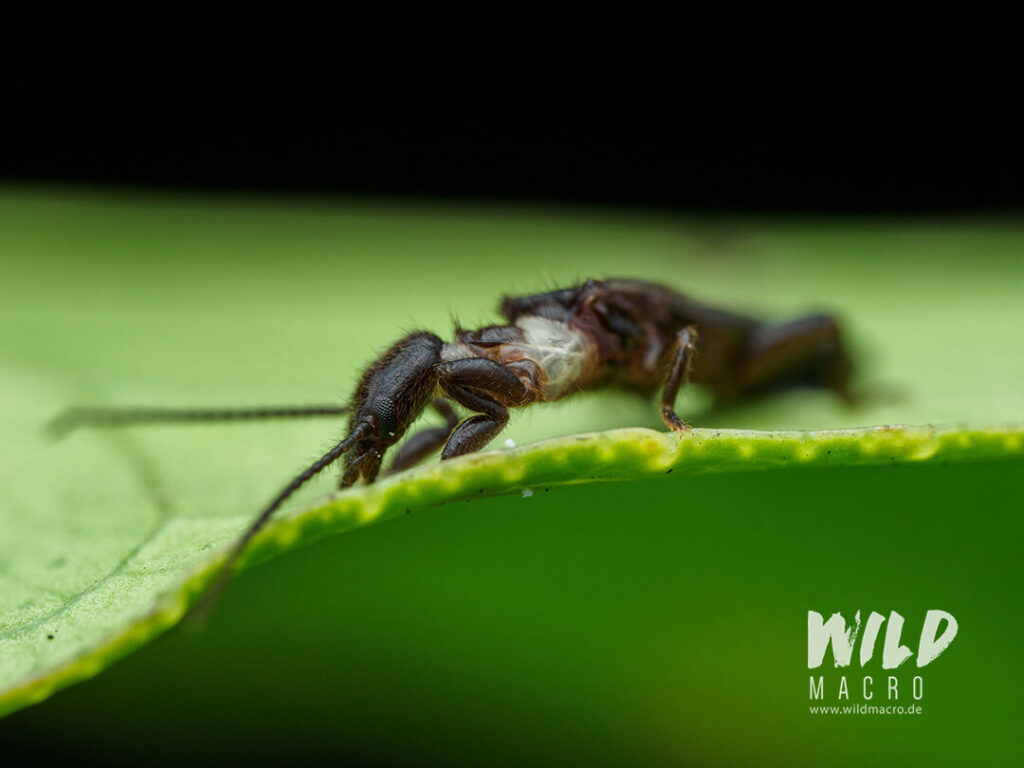
Aside from a surprisingly high number of active nocturnal creatures, there were dozens of dead insects to be found.
They were entangled in spiders´webs, eaten by predatory beetles, infected by fungus or dead from another of the countless causes of death.
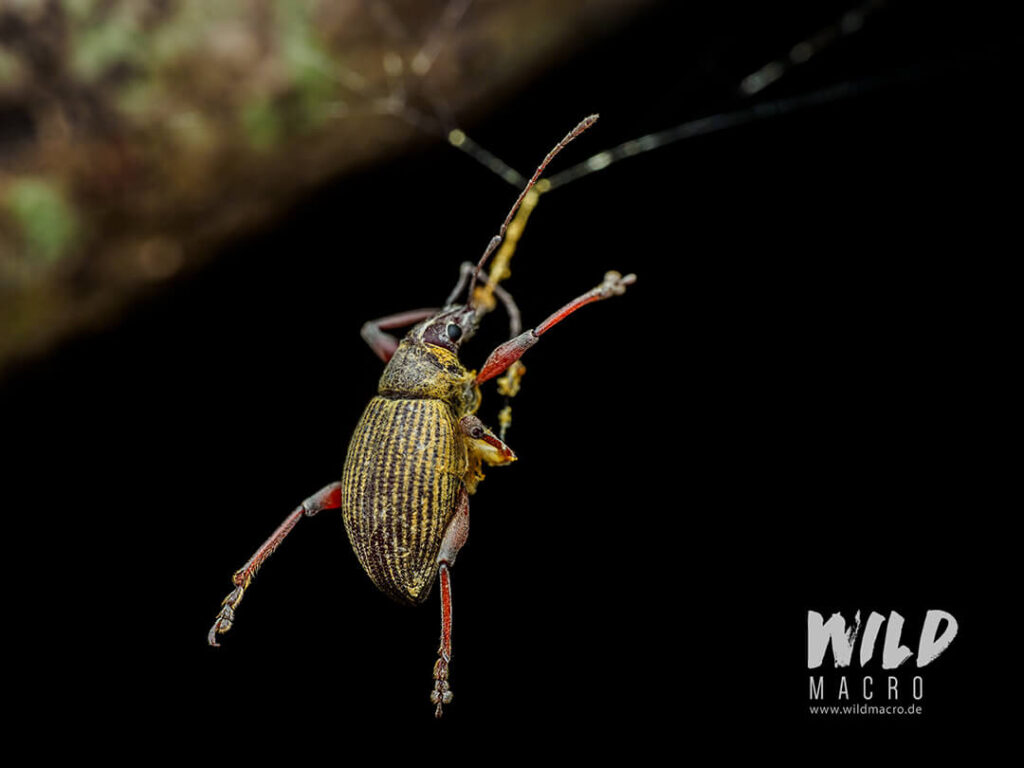
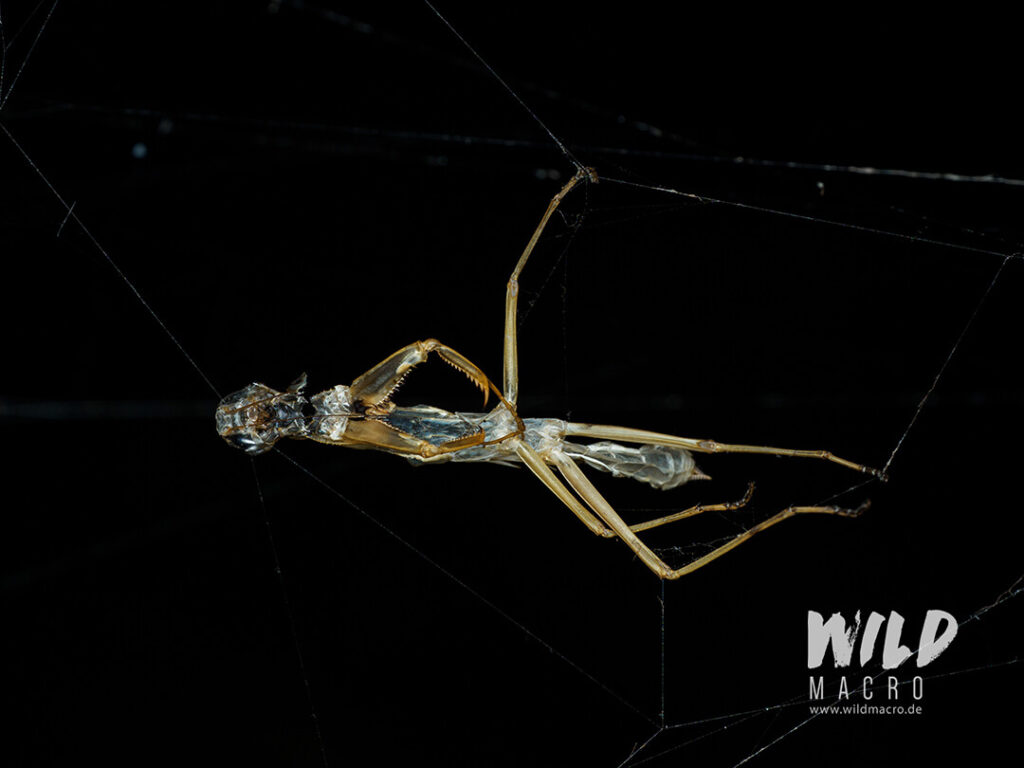
Traces of insects, like this exuvia of a cicada, could be found left and right.
Gear
For my 2023 South Africa trip, I took some (back then) new pieces of gear with me.
While I also had my trusty Godox V350O, I also tried the strongest speedlite in the Godox range for the OM System, the Godox V860III.
As I have already owned the V1 and the V860II, it was no surprise, that the V860III had extreme power and it would easily last through several field trips without recharging, thanks to its Li-ion battery.
The only downside for the lightweight and small Micro-four-thirds setup though, was the size, or, to be more precise, its height.
It made fitting my diffusers (I had the Cygnustech diffuser and the AK diffuser with me) a challenge and ultimately resulted in me using the V350O again.
Combined with a short lens, it is not easy to get the lighting right for this tall flash.

I will definitely try the V860III again with the OM System M.Zuiko 90mm macro lens though, as this one is longer, has an increased minimum focusing distance and will most probably also require a new diffuser.
Update:
In the meantime the M.Zuiko 90mm IS PRO has been released and i use it for 80% of my shots now – together with the V860III and a custom fitted Diffuser.
My main lenses were the M.Zuiko 60mm macro and the Laowa 50mm macro.
I also had the M.Zuiko 8-25mm 1:4 PRO and M.Zuiko 40-150mm 1:2.8 PRO with me, for wide angle macro and bird photography but did not get many opportunities to use them to be honest.
Unfortunately i lost most photos taken with these, when my HDD failed.
Another piece of gear which i purchased just in time, was the Peak Design Capture Clip V3, as I was looking for a solution to carry my assembled setup, without having to deal with a neck-strap or packing it into a tote bag or even in the backpack.
With its compact size it seemed to be the better purchase compared to the Cotton Carrier Harness (though I want to try that one out as well).
I attached it to my backpack strap in absolute darkness and even mounted it upside down, which made clipping the camera in a bit more challenging BUT it still worked and instantly convinced me I had bought a great piece of gear.
It will definitely be my carry companion on every trip from now on.
Conclusion
I simply love Cape Town and the surrounding habitats.
It is not only a beautiful city, with endless activities, adventures and wonderful food and wine, but also the perfect base for field trips to discover the tiny world.
Just like in the years before, I found and photographed species I had seen already and also found new ones.
I never fly home disappointed when it comes to my macro photography.
Even if I only manage to sneak a couple trips in between family time, I always find species that leave a lasting impression on me.
Oh, Cape Town, i miss you already and hopefully I will be back soon.
More Macro Photography in South Africa / Cape Town
Sign up for the newsletter mailing list & free ebook

Did you enjoy these tips and want to learn more or improve your macro photography skills?
Stay up to date with new blog posts, reviews and tutorial- and ebook-releases.
Sign up below to get notified when the free edition of my ebook
‘How to master spider & insect macro photography’ is ready for download.



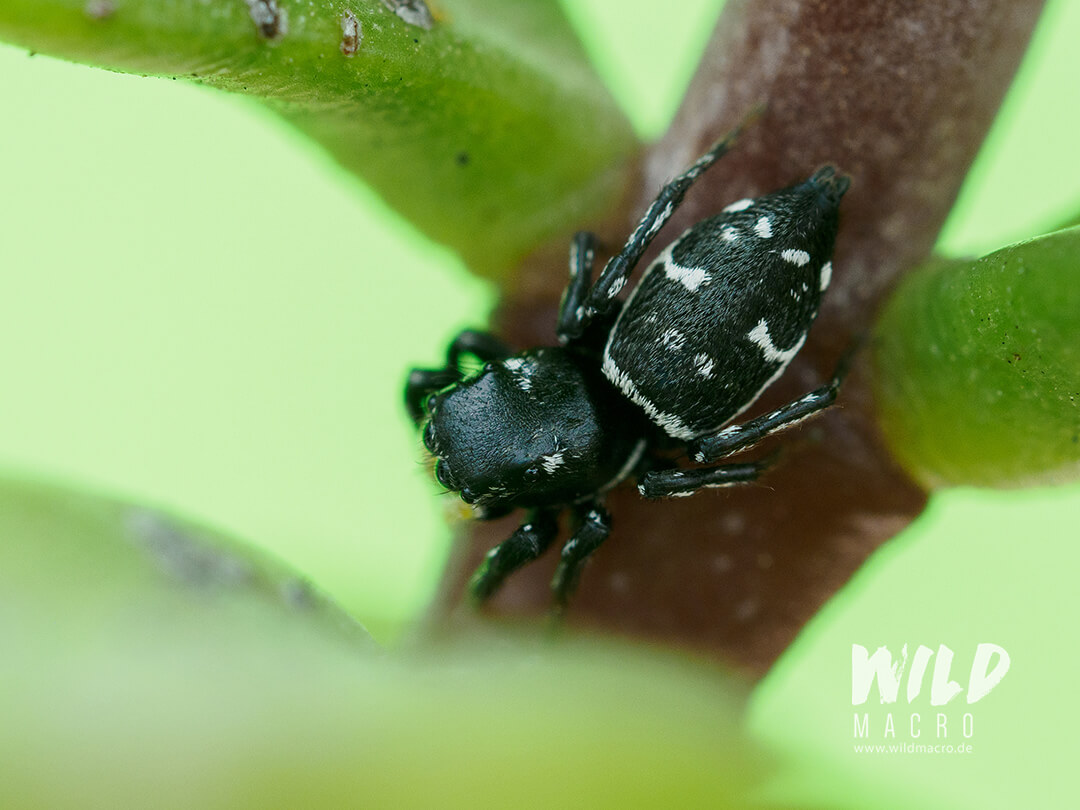
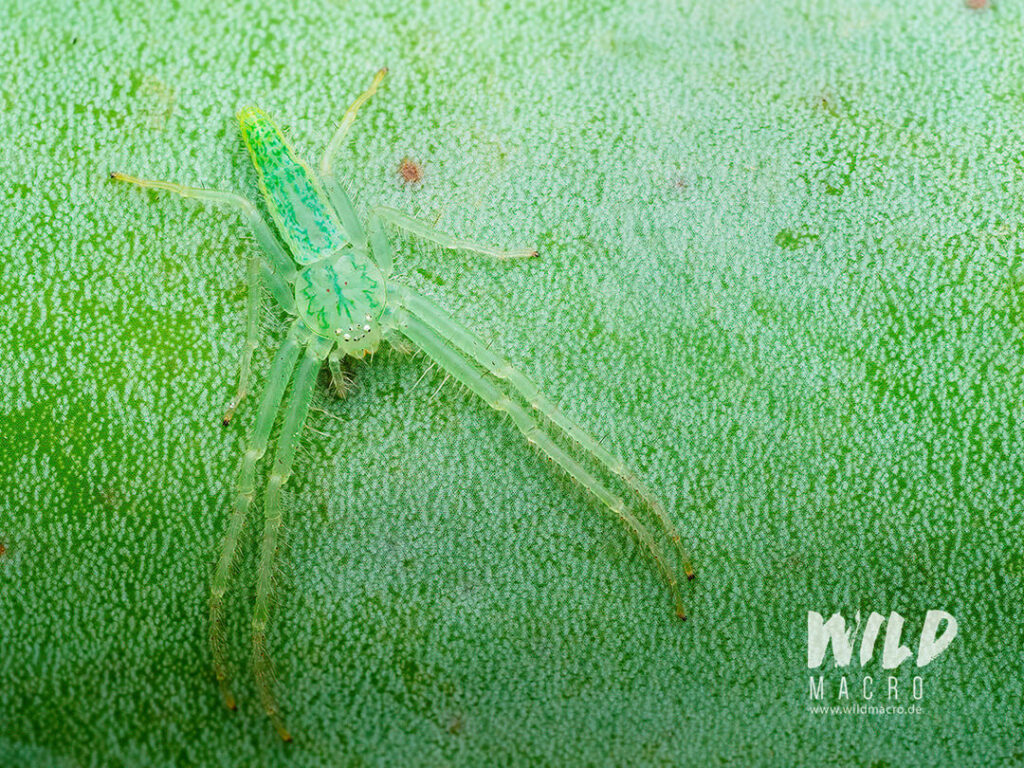


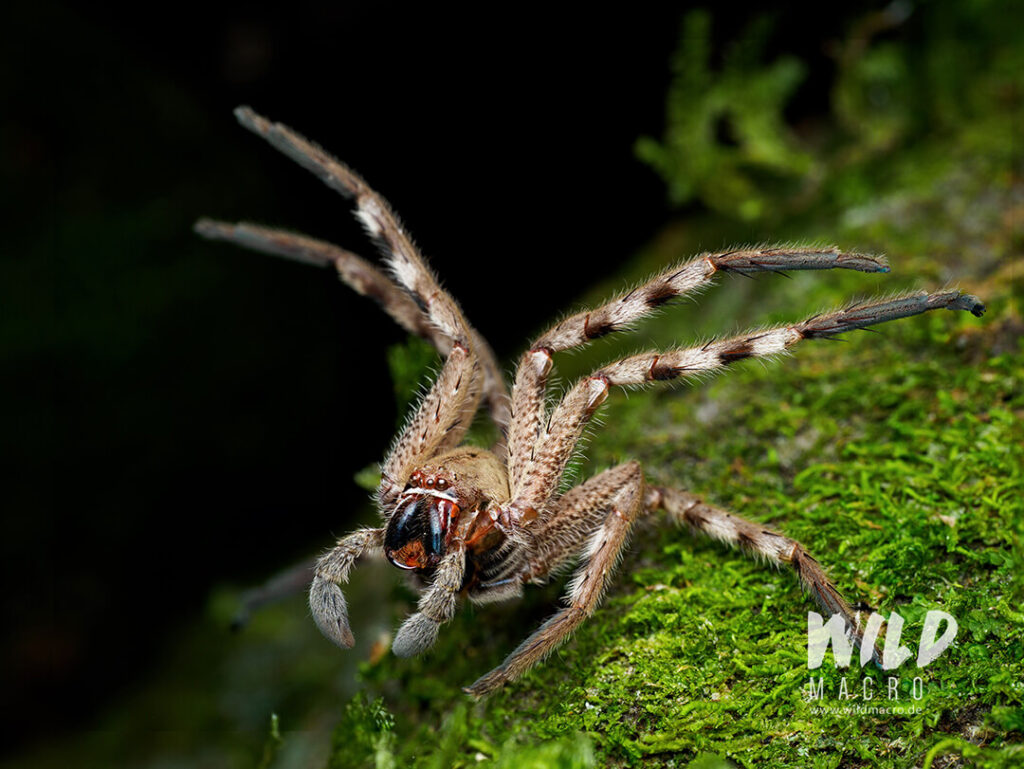
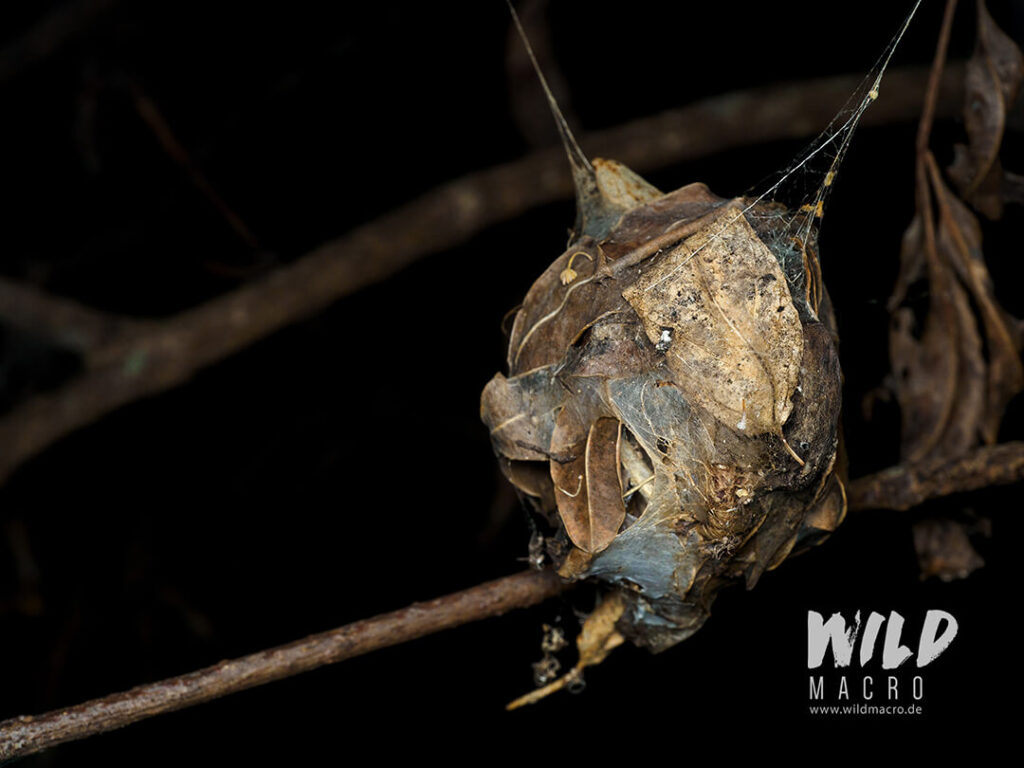
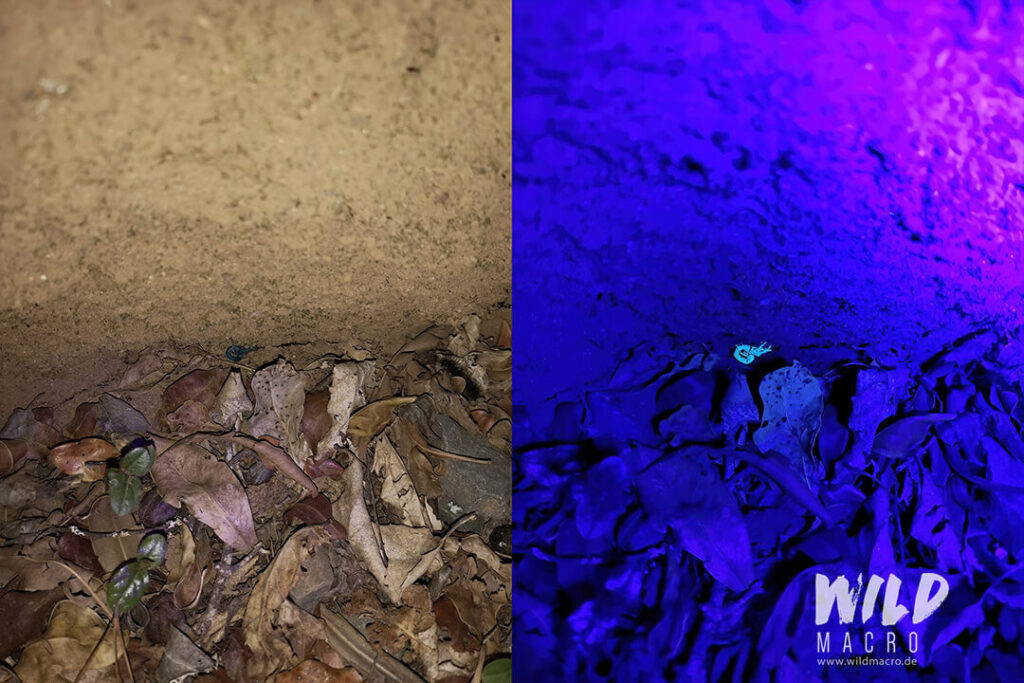
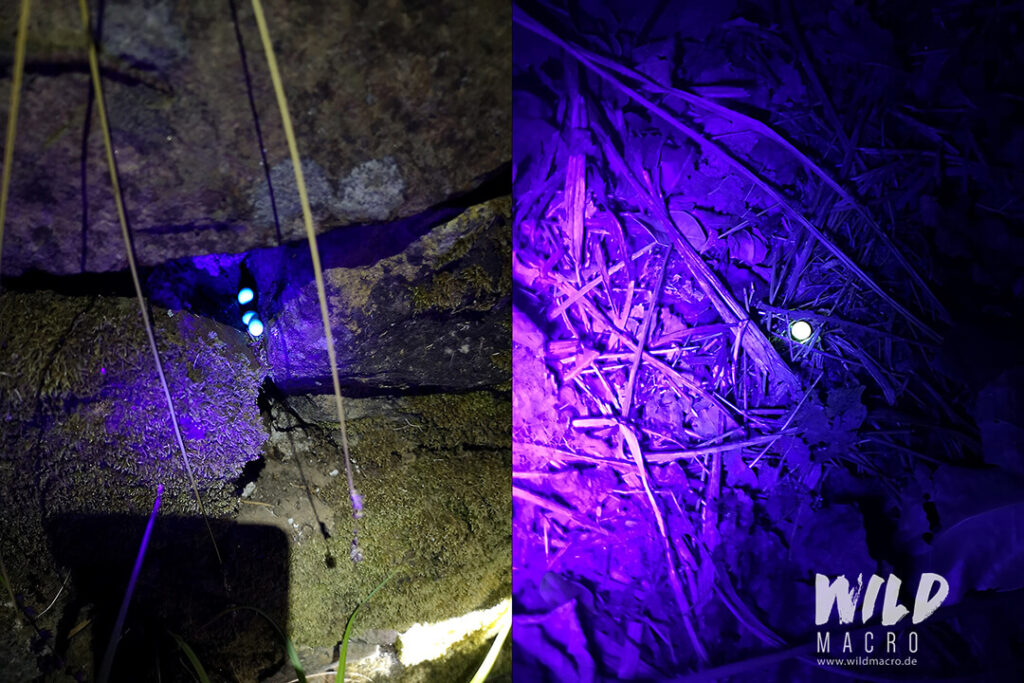
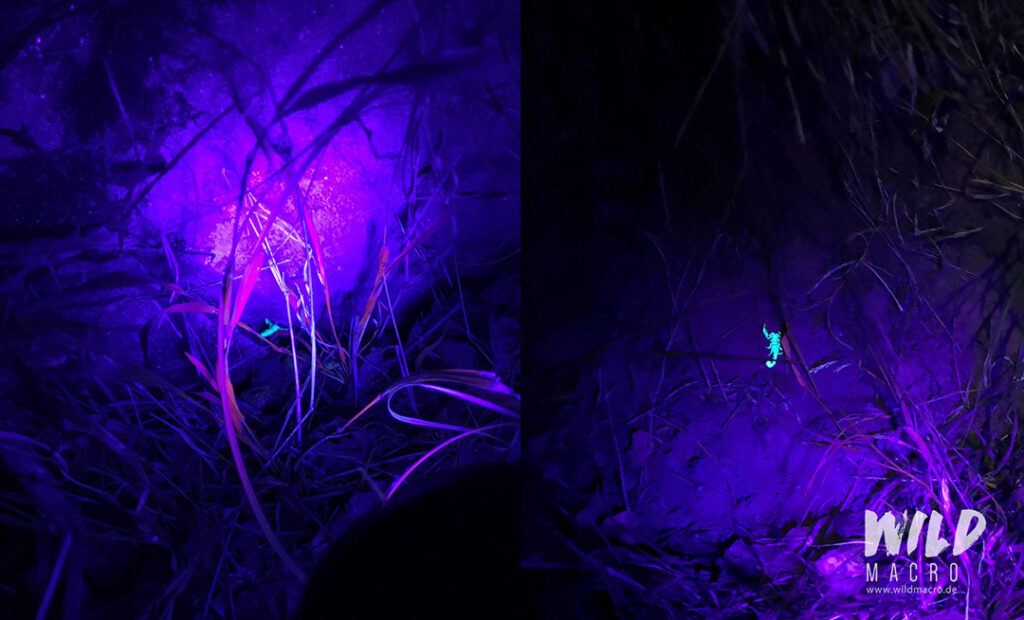
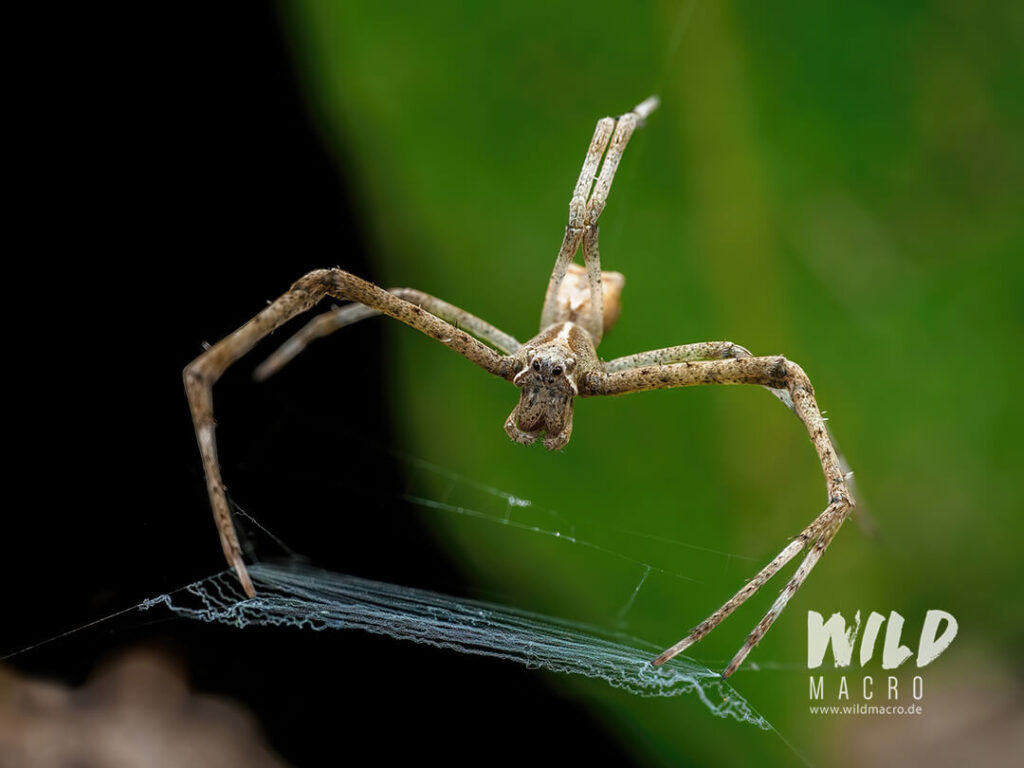
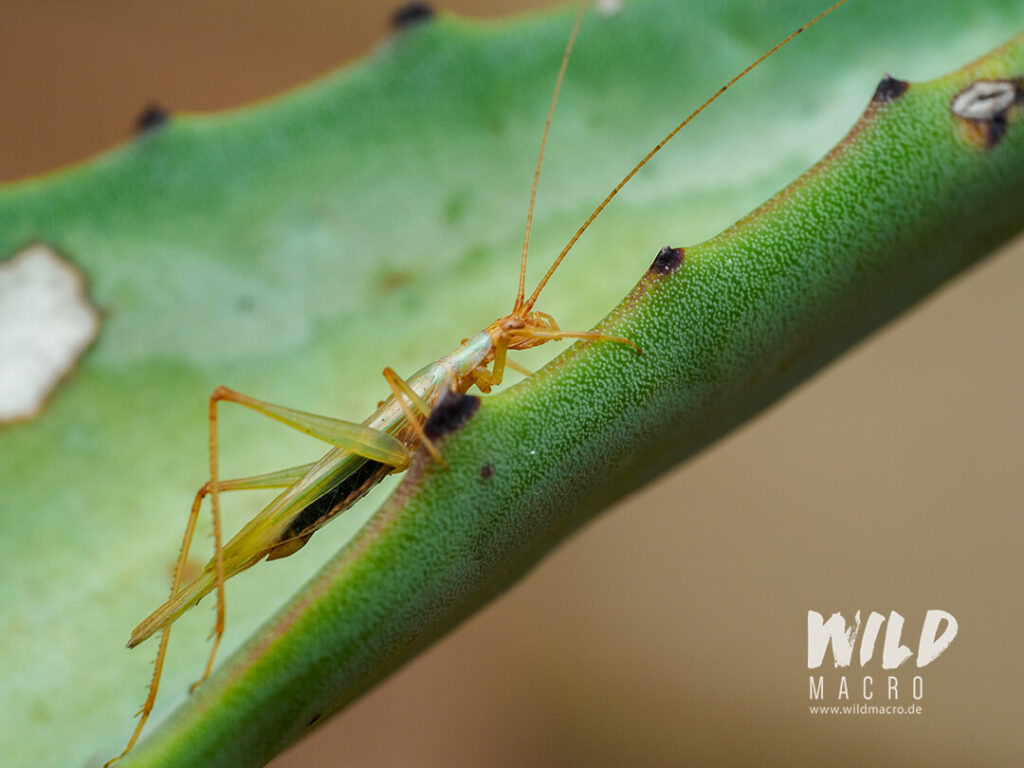
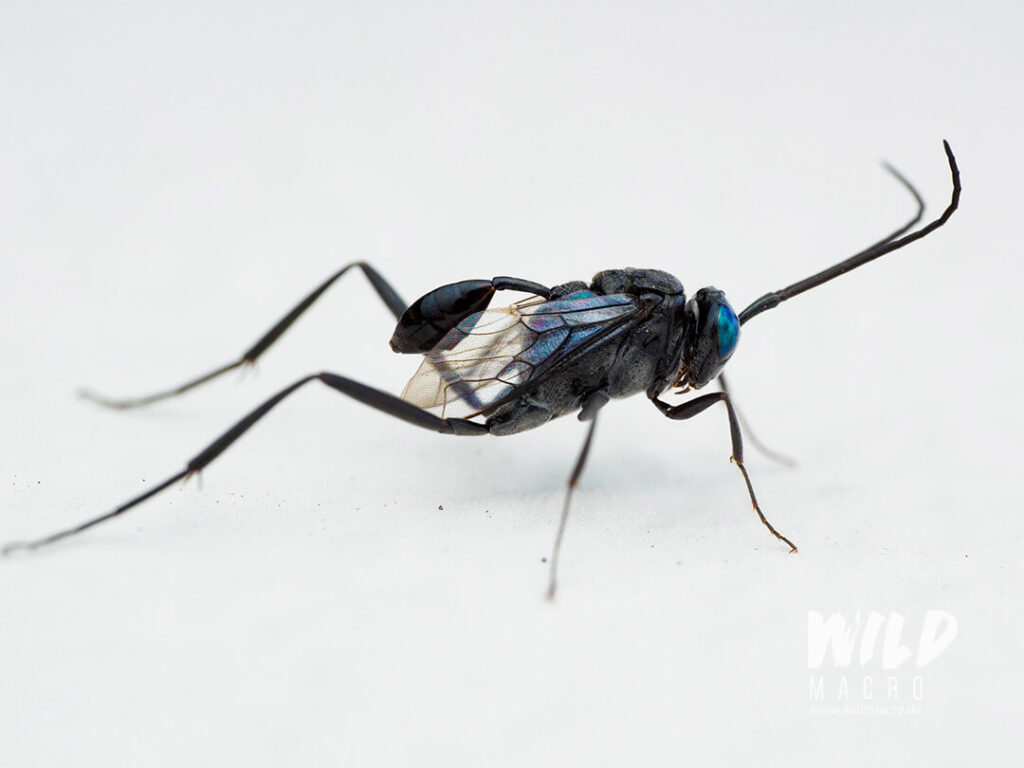
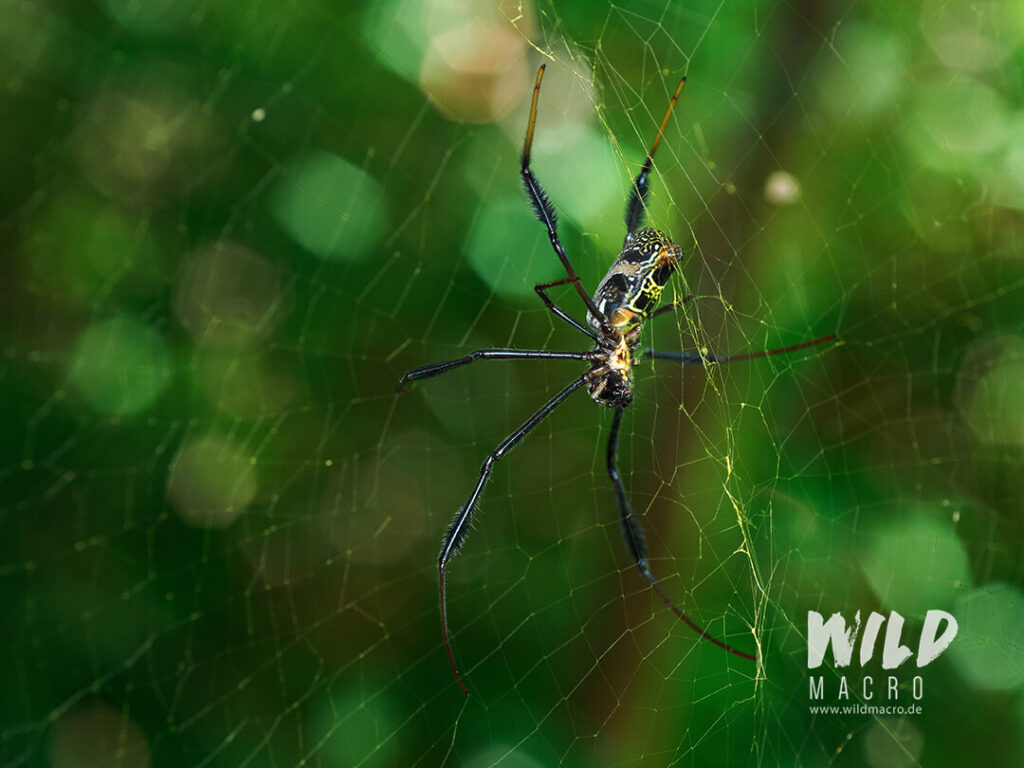
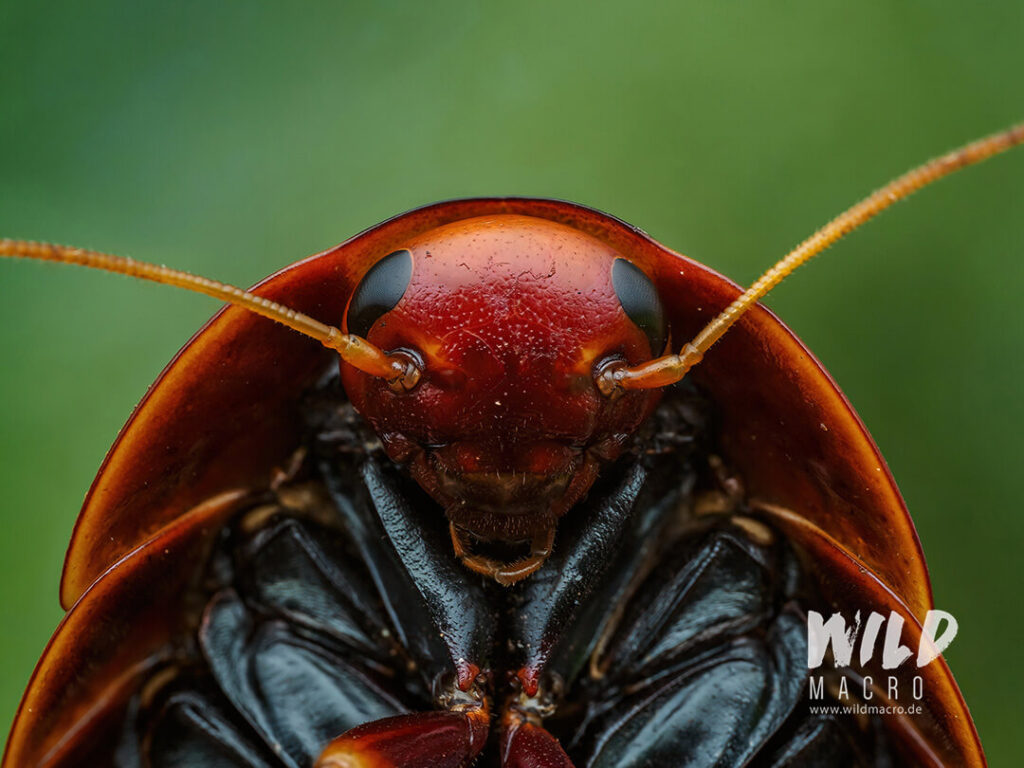
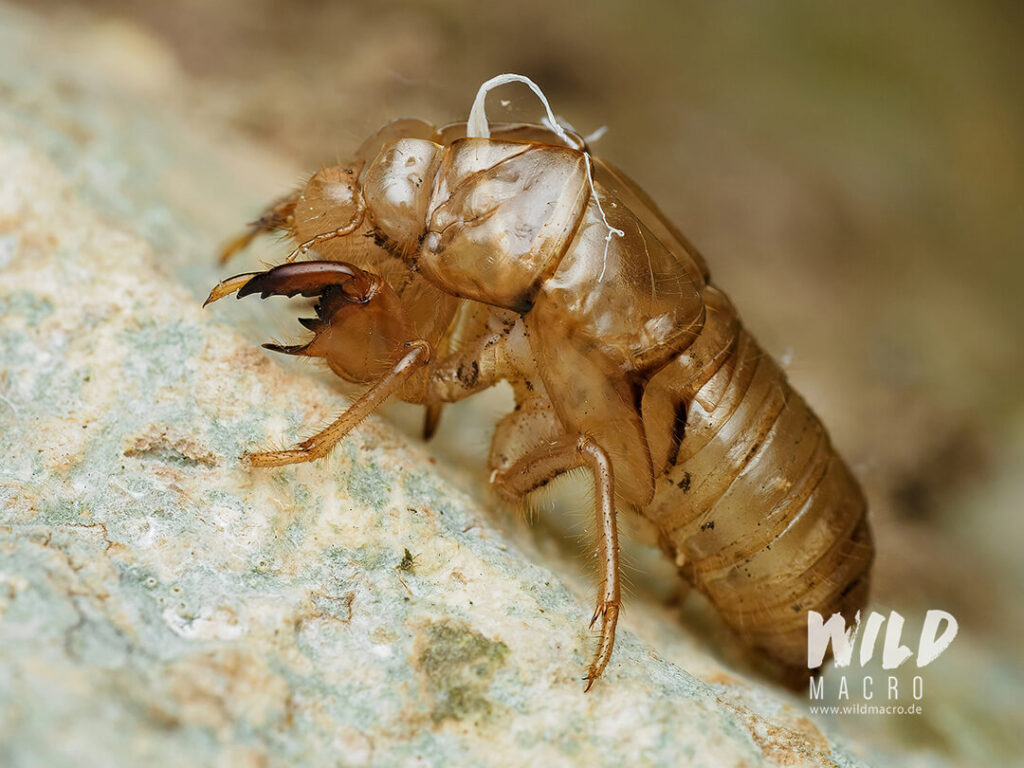
Christine Gaukroger
Posted at 12:27h, 29 MayHi,
What I love about your macro photos of spiders is it shows their faces clearly and I can see individual character in each face.
I have tried to sign up to have notification for the free edition of your book “How to master spider and insect macro photography” but it keeps telling me the security check does not pass. As I am signed up to your email posts will it come to me in any event please?
Thanks.
Christine
wildmacro-chris
Posted at 15:42h, 30 MayHey Christine, thanks for your kind feedback.
Regarding the sign-up, yes that´s a plugin that creates an error, but signing up should still work.
You will get the notification on the free version of the ebook as soon as it´s ready and it will come like all the regular newsletter emails.
I just need some more time, as I am super loaded with work lately – i wish it was done already – I promise, you won´t miss it 😉
Have a great weekend and thanks for your support.
Chris